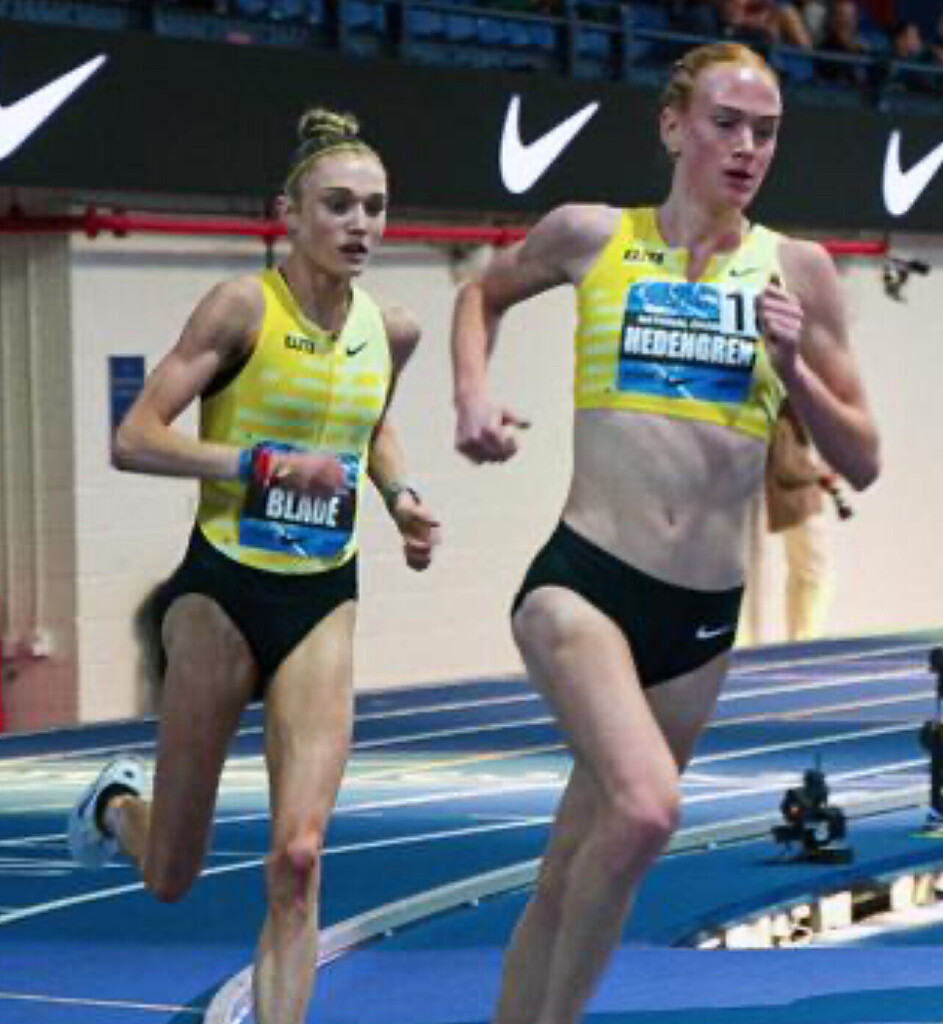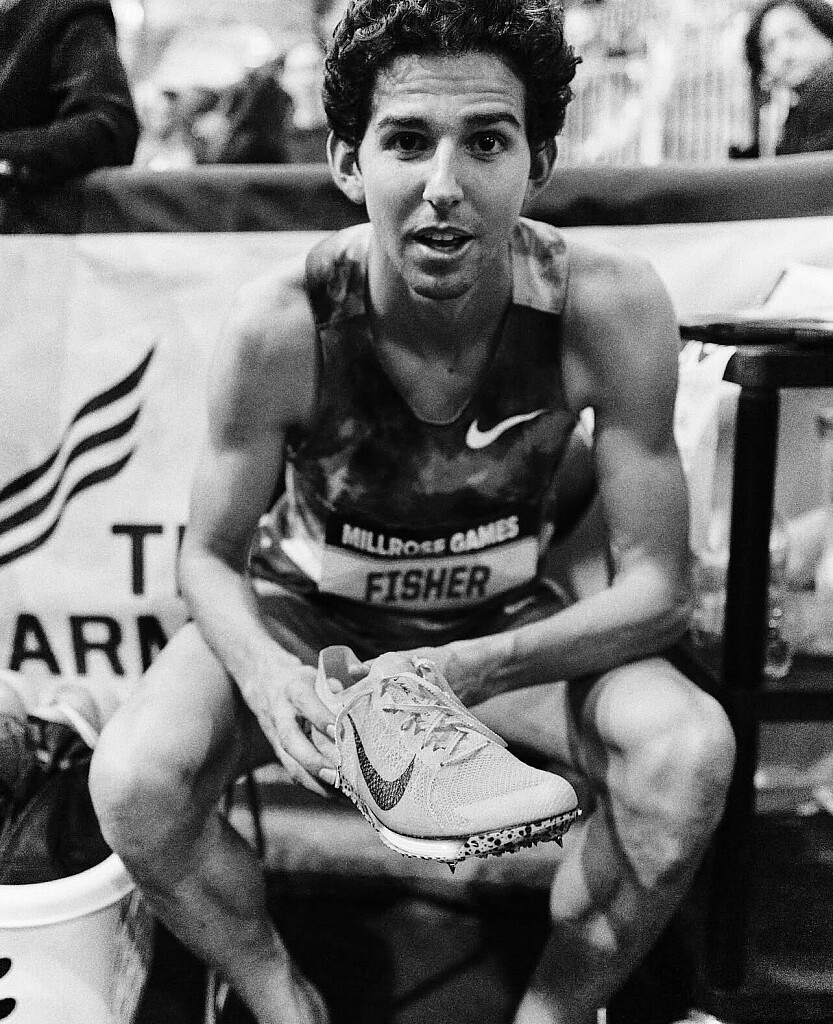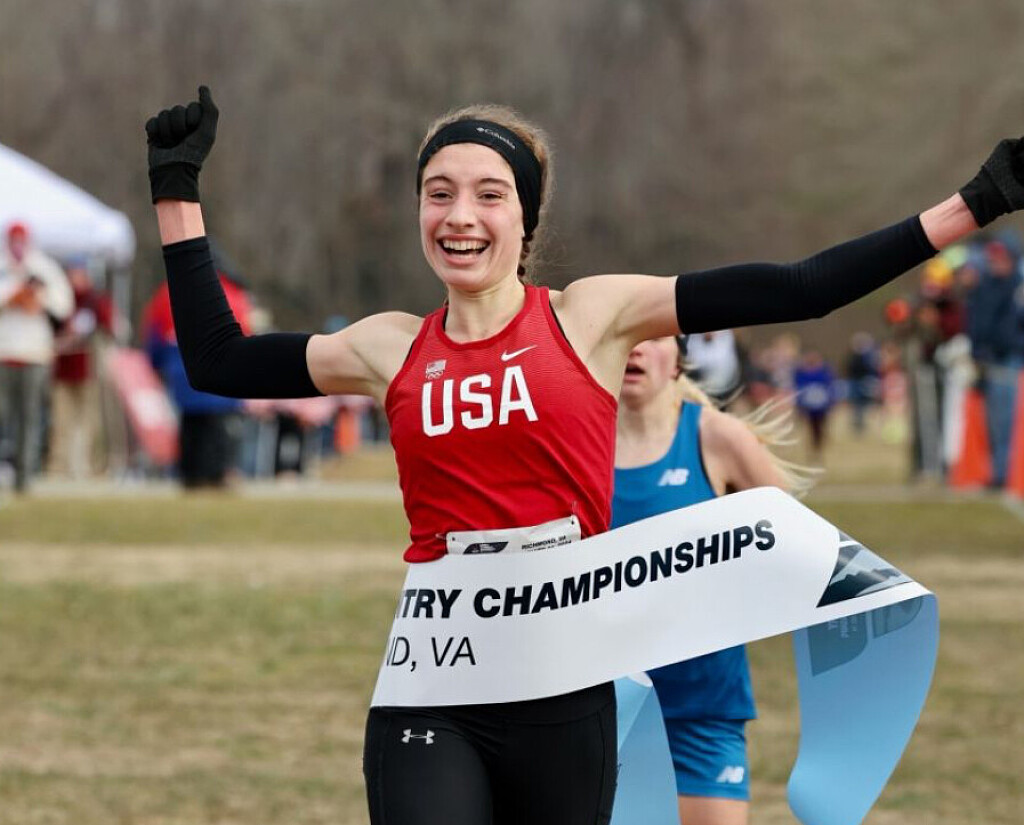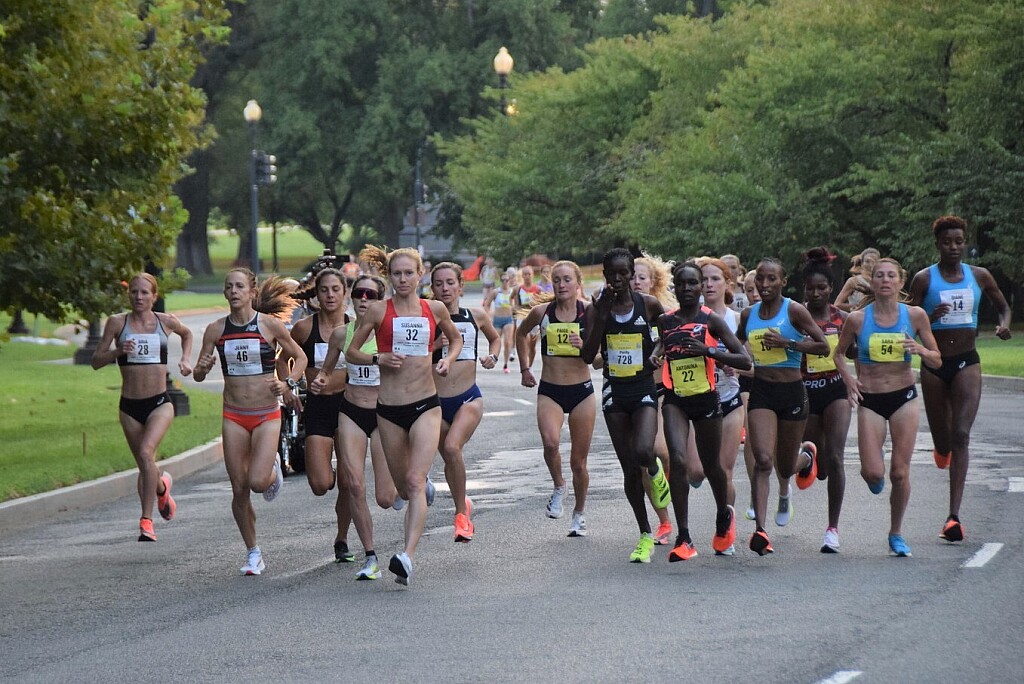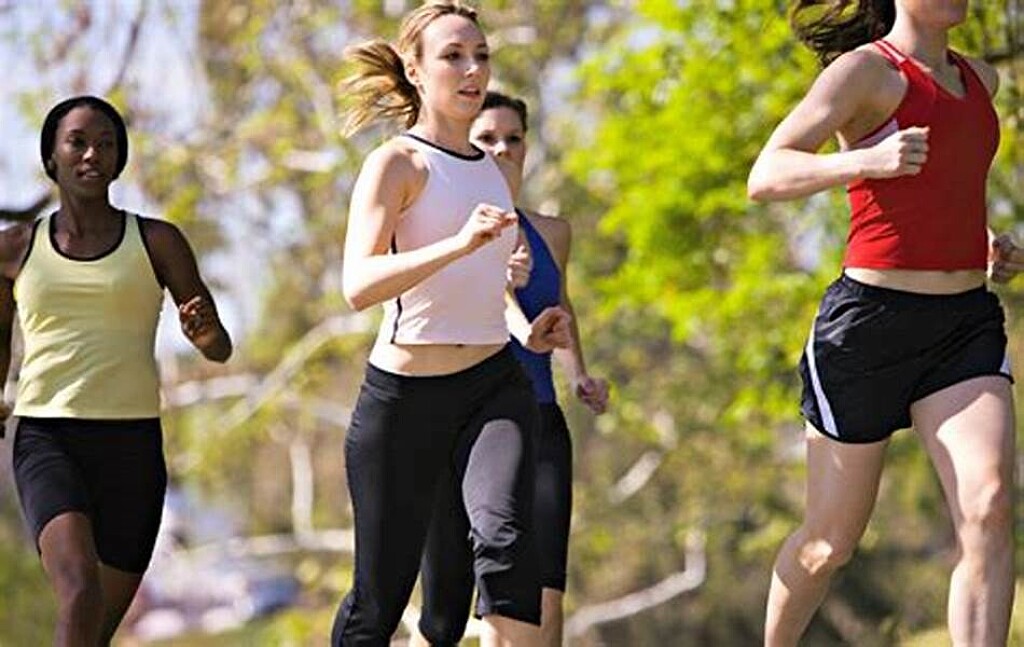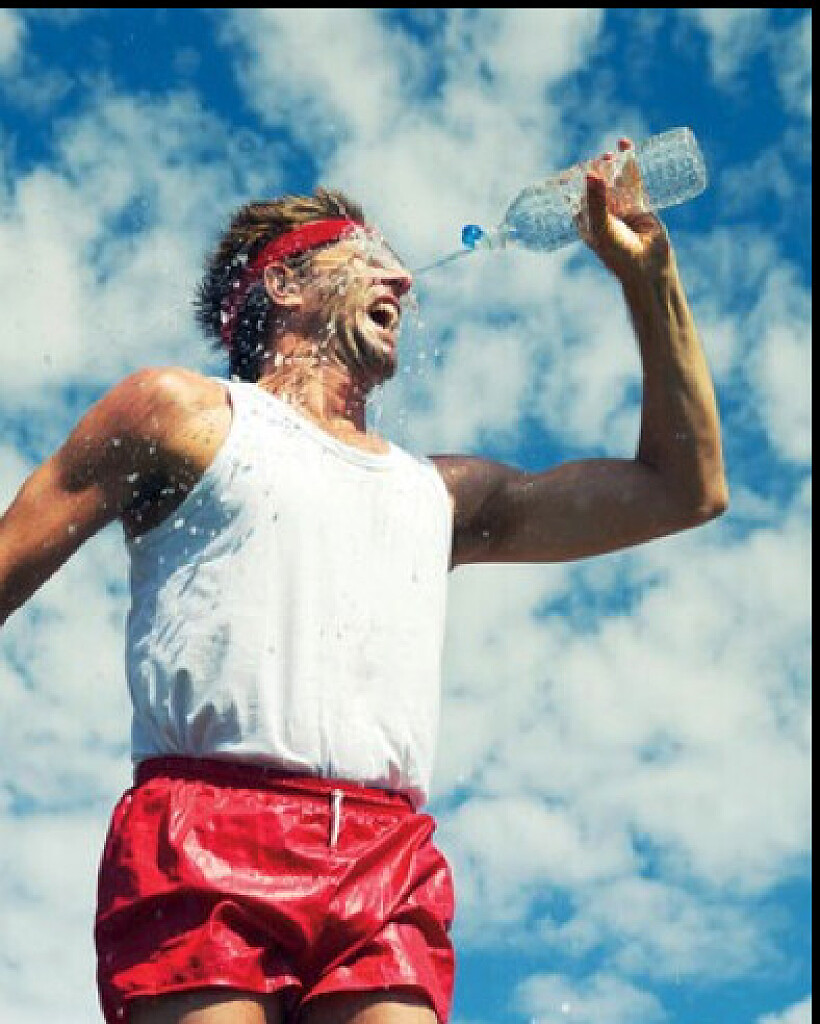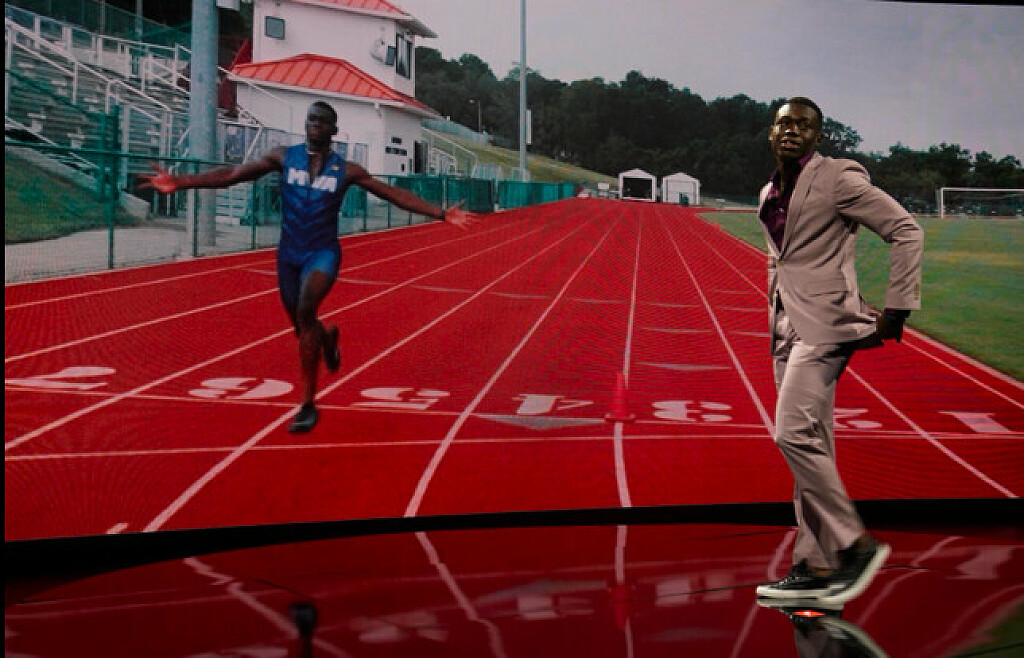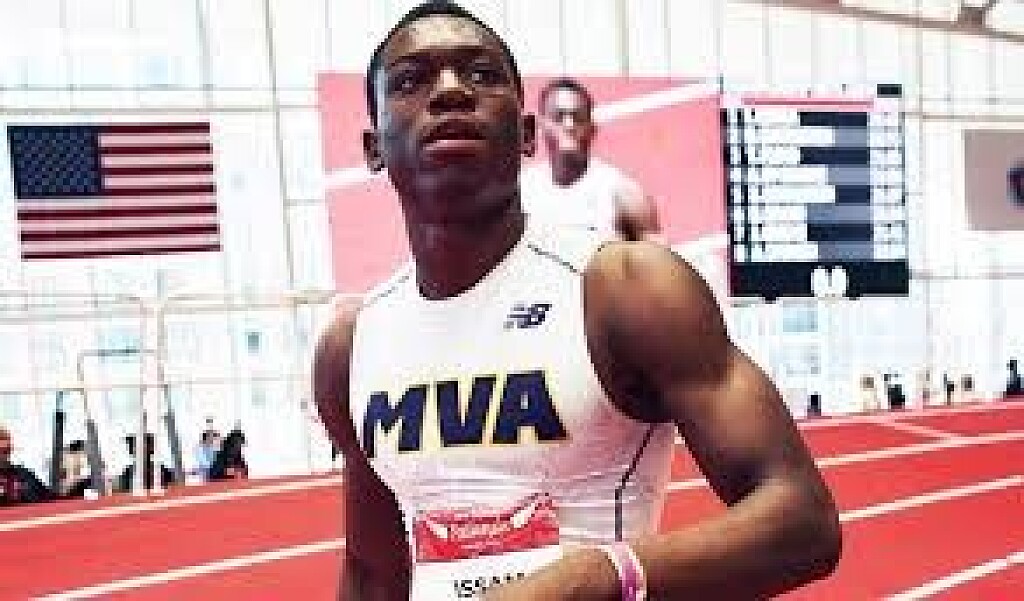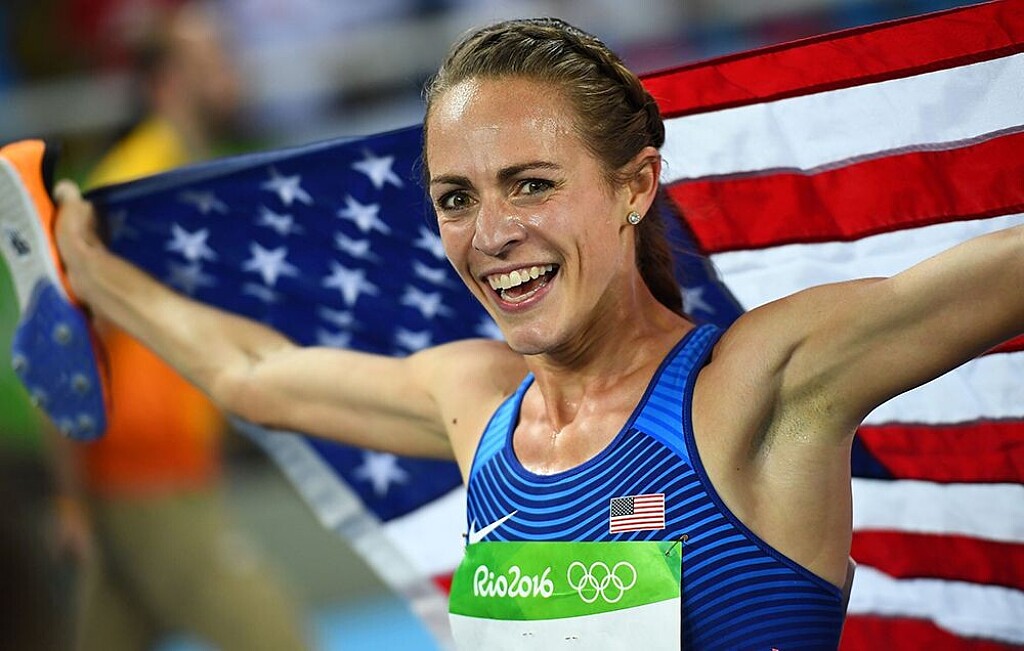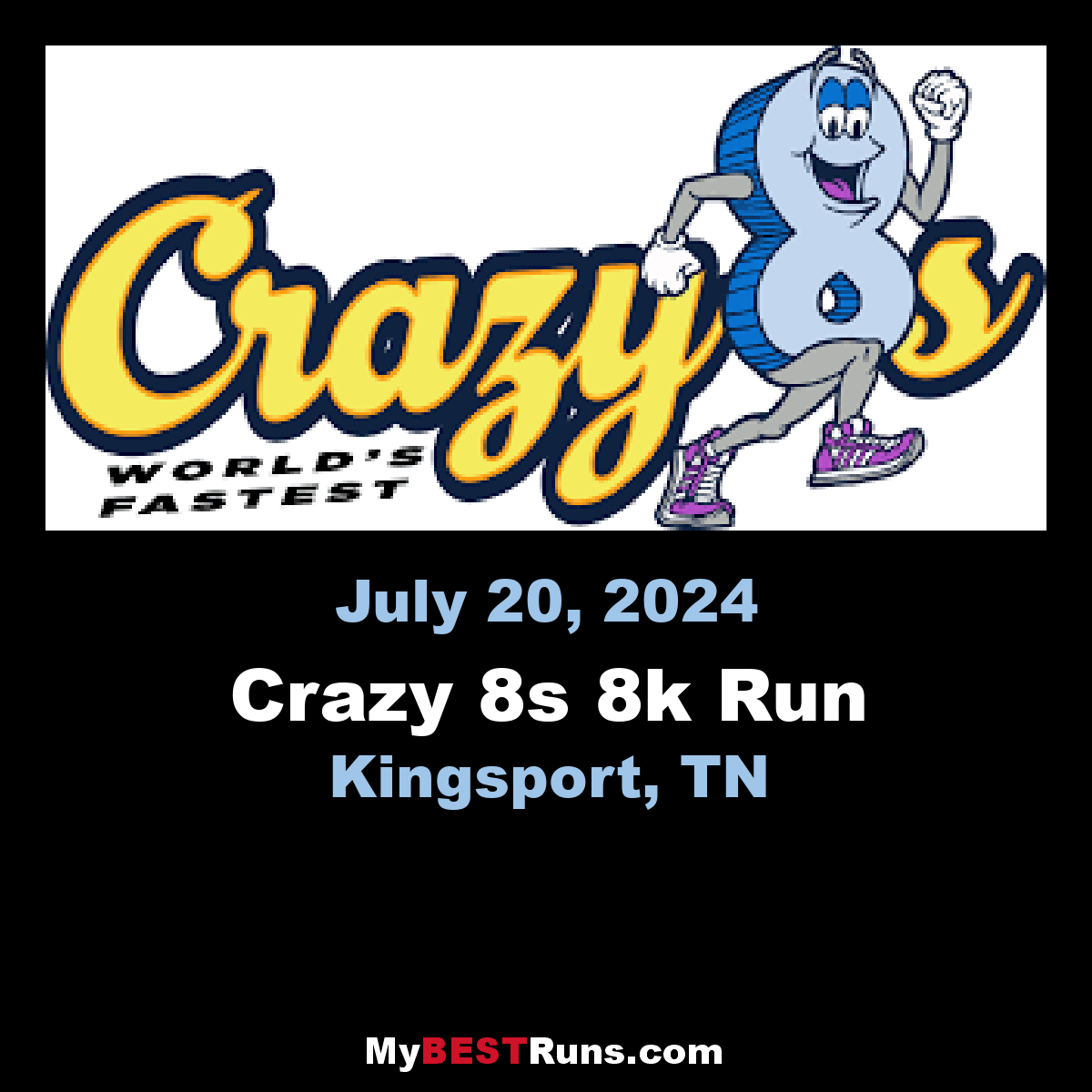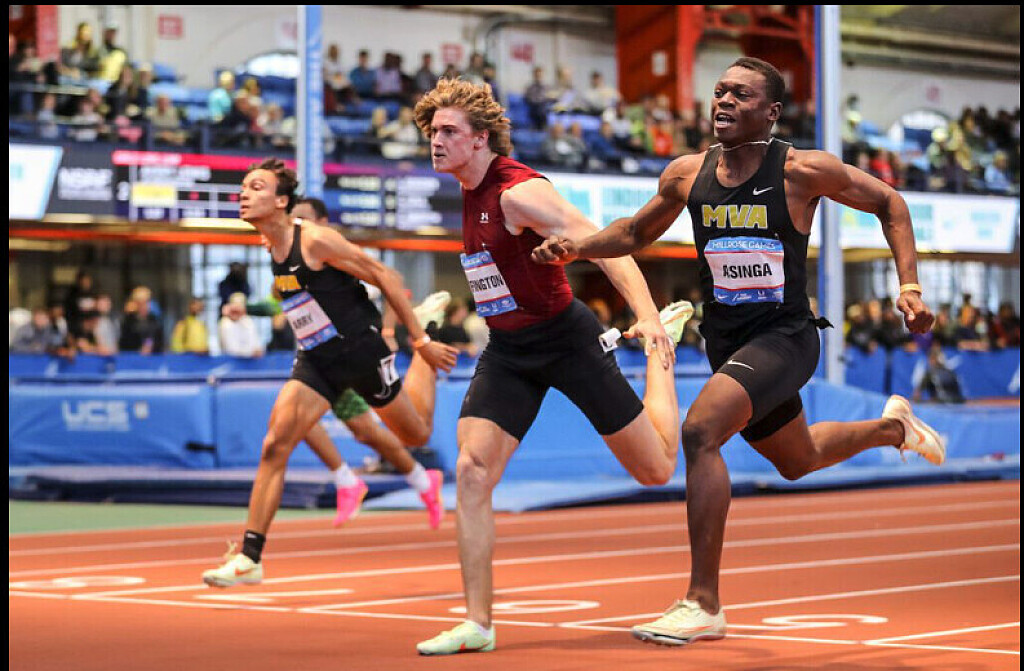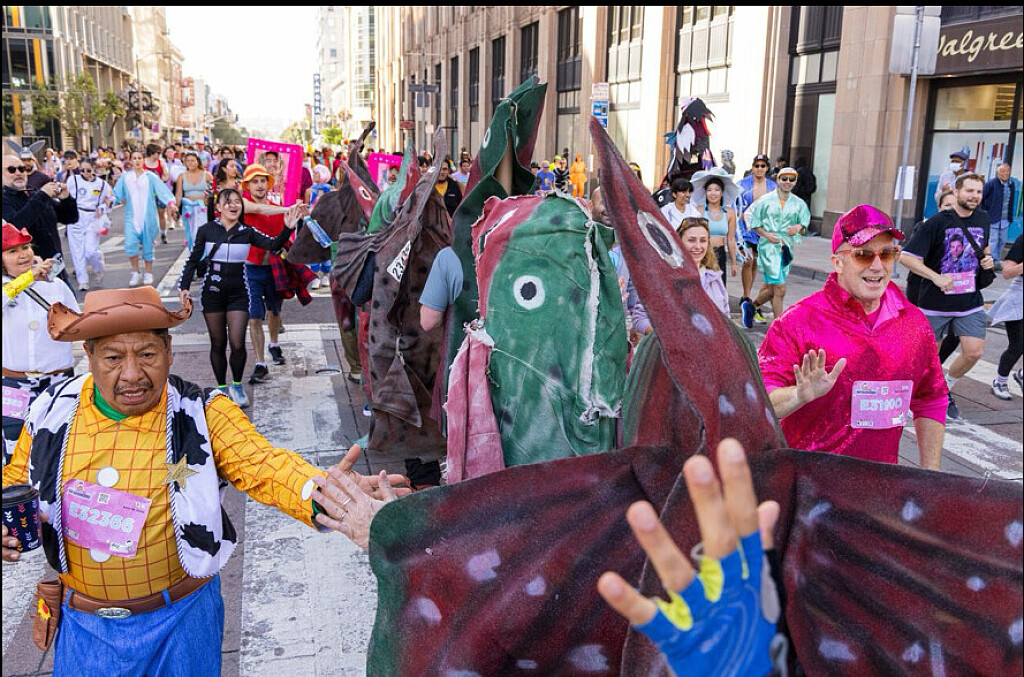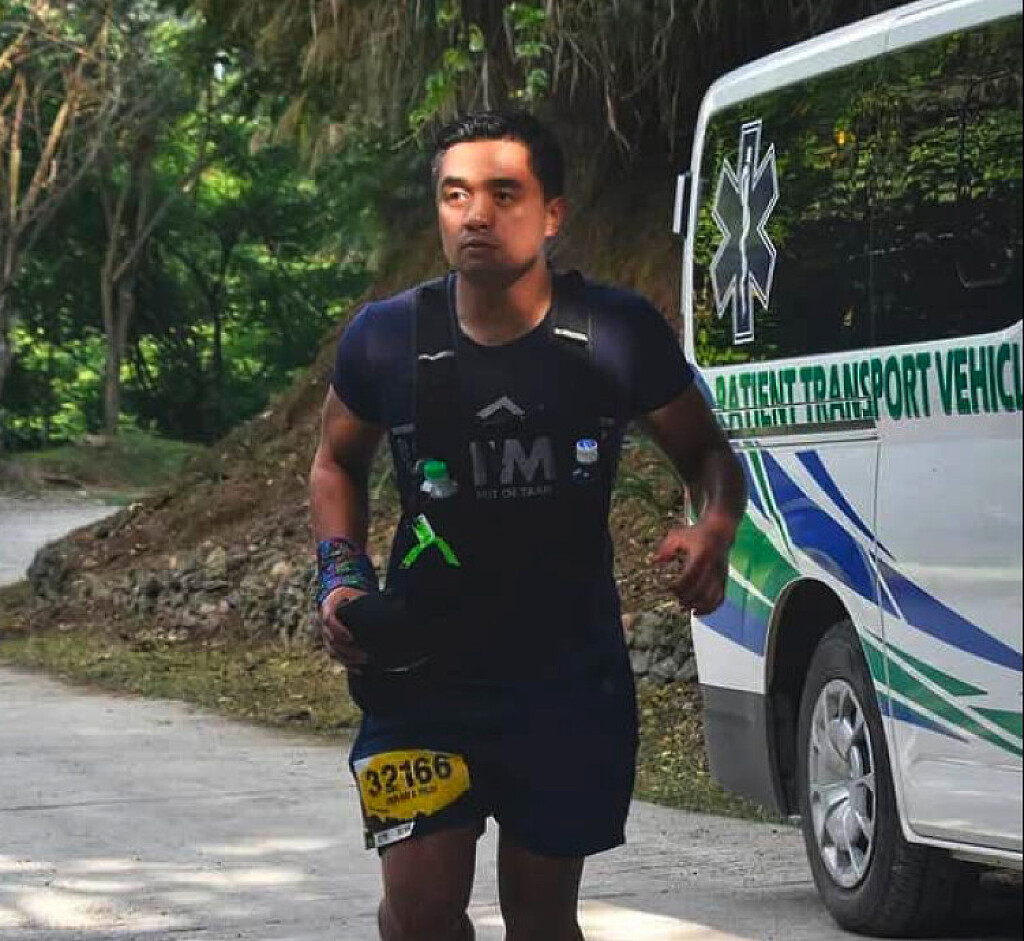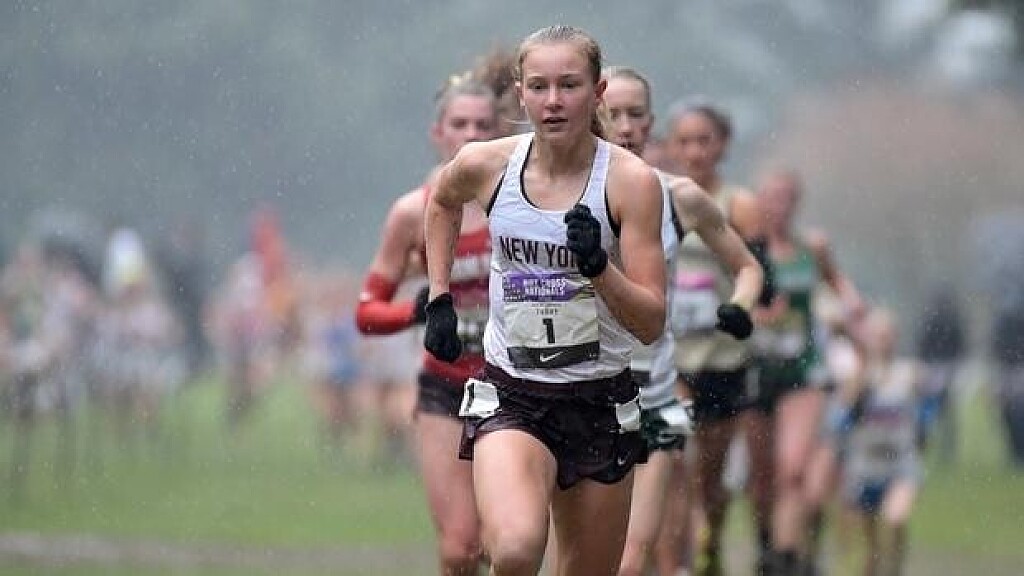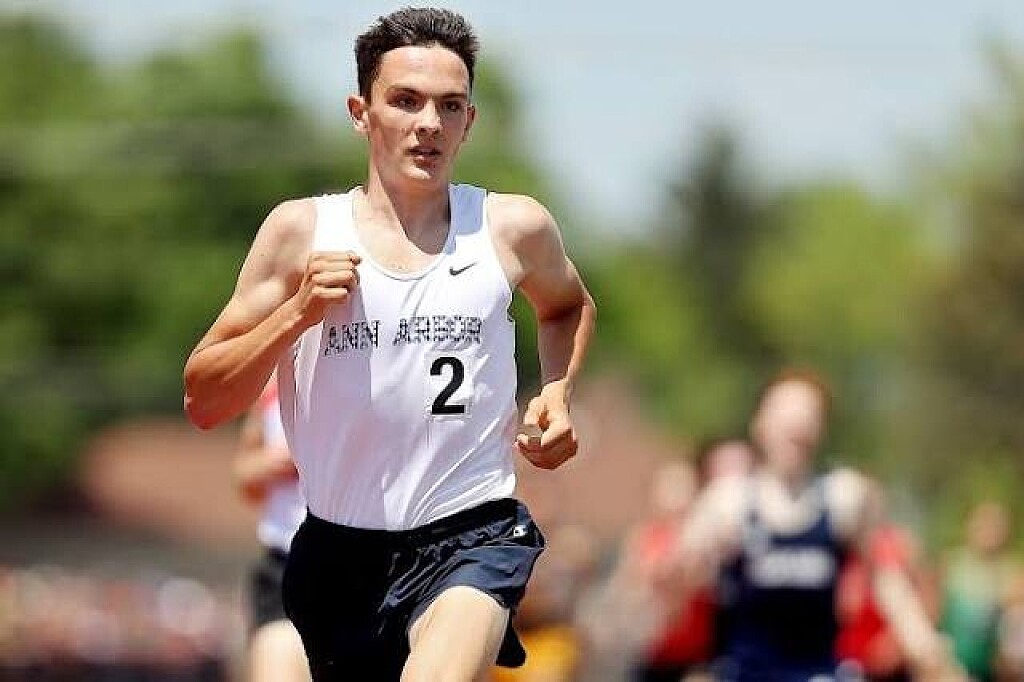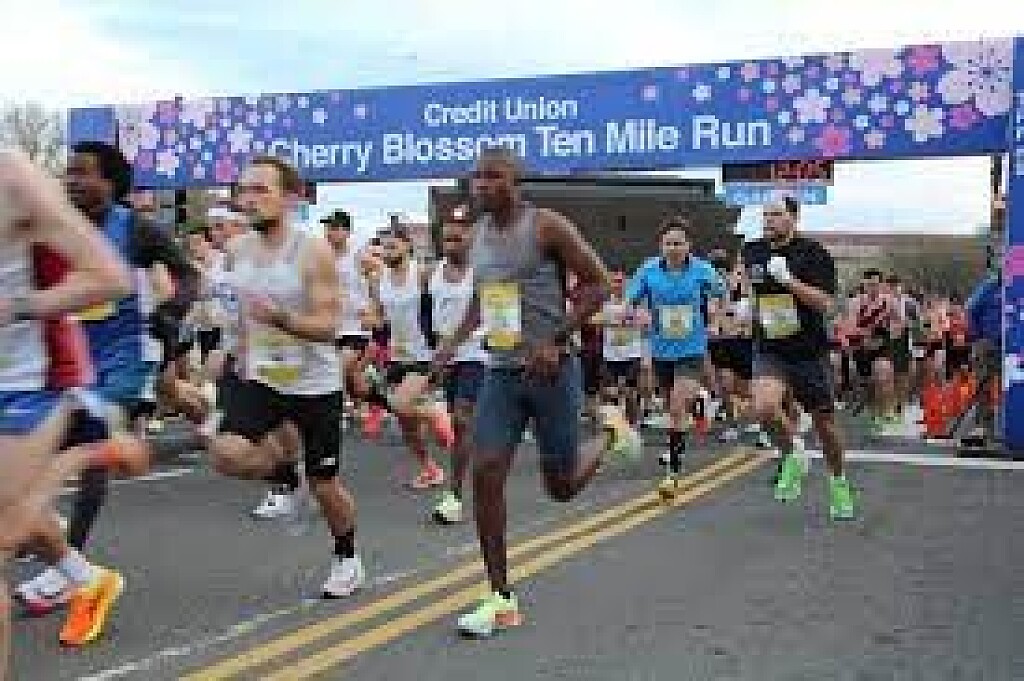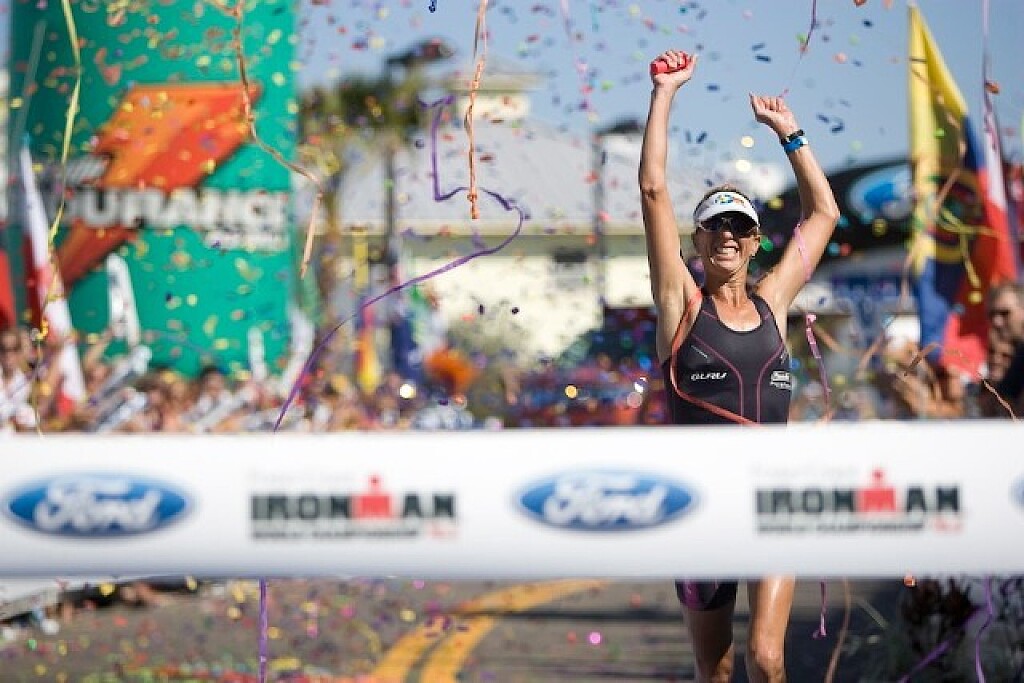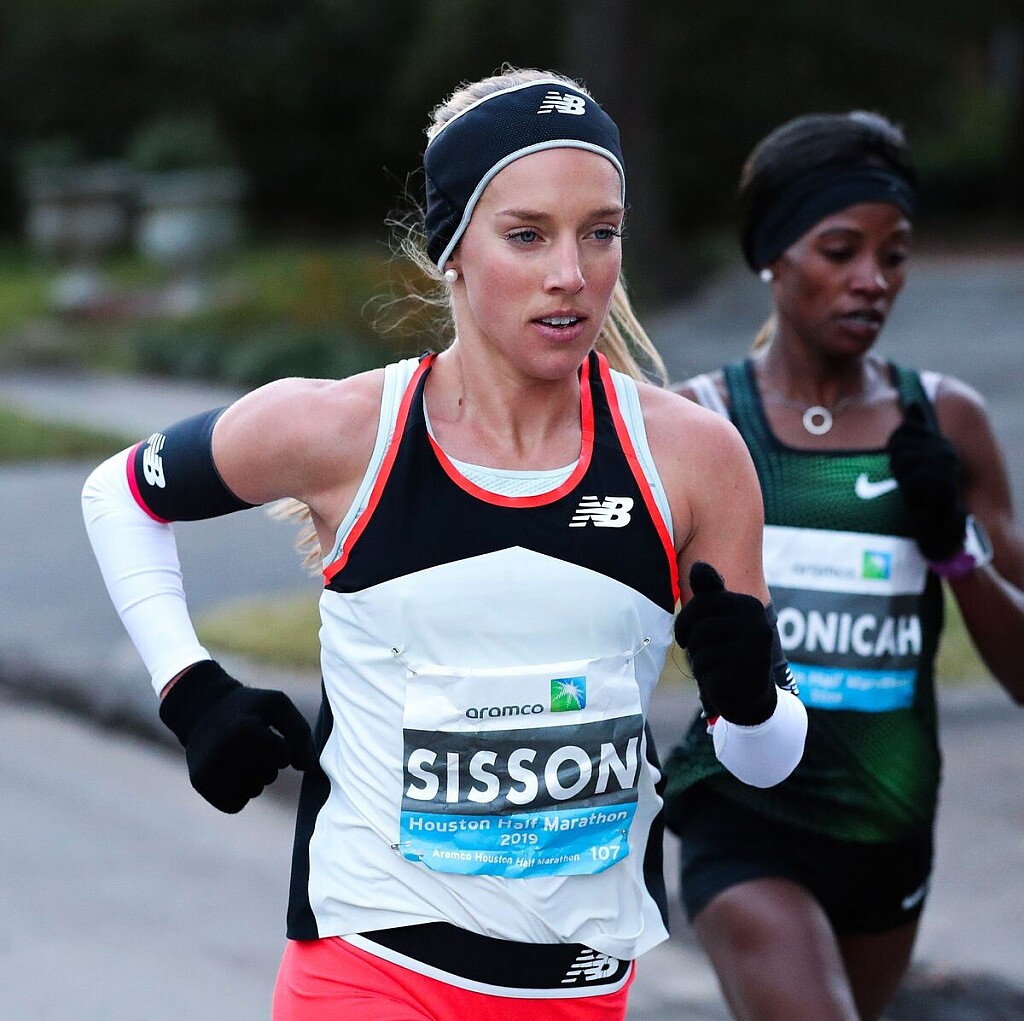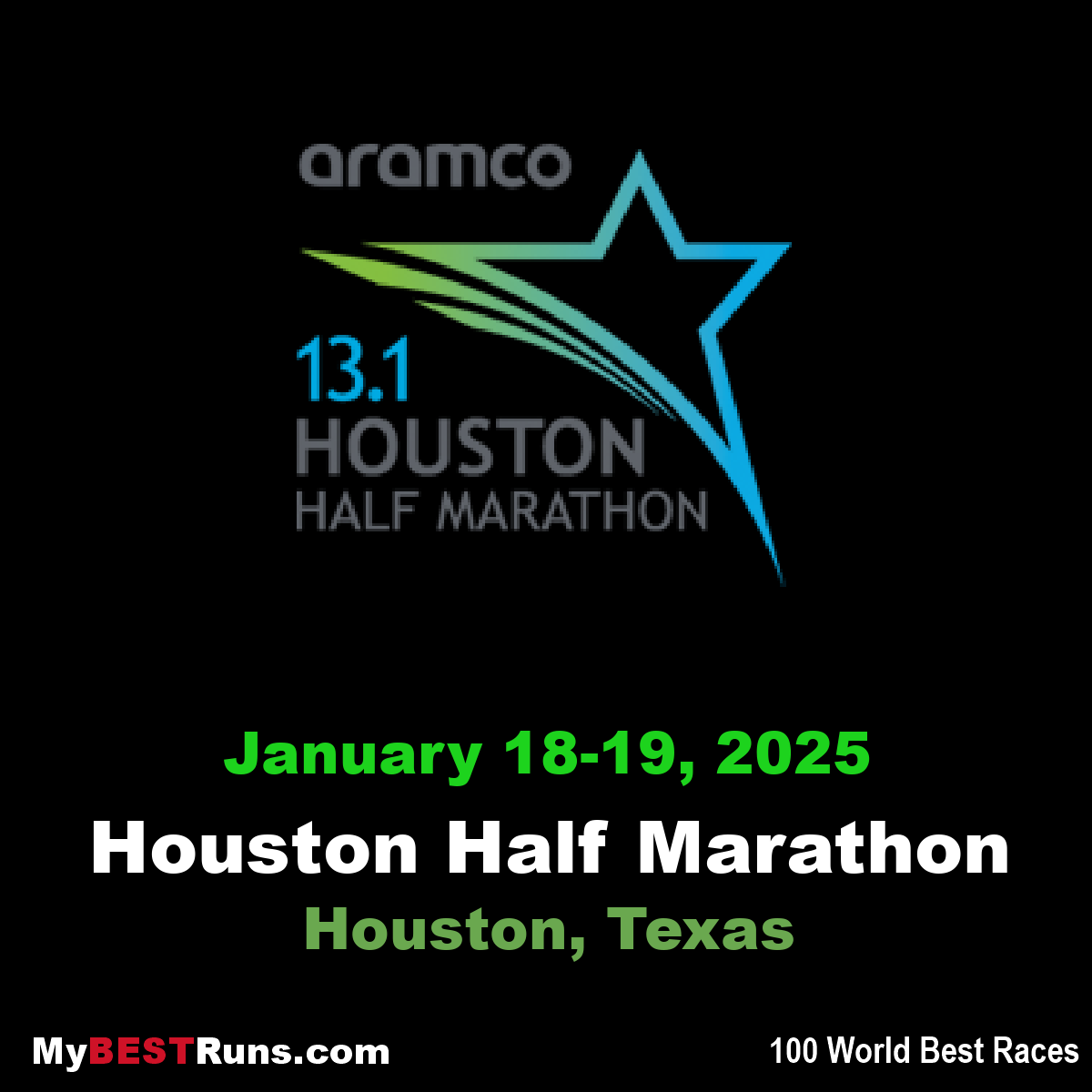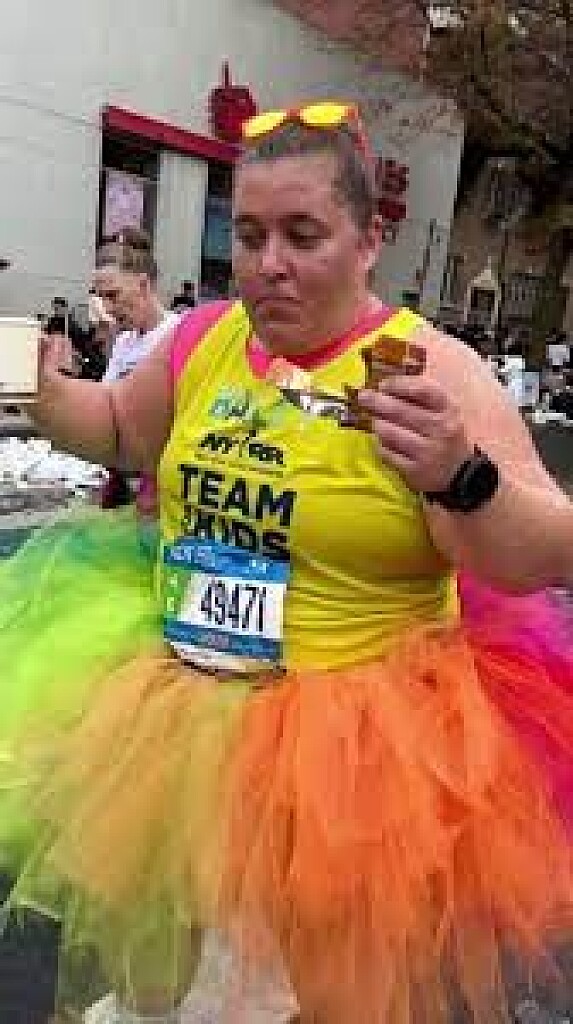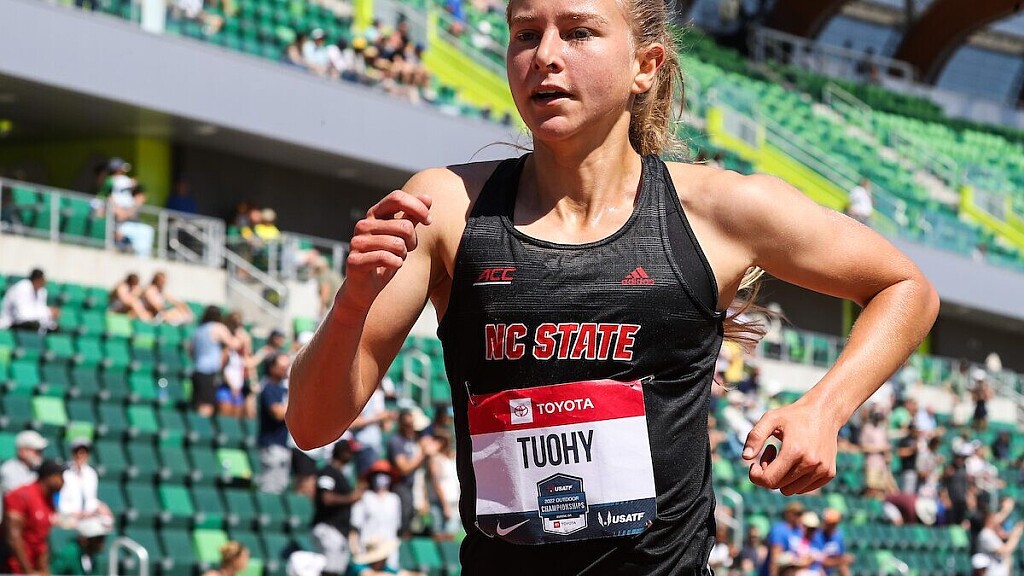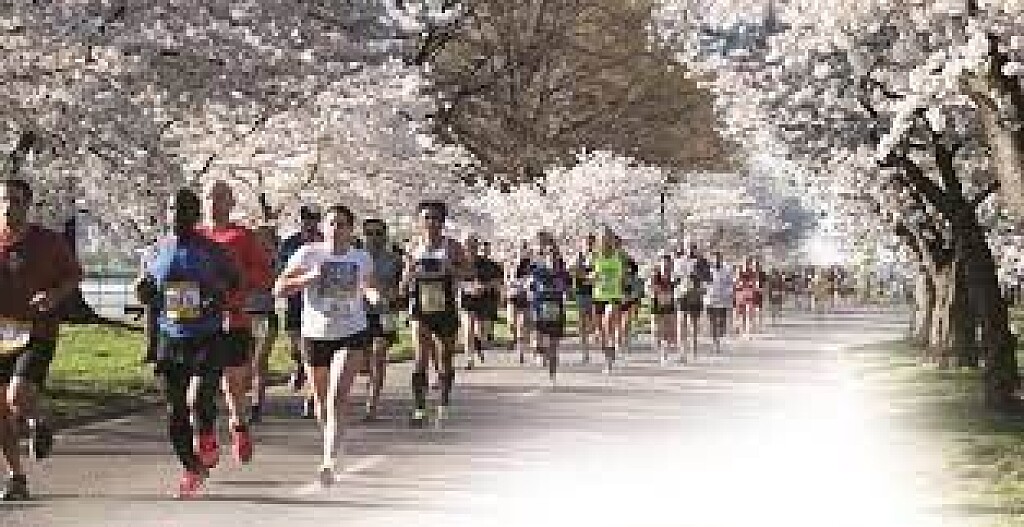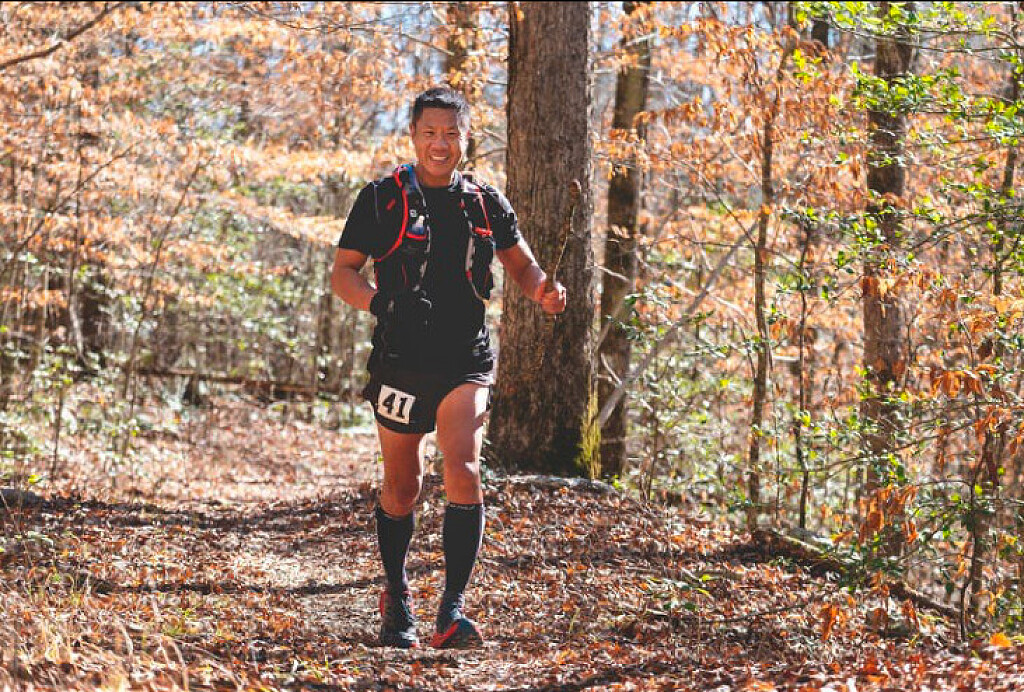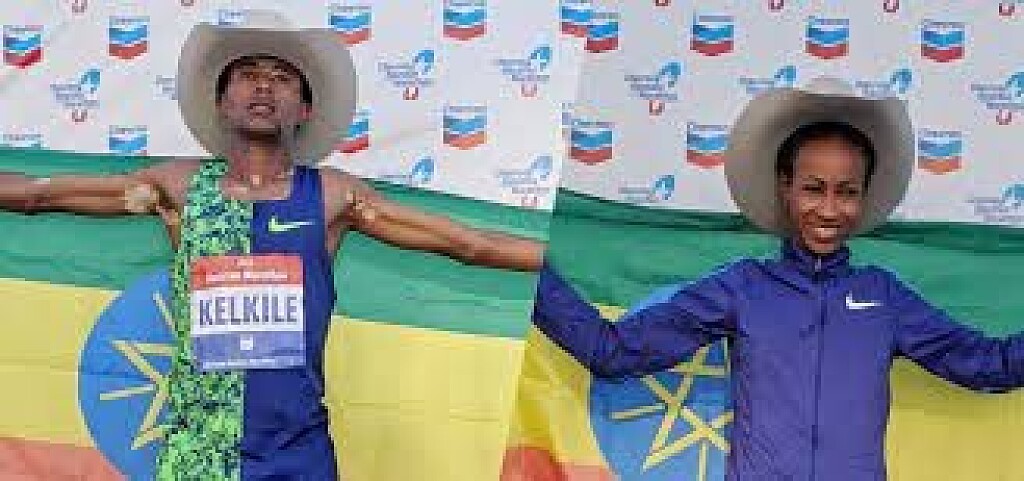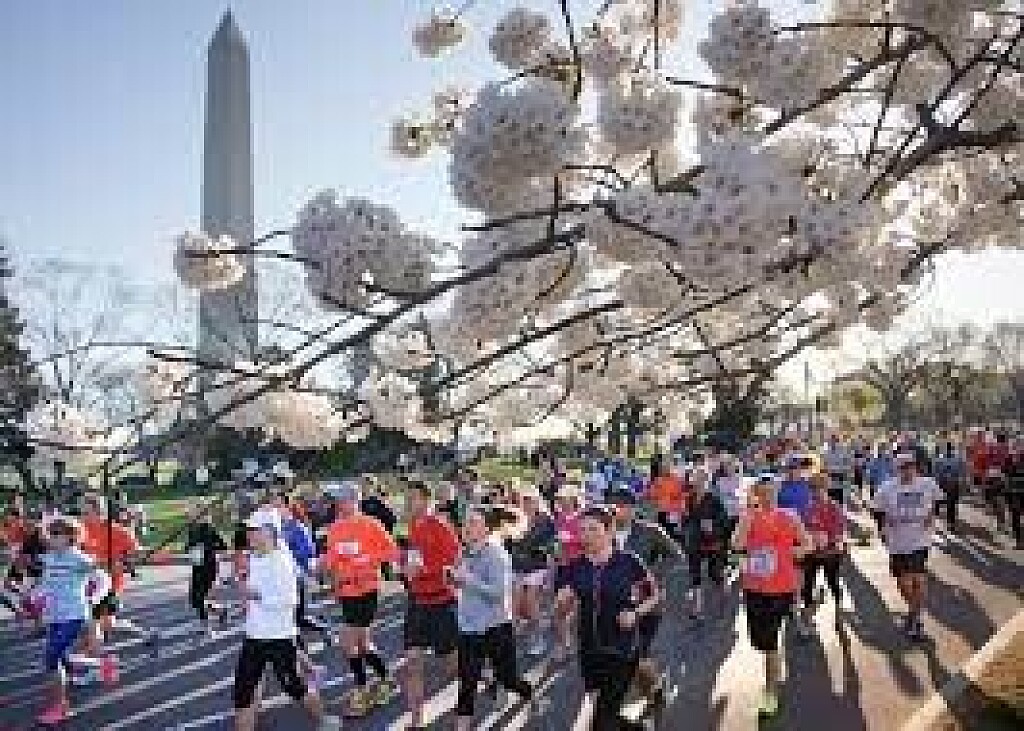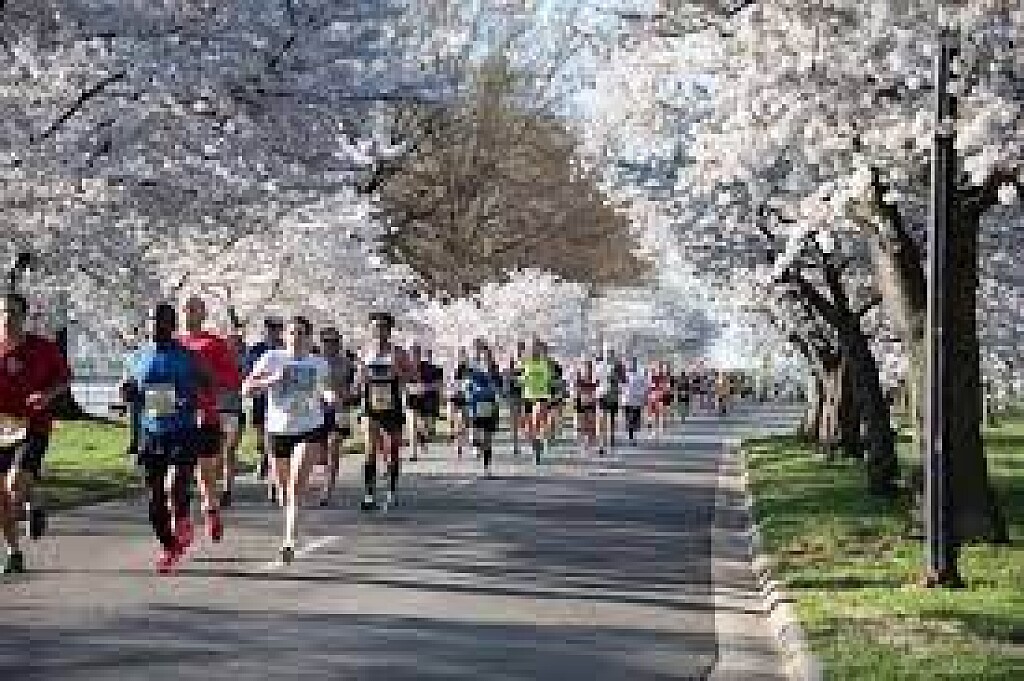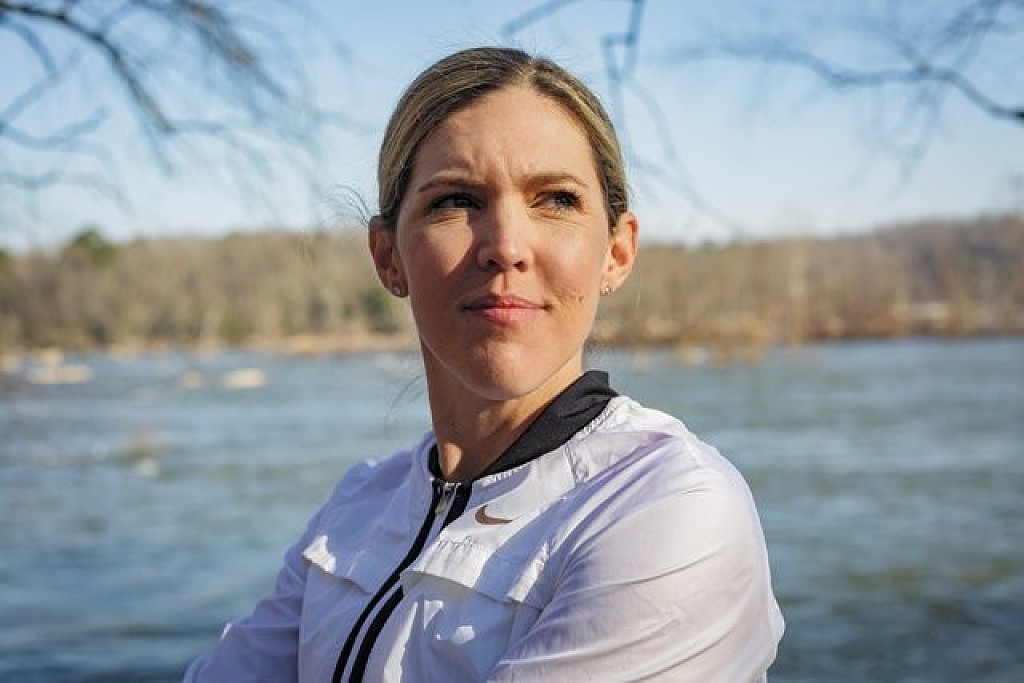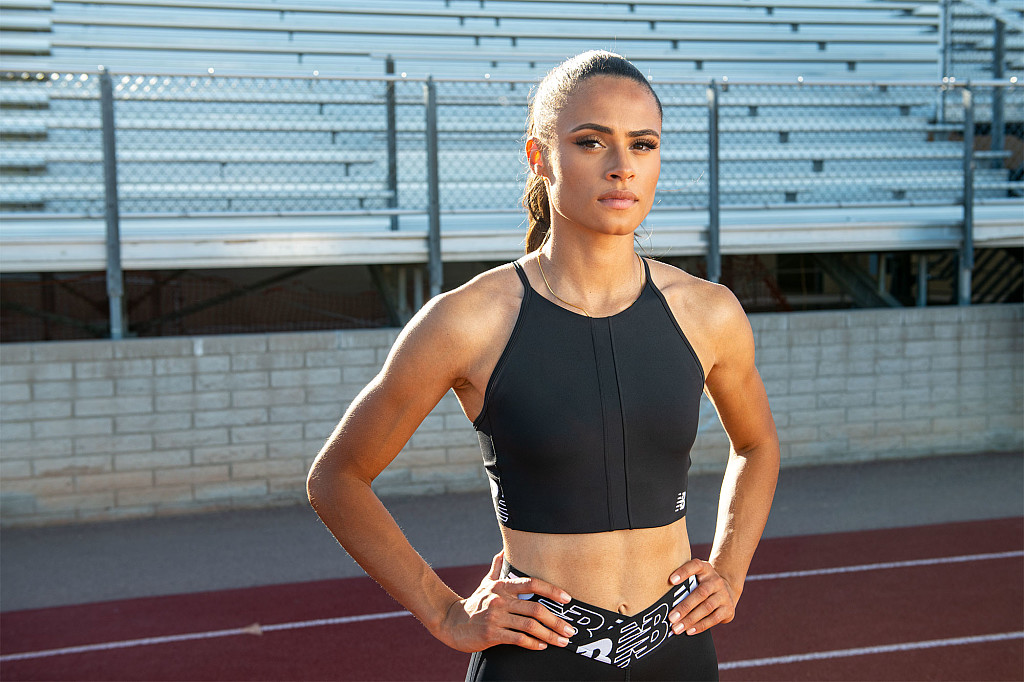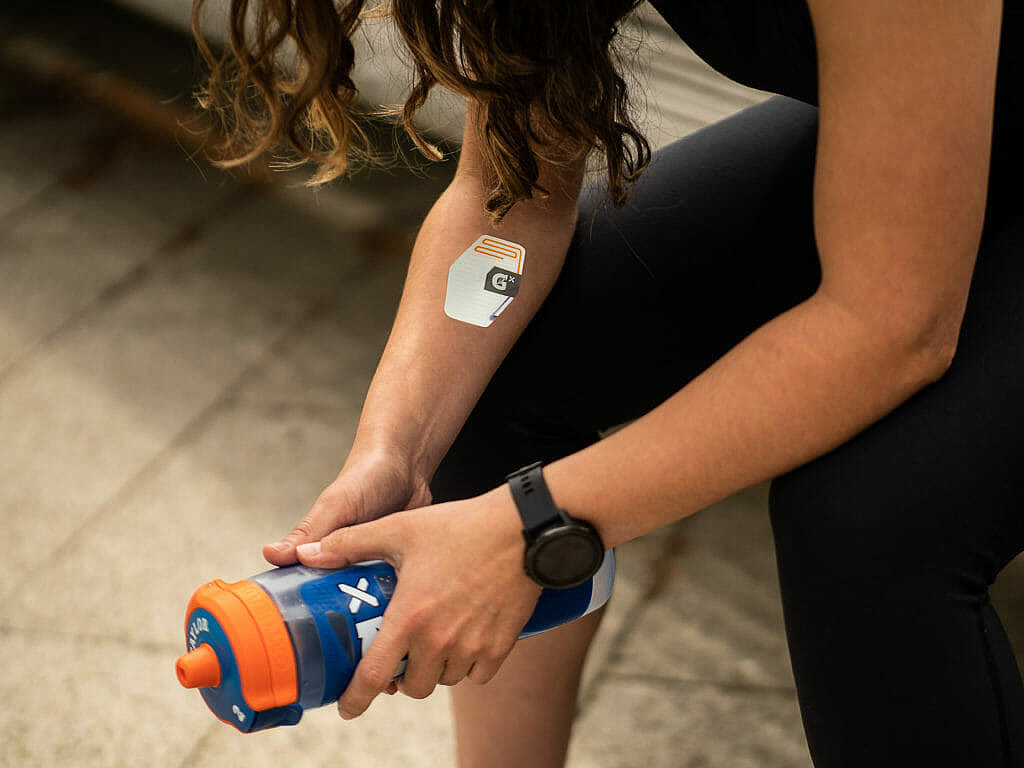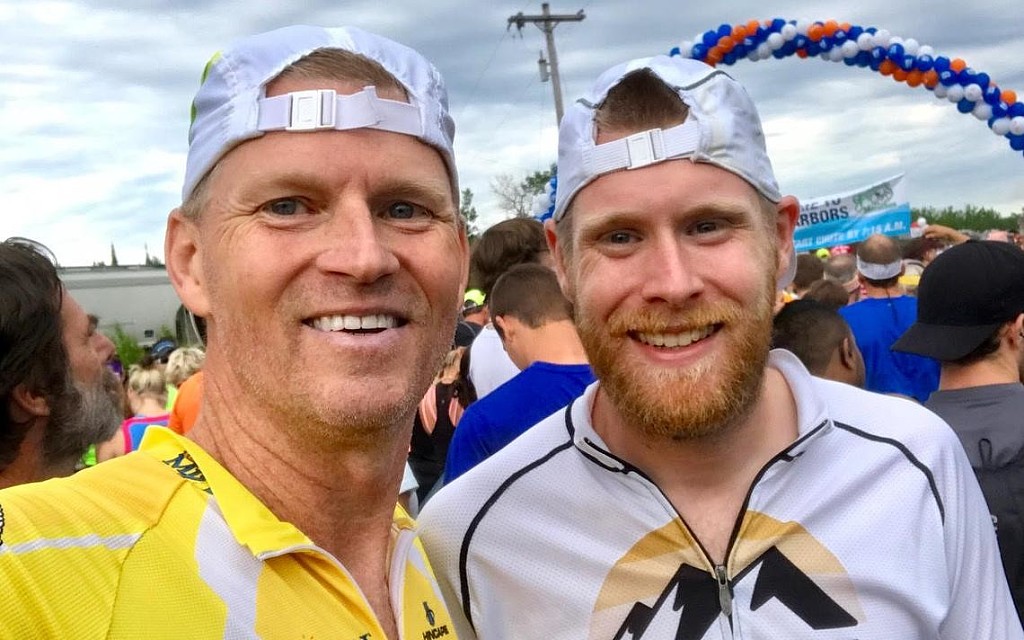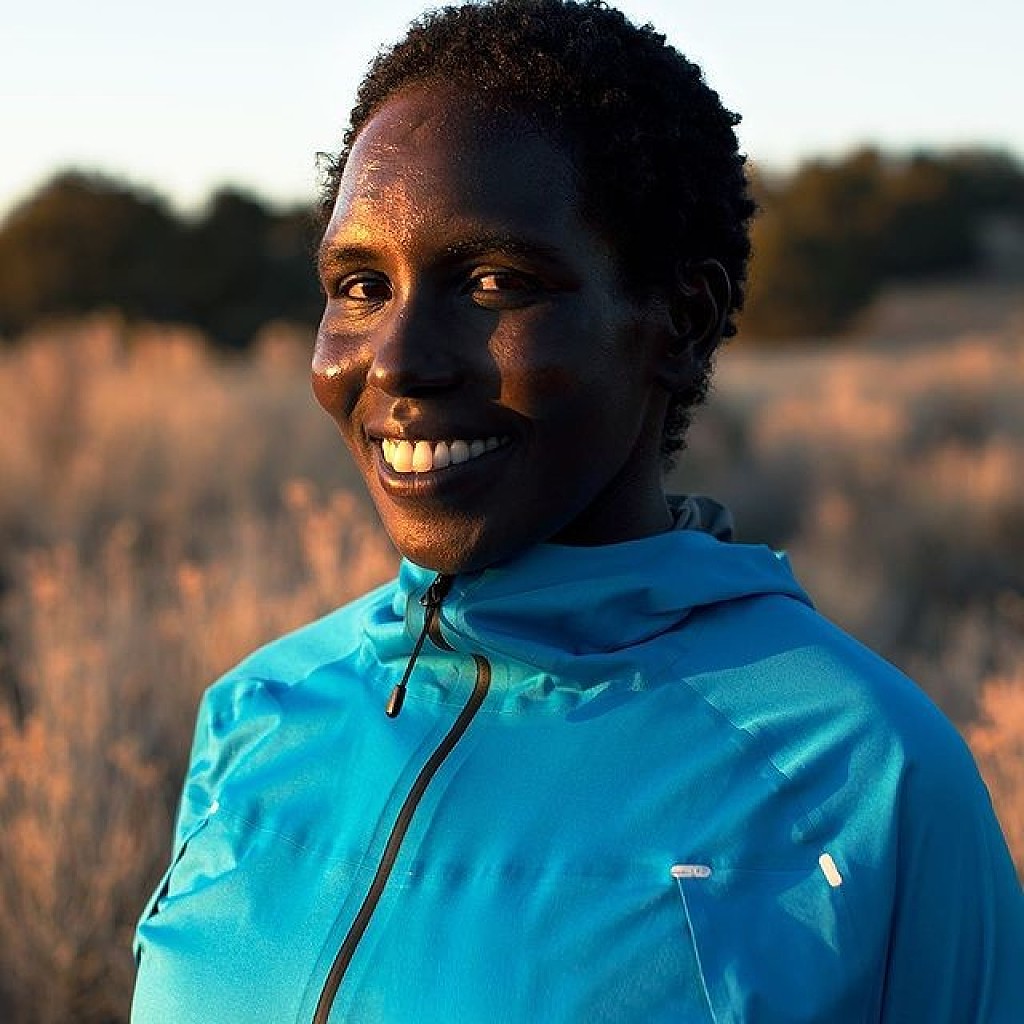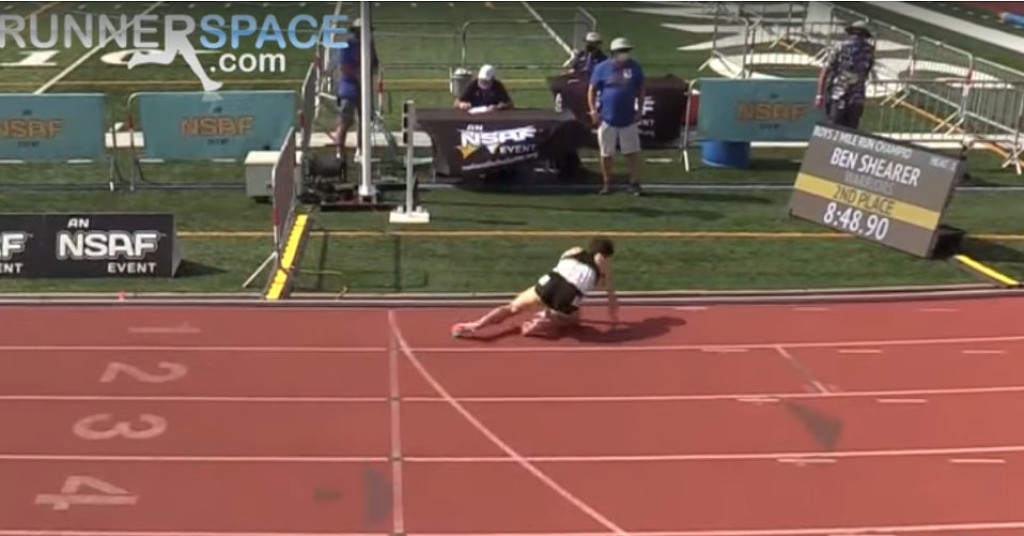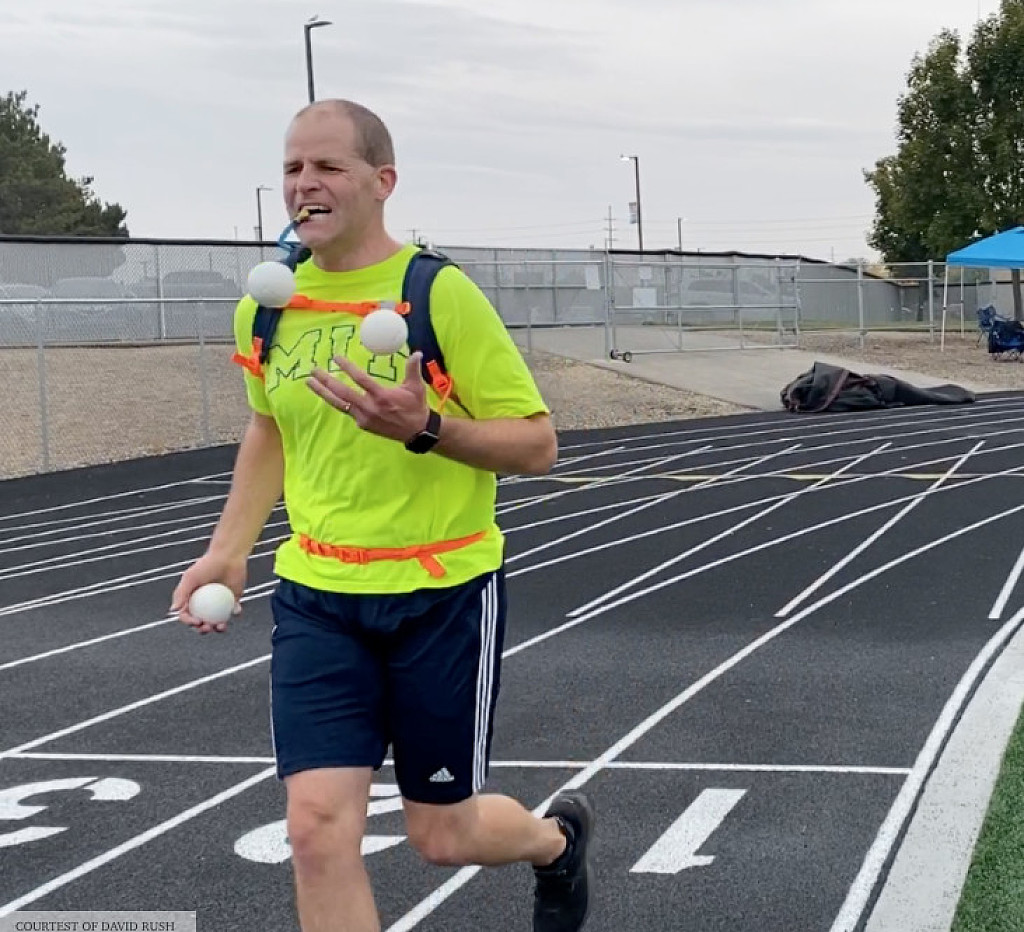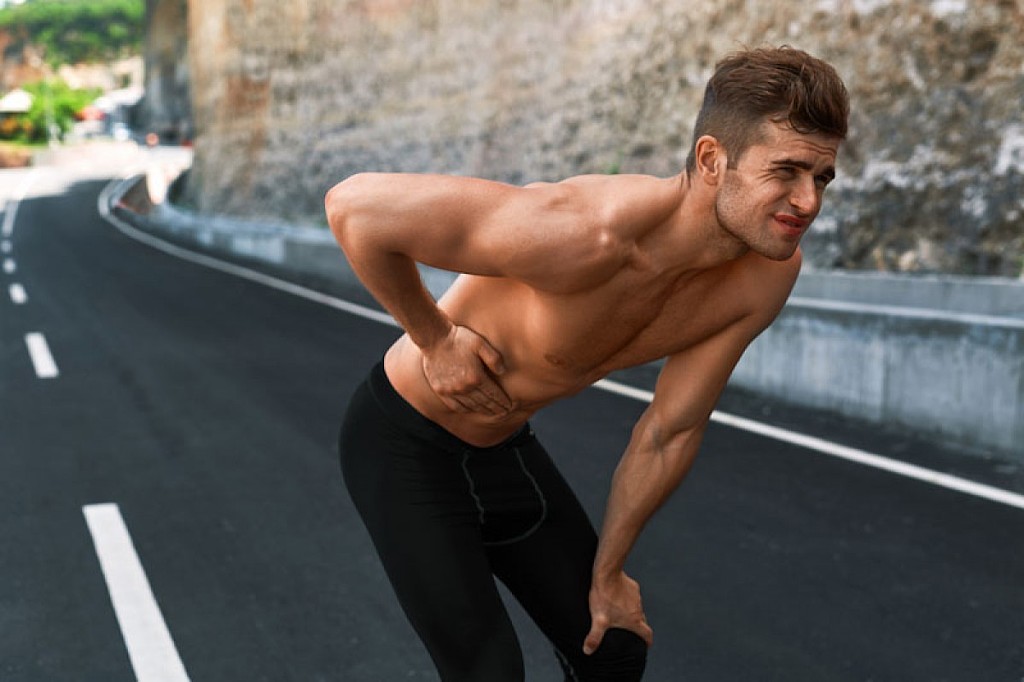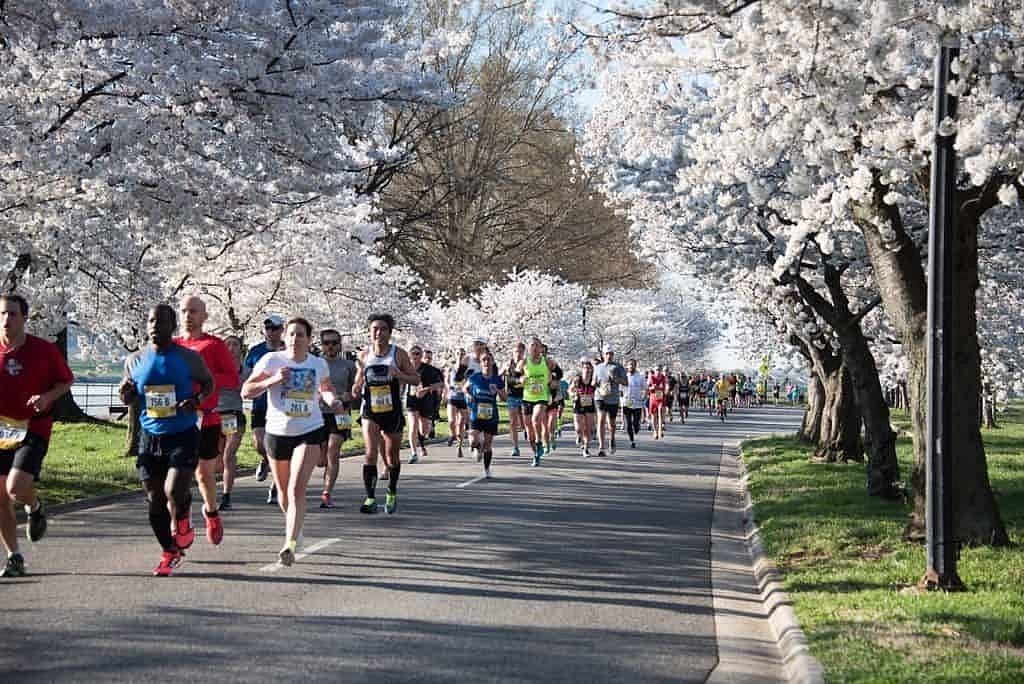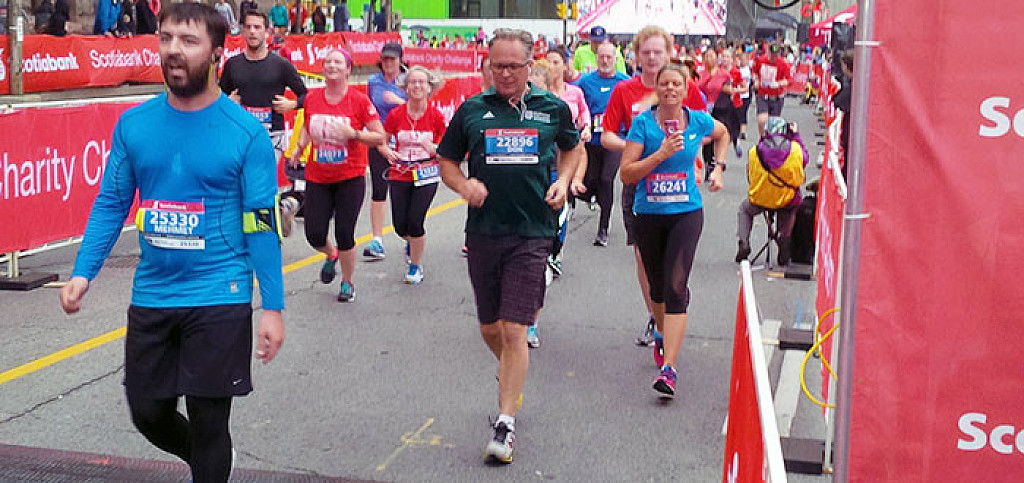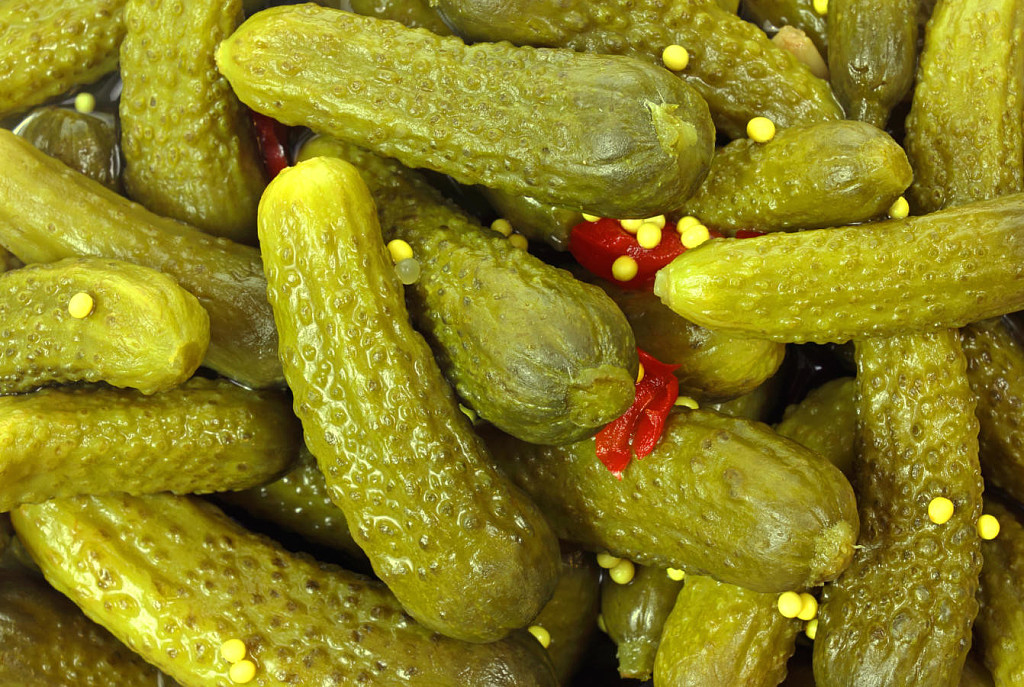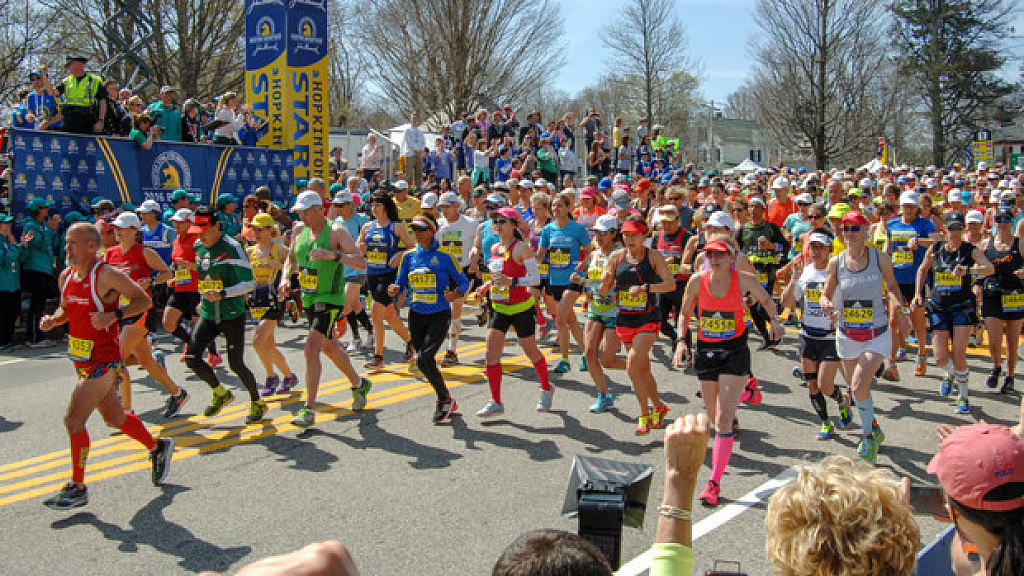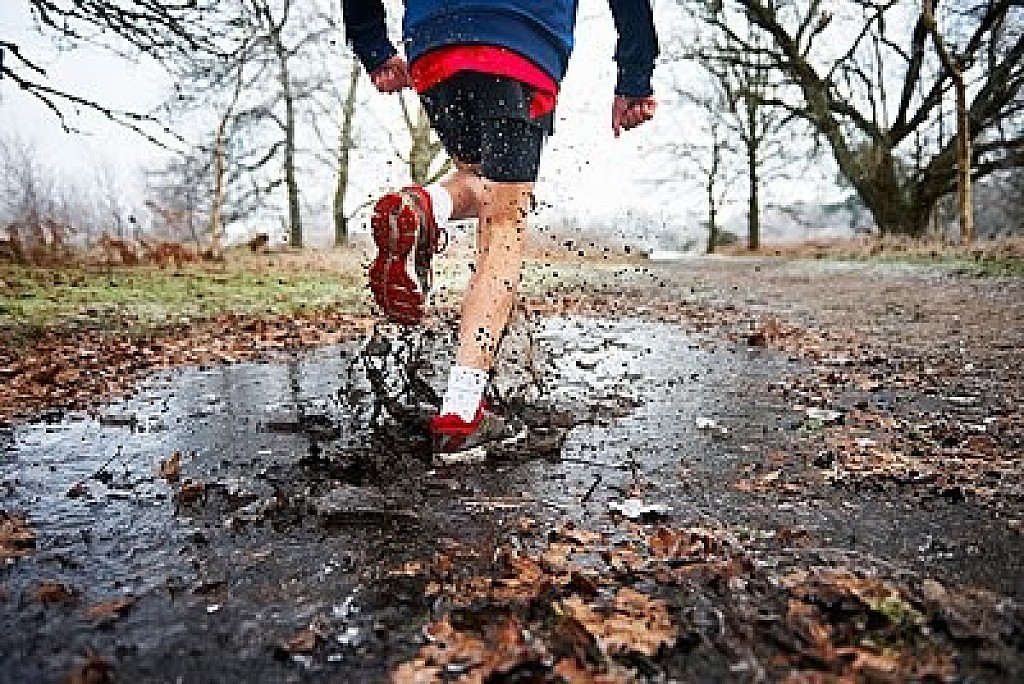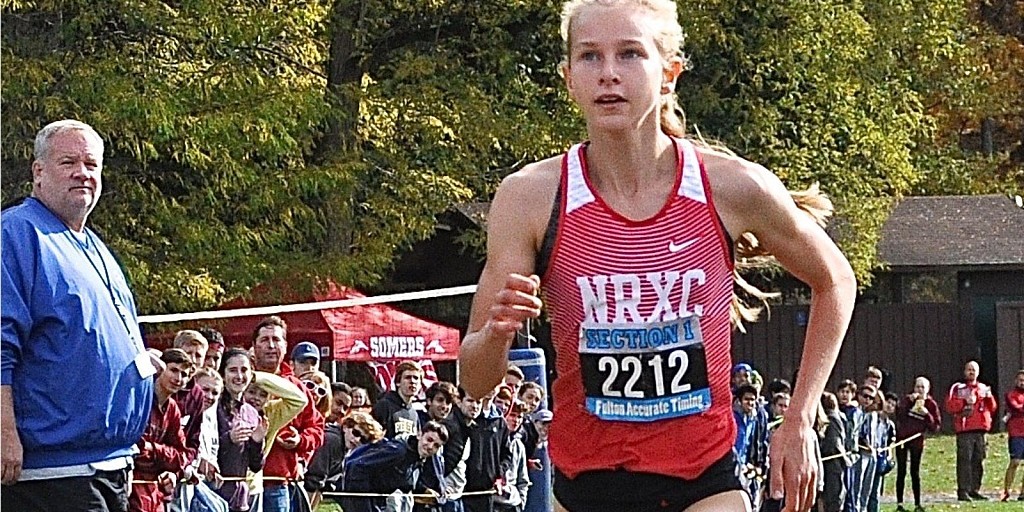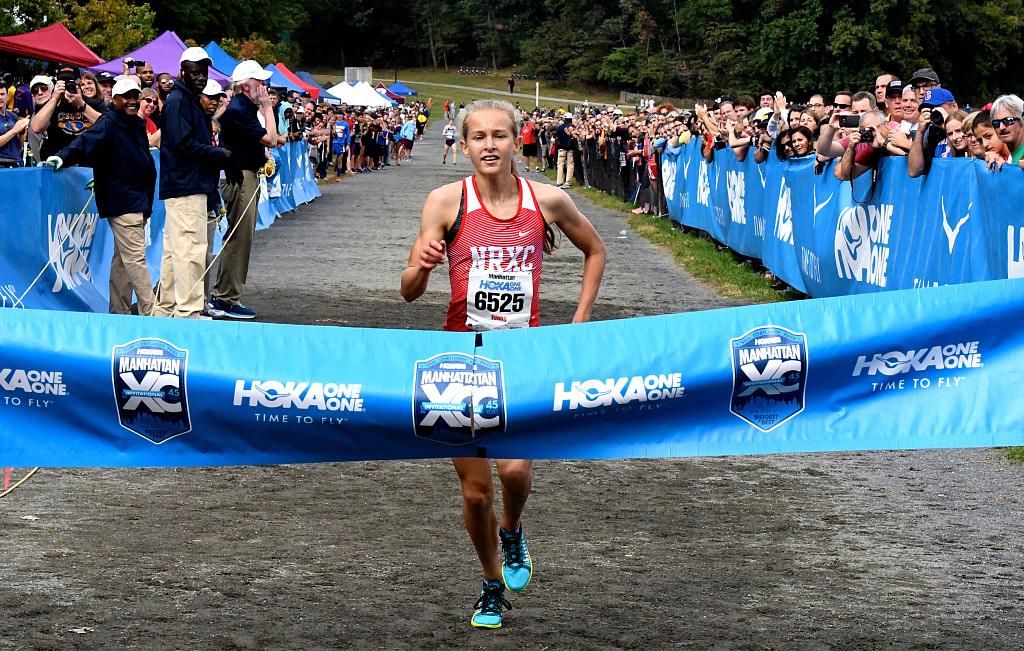Running News Daily
Running News Daily is edited by Bob Anderson. Send your news items to bob@mybestruns.com Advertising opportunities available. Train the Kenyan Way at KATA Kenya and Portugal owned and operated by Bob Anderson. Be sure to catch our movie A Long Run the movie KATA Running Camps and KATA Potato Farms - 31 now open in Kenya! https://kata.ke/
Index to Daily Posts · Sign Up For Updates · Run The World Feed
Articles tagged #Gatorade
Today's Running News
Jane Hedengren Shatters High School Indoor 5000m Record with 15:13.26
On March 13, 2025, at Nike Indoor Nationals, Jane Hedengren delivered a performance for the ages, setting a new U.S. high school indoor record in the 5,000 meters with a blazing time of 15:13.26. The Timpview High School senior shattered the previous mark of 15:28.90, set by Elizabeth Leachman just a year prior, cementing her status as one of the most dominant prep distance runners in history.
A Running Legacy
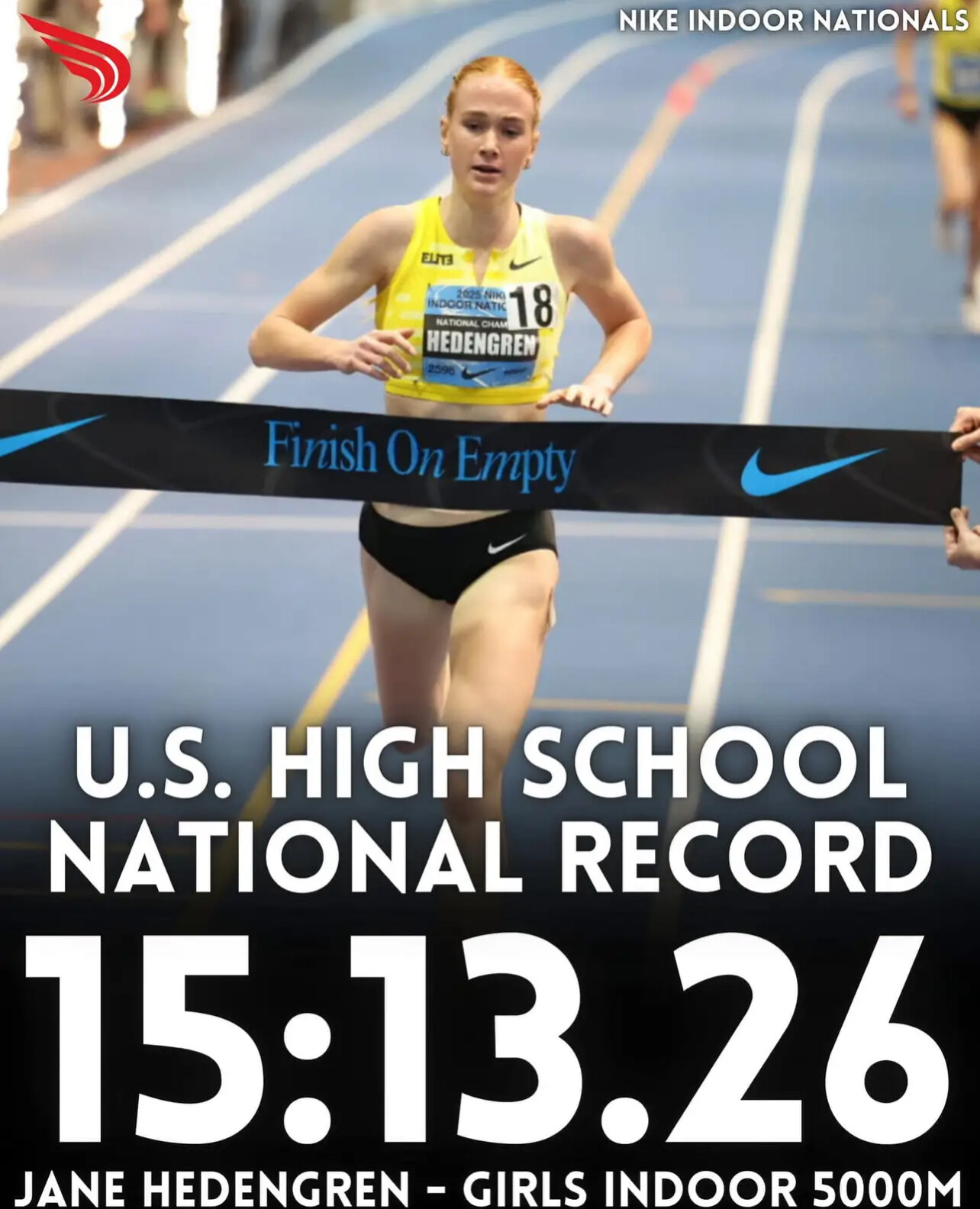
Born on September 23, 2006, in Provo, Utah, Hedengren was raised in a family deeply rooted in running. Her father, John D. Hedengren, was an All-American runner and is a BYU Hall of Fameinductee. Her brother, Isaac Hedengren, currently competes for Brigham Young University’s track and field team, making running a central part of the family’s DNA.
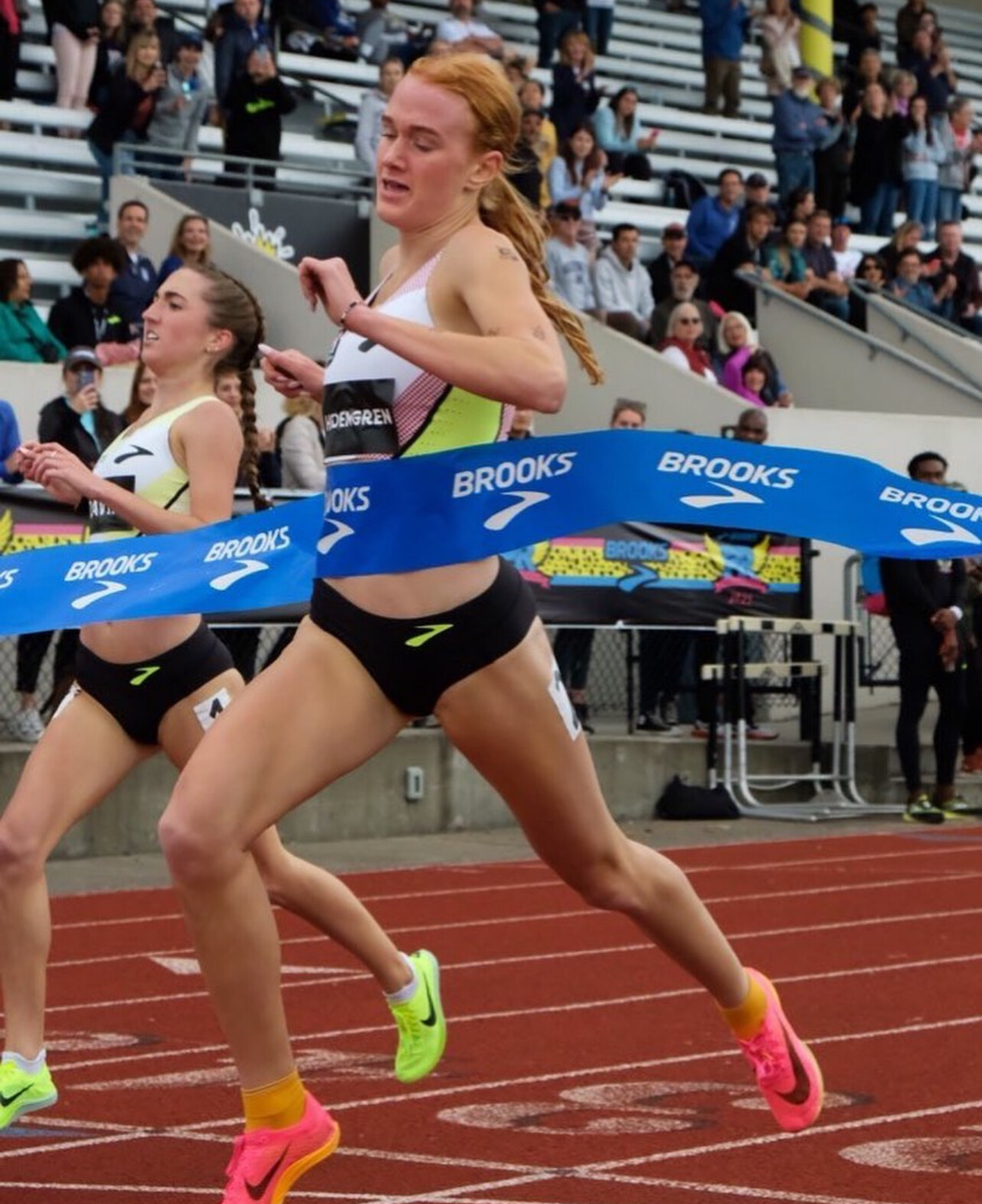
From a young age, Jane showed exceptional endurance and competitive fire, developing into one of the top high school distance runners in the country.
A Career Defined by Records
Hedengren has been rewriting the record books throughout her high school career.
• 2023 – Won the Brooks PR Invitational mile in 4:35.69, setting a meet record. Later that month, she claimed the Nike Outdoor Nationals two-mile title in 9:54.38, a U.S. sophomore class record.
• 2024 – Set a Utah state record in the 1,600 meters (4:37.72) at the BYU Invitational. Later in the year, she ran the fastest 5K in U.S. high school cross country history, clocking 15:50.01 at the Nike Cross Regionals Southwest. This performance helped her earn the prestigious Gatorade National Girls Cross Country Player of the Year award, making her the first female from Utah to receive the honor.
Breaking Barriers in the 5000m
At Nike Indoor Nationals, Hedengren wasted no time asserting herself, setting an aggressive pace from the gun. Fellow competitor Rylee Blade matched her stride-for-stride as the duo separated from the field early on. But with 100 meters to go, Hedengren unleashed a powerful kick, securing the victory and the record in dominant fashion.
Her 15:13.26 performance was more than just a high school record—it also set a new U20 American record, ranking her among the top 15 U.S. women in the event for the year.
What’s Next?
With her high school career winding down, Hedengren is set to compete for Brigham Young University, following in the footsteps of her father and brother. Given her trajectory, she is expected to make an immediate impact at the NCAA level and could be a future contender for national and international competition.
One thing is clear: Jane Hedengren isn’t just breaking records—she’s redefining what’s possible for young female distance runners.
Her Nike Indoor Nationals performance wasn’t just fast. It was historic. And it might just be the beginning.
by Boris Baron
Login to leave a comment
Grant Fisher: The Rise of America’s Distance Running Star and His Path to Success
Grant Fisher came within a fraction of a second of Olympic gold in the 10,000 meters at the 2024 Paris Games, narrowly missing the top spot in one of the closest finishes in the event’s history.
It had been 60 years since an American had last won the race, and sitting in the stands that day was Billy Mills, the man who pulled off that legendary upset in Tokyo in 1964. Fisher’s performance was a powerful moment that linked generations of American distance running, proving that while technology and training have evolved, the spirit of competition remains unchanged.
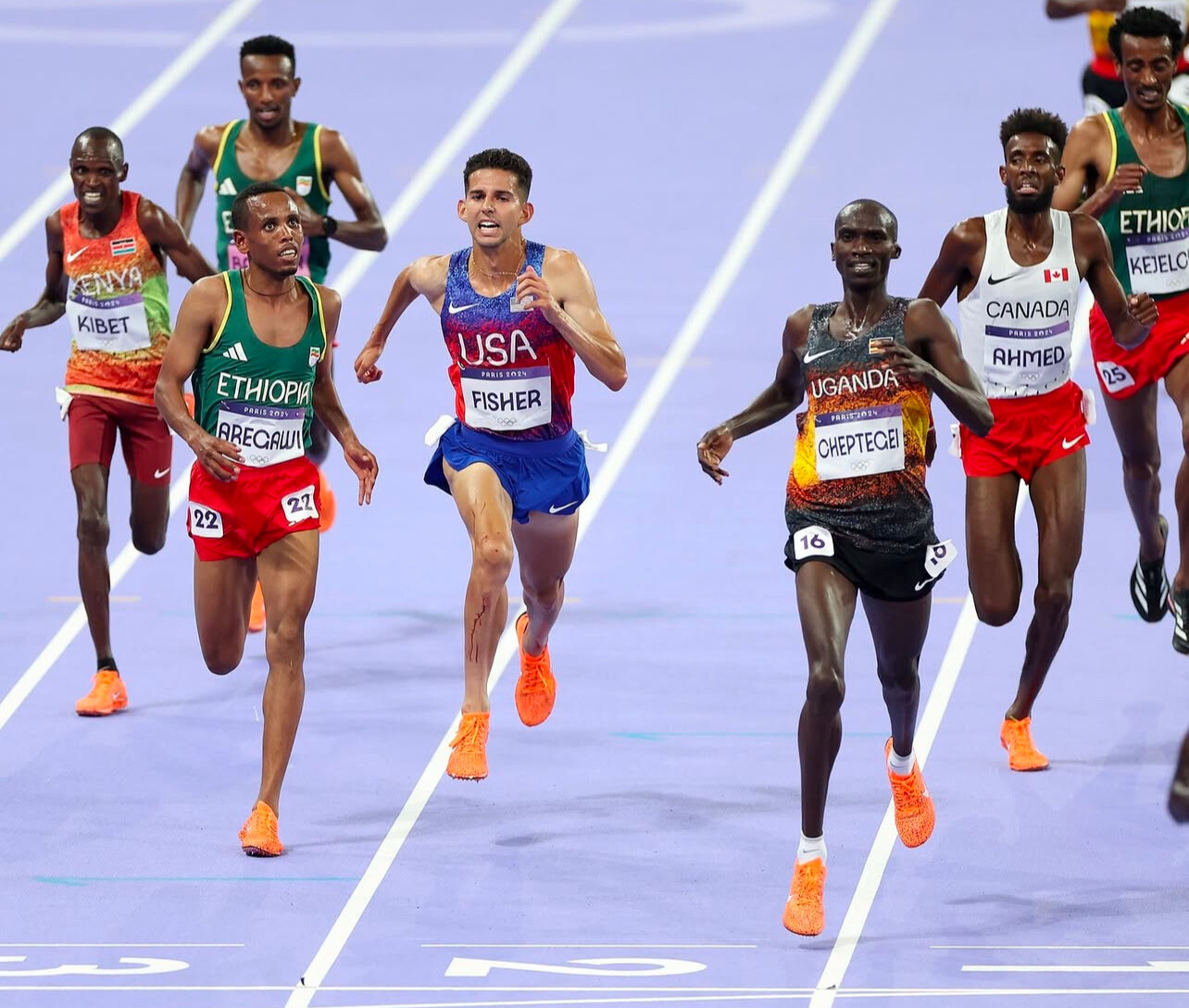
Fisher has emerged as one of the greatest distance runners in American history. He holds the world indoor record in the 3000 meters, as well as American records in the two-mile, 5000 meters, and 10,000 meters.
His performances at the 2024 Olympics—bronze medals in both the 5000 and 10,000 meters—cemented his status as a world-class athlete, making him the first American to medal in both events at the same Olympic Games.
Early Life and High School Achievements
Fisher grew up in Grand Blanc, Michigan, where he attended Grand Blanc High School. In addition to running, he was an avid soccer player and a member of the Michigan Wolves, an elite-level club team. His high school running career was marked by significant achievements, including being named Gatorade Player of the Year for cross country for the 2013–2014 and 2014–2015 seasons. On June 4, 2015, he became the seventh American high school student to run a mile under four minutes, clocking 3:59.38 at the Nike Festival of Miles.
Collegiate Success at Stanford University
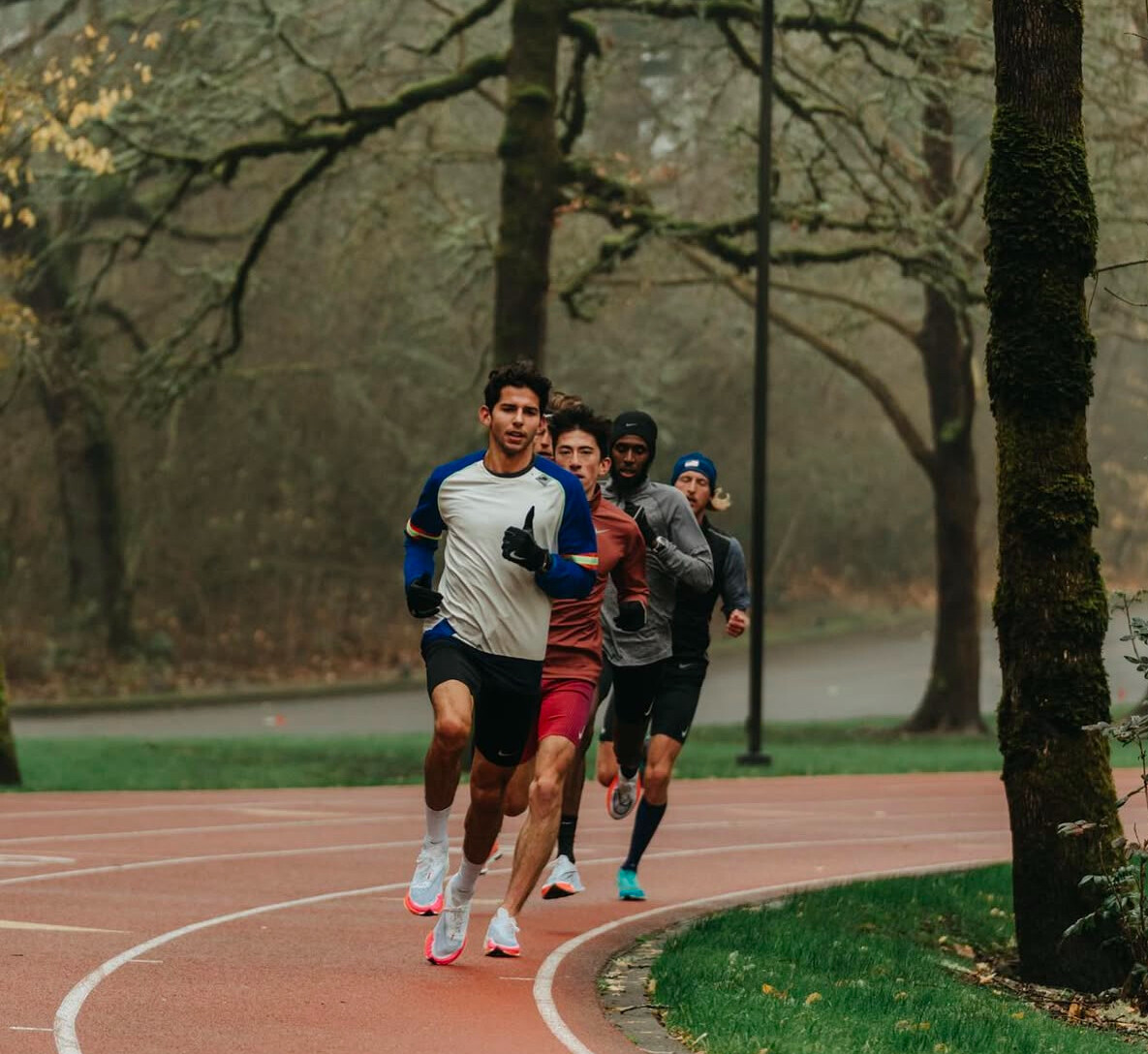
Fisher attended Stanford University, where he continued to excel in both cross country and track. He was an eleven-time All-American and won the 2017 NCAA Outdoor Track and Field 5000m championship, becoming the first American underclassman to do so in 28 years.
Transition to Professional Running
After graduating from Stanford, Fisher turned professional and joined the Bowerman Track Club, training under coach Jerry Schumacher. He continued to make significant strides in his professional career, setting personal bests and national records in various events.
Training Philosophy and Coaching
In late 2023, Fisher made a pivotal change by relocating to Park City, Utah, to train under his former high school coach, Mike Scannell. This move was aimed at optimizing his training environment, taking advantage of Park City's high altitude to enhance his physiological response to training. Fisher's training regimen focuses on threshold-type sessions, hill repeats, and long runs, with an emphasis on consistency and gradual progression.
Olympic Achievements
At the 2024 Paris Olympic Games, Fisher delivered outstanding performances:
10,000 meters: Fisher secured a bronze medal with a time of 26:43.46, narrowly missing the silver in a photo finish. This achievement made him the first American to medal in the men's 10,000 meters since Galen Rupp in 2012.
5000 meters: Fisher earned his second bronze medal, finishing in 13:15.13. He executed a strong final lap, moving from ninth to third place, showcasing his tactical acumen and finishing speed.
This race was one of the most thrilling finishes in Olympic history, with Fisher just 0.32 seconds behind Uganda’s Joshua Cheptegei, who set a new Olympic record of 26:43.14. The difference between gold and bronze was razor-thin, and it took a photo finish to determine the final placements.
Recent Achievements
On February 8, 2025, at the Millrose Games, Fisher set a new world indoor record in the 3000 meters, finishing in 7:22.91. This performance underscored his position as one of the premier distance runners globally.
Personal Bests
Grant Fisher's progression in the sport is highlighted by his impressive personal records across various distances:
1500 meters: 3:34.90 (June 9, 2024, New York, New York)
3000 meters: 7:22.91 (February 8, 2025, New York, New York) – World Indoor Record
Two-mile: 8:03.62 (February 11, 2024, New York, New York) – American Record
5000 meters: 12:46.96 (September 2, 2022, Brussels, Belgium) – North American Record
10,000 meters: 26:33.84 (March 6, 2022, San Juan Capistrano, California) – North American Record
These personal bests not only demonstrate Fisher's versatility across distances but also his continuous improvement and commitment to excellence.
Grant Fisher's journey from a high school prodigy to a world-class athlete is a testament to his dedication, strategic training choices, and adaptability. His performance in the 2024 Olympic 10,000 meters was one of the greatest ever by an American, coming within a fraction of a second of gold.
While modern advancements in track surfaces, shoes, and training have contributed to faster times, Fisher’s near-victory proved that at its core, elite distance running is still about tactical intelligence, mental strength, and raw determination—the same qualities that helped Mills secure his iconic gold in 1964.
by Boris Baron
Login to leave a comment
Zariel Macchia: Rising Star in Distance Running and Academics
Zariel "Z" Macchia, an 18-year-old senior at William Floyd High School in Suffolk County, New York, continues to make headlines as a standout talent in American distance running. Her achievements both on and off the track demonstrate her exceptional dedication and potential.
Macchia recently defended her title at the USATF U20 Cross Country Championships in Lubbock, Texas, completing the 6-kilometer course in 21:46 and winning by an impressive 11-second margin. This marked her second consecutive U20 national cross-country title, solidifying her reputation as one of the top young runners in the country. In recognition of this victory, she was named USATF Athlete of the Week.
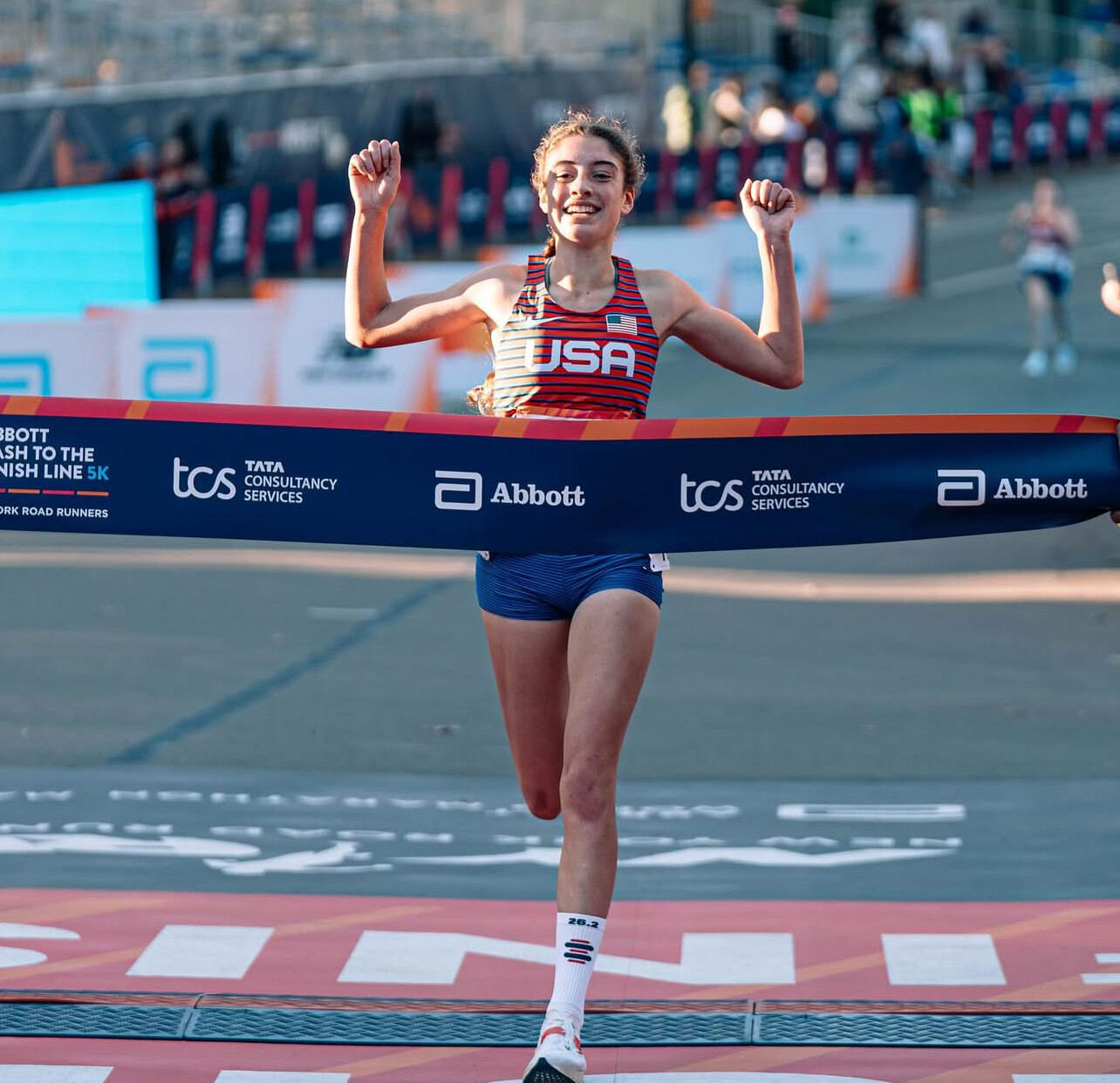
Beyond athletics, Zariel excels academically and was named the News 12/Bethpage Federal Credit Union Scholar Athlete of the Week. This prestigious accolade, awarded to only 30 student-athletes across Long Island during the 2024-25 school year, included a $1,000 scholarship.
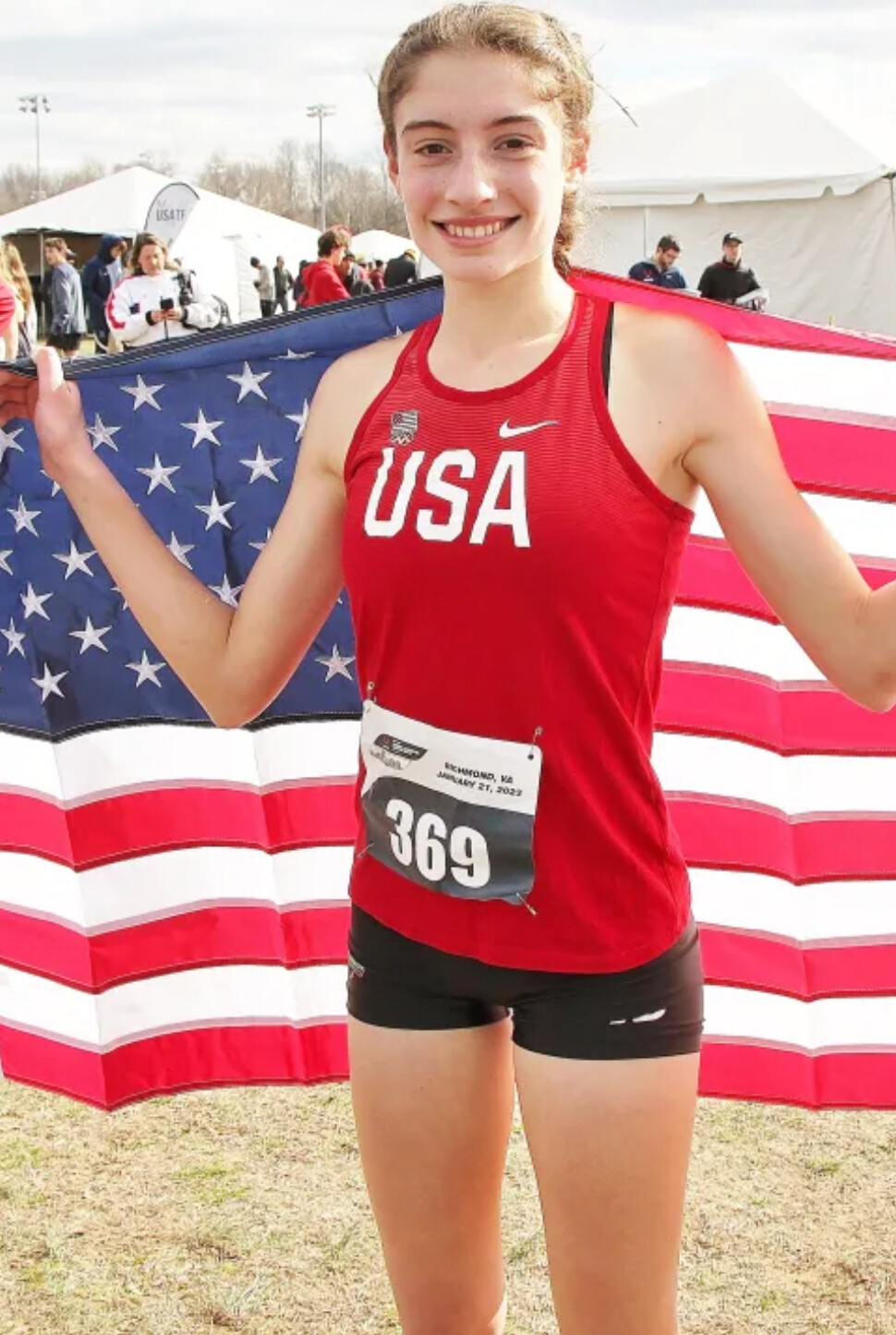
Macchia has also achieved numerous other milestones, including representing Team USA's U20 squad internationally, earning five All-American honors, and securing multiple state championships. She has twice been named Gatorade's New York Girls Cross-Country Player of the Year.
A well-rounded individual, Zariel maintains an A average, serves as captain of her school's science bowl team, and has contributed to her community by establishing an ecological center and tutoring peers. She is committed to balancing her academic and athletic pursuits as she prepares to run cross-country and track at Brigham Young University while pursuing a degree in electrical engineering.
Zariel Macchia'd dedication, work ethic, and remarkable achievements make her a rising star in the world of distance running and a role model for aspiring athletes.
by Boris Baron
Login to leave a comment
The Evolution of My Pre-Run Nutrition
For many years, I believed that running on an empty stomach was ideal. I focused primarily on my meal the night before, opting for light, meatless dishes. However, around 1999, I began eating half a banana before races and noticed improved performances.
By 2000, my pre-race dinner evolved to include a fully loaded baked potato, steamed broccoli, and a six-ounce piece of lean meat. On race mornings, I continued with just half a banana. This change provided sustained energy, especially for races over 5K.
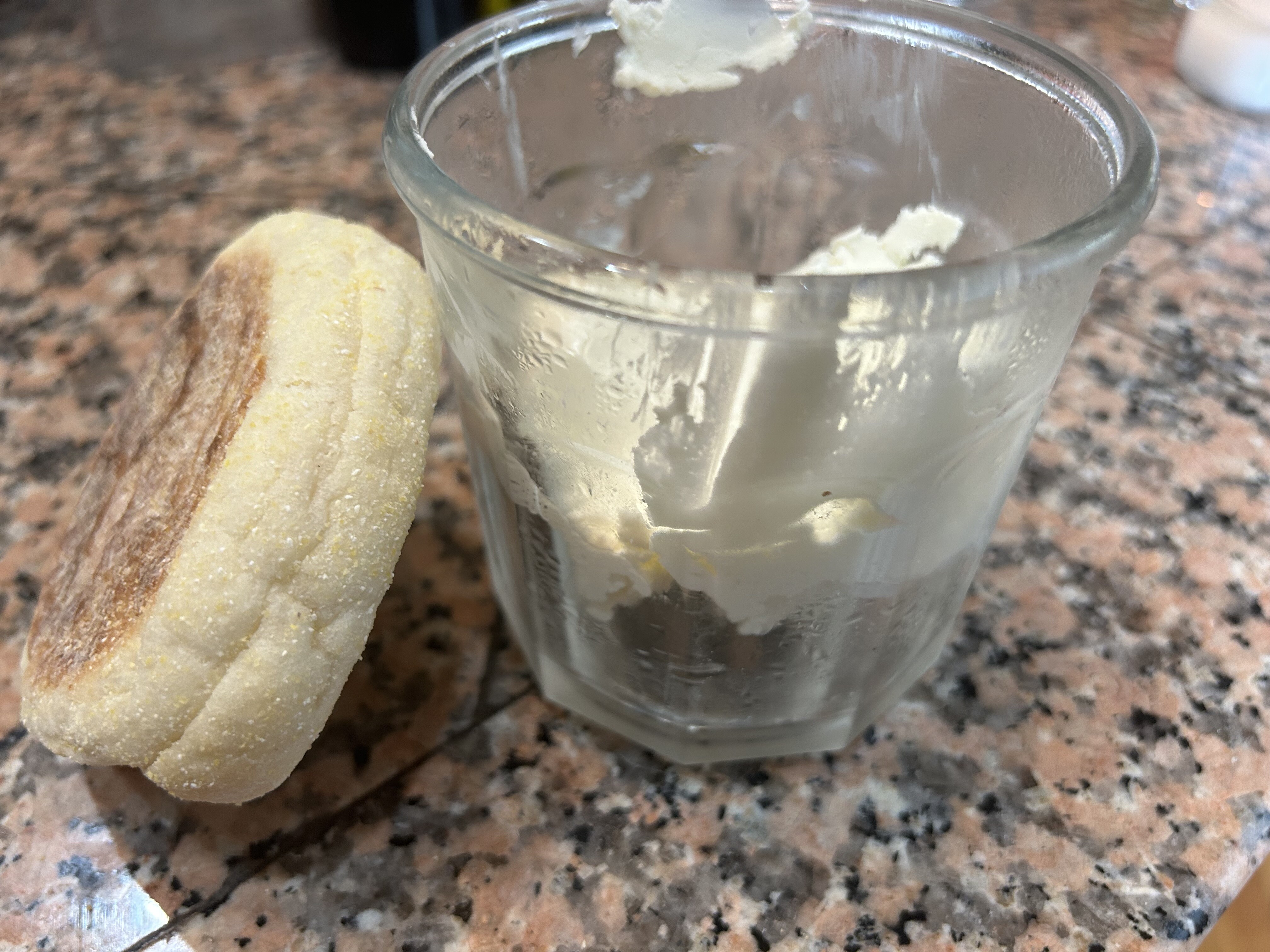
A memorable experience was the 2013 Boston Marathon. My son and I had pancakes before the race, which started later in the day. Along with five energy gels and Gatorade at every other mile, this fueling strategy helped me finish in 3:32:17 at age 65, starting from the back and passing thousands of runners.
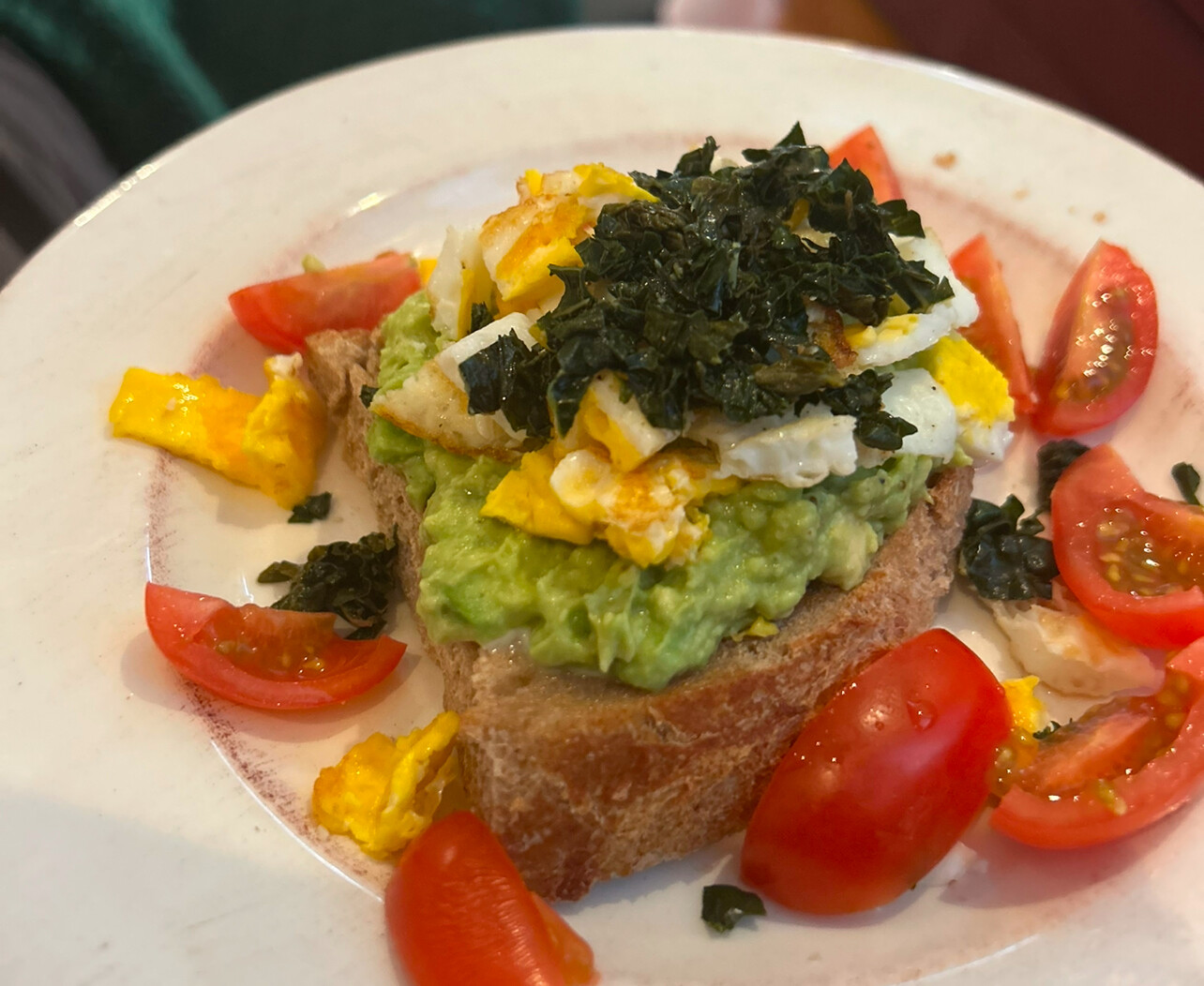
Since turning 70, I have made it a habit to eat something about an hour before running. My go-to is half an English muffin with cream cheese. This morning, Catherine prepared avocado toast, which, though more substantial than usual, worked well.
In conclusion, I have found that consuming a light meal or snack an hour or two before running enhances performance and energy levels. It is essential to find what works best for you through personal experimentation.
Insights from others on Pre-Run Nutrition
My personal experiences align with broader recommendations from nutrition experts. Consuming carbohydrates before a run is crucial, as they serve as the body's primary energy source. Registered dietitian Brenna Larson emphasizes that eating before a workout helps maintain stable blood sugar levels, supports muscle endurance, and promotes faster recovery. She suggests having a meal 2 to 3 hours before exercise or a carbohydrate-rich snack 30 to 60 minutes prior for quick energy.
Ideal pre-run foods include a mix of carbs and protein, such as fruit with peanut butter, Greek yogurt with honey, dried fruit and nuts, oatmeal with banana, or berry smoothies with nut butter. These combinations provide essential nutrients to sustain energy and aid muscle repair.
It is also important to avoid high-fat, high-fiber foods, and large meals right before running to prevent digestive issues. Finding the right diet requires personal experimentation, and keeping a food journal can help optimize performance and comfort.
by Bob Anderson
Login to leave a comment
What the elites eat: Marathon Edition
Curious about what elite marathoners eat to fuel their peak performance? From carb-loaded pre-race meals to post-race burger feasts, here’s an inside look at what the elites eat before, during, and after a marathon.
As runners and human beings, we’re naturally curious, slightly nosy people. With information instantly available with the twitch of a finger across our iPhone screens, this curiosity has never been easier to satisfy. Plus, many of our favorite runners are more transparent than ever about their training blocks, pulling back the blinds through social media to show what it takes to be the best. Which is why we’re ever-fascinated by the race-related nutrition strategy of elite runners, who often perform at superhero-like levels.
We asked a few elite marathoners what they eat surrounding race day—pre-race dinner, pre-race breakfast, and post-race celebration—so you don’t have to.
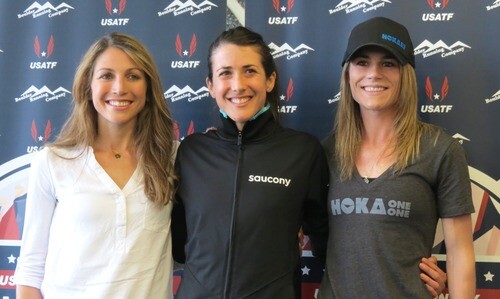
Note: One sentiment echoed among all of the athletes interviewed was that their diets are personal and have gone through lots of trial-and-error to be finessed to their specifications. No lifestyle should be replicated exactly.
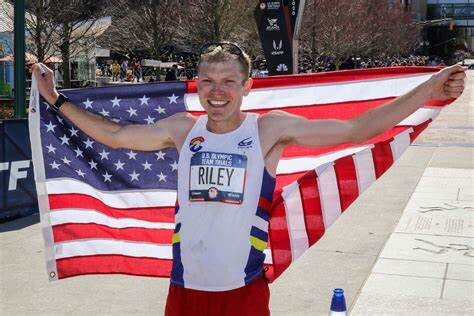
35, Boulder, Colorado
About him: First American and ninth overall finisher in the 2019 Chicago Marathon (2:10:36). Placed second at the 2020 U.S. Olympic Trials Marathon (2:10:02); Finished 28th in Tokyo Olympics marathon (2:16:26). After a second round of double Haglund’s surgery in 2022, he’s back in top form and running the 2024 New York City Marathon on November 3.
The night(s) before a race:
“I start thinking about meals two nights out, and I go carb-heavy on both. For the first night, I like to have Thai food, usually a noodle dish, and a side of rice. The only thing I’ll really avoid is spice since I’ve had issues from it a couple times. The night before, I do pasta, usually a marinara (that’s what a lot of races provide for the elite athletes), but a good pesto sauce works well, too. I mostly stay away from the creamy sauces. I don’t like to get too much more specific—you never know exactly what’s going to be available, so I try not to make particular foods part of my routine.”
Race morning:
“Race mornings I’ll get up at least three hours before (I prefer four, but with 7 to 8 A.M. starts, that becomes a little counter-productive), I’ll go for a short walk with some skipping or something, just to get the body moving. My first choice for breakfast is oatmeal with peanut butter, honey, and a little fruit mixed in. And at least one, usually two cups of coffee. It’s not something to avoid, but I recommend making sure that you have more than just simple carbs (cereal, muffin, etc), I find that if there isn’t at least some protein, I start getting that ‘empty’ feeling during my warmup, and if that mixes with the adrenaline, I feel real queasy. If I’m taking gels, I take one on the start line, maybe five minutes before. I also like Generation UCAN, which I’ll sip as I’m going through my drills, maybe half an hour out.”
During the race:
“I like to get my calories from gels and have just electrolytes in my bottles. Most major marathons provide drink stations every 5K, and I’ll drink about 8-10 oz of SOS per bottle (there can be splashing, and you never get it all out). I’ll take Roctane gels before every other drink station (every 30 minutes or so).”
Post-race meal:
“Most races I want a hash—lots of potatoes with some eggs, bacon, cheese, and veggies all mixed up, but after marathons my stomach takes a while to settle down, so I’m more in a lunch mood. So my go-to post-race meal is a big bistro bacon cheeseburger, ideally with an onion ring and barbecue sauce, side of fries, and a beer. I mostly stay away from fried foods during a build up, but I always take at least a week off after a marathon and at this point, that beer and burger is almost a Pavlovian ‘vacation time’ signal for my whole body.”
41, Flagstaff, Arizona
About her: She’s the fourth-fastest American woman in history based on her personal best (2:20:2) at the 2020 Marathon Project; Second-fastest American female half-marathon runner and former American record-holder (1:07:15). Most recently, she was 18th overall and the women’s master champion in the 2024 Chicago Marathon (2:30:12).
The night(s) before a race:
“Rice with chicken. I skip the veggies to not risk having to make a bathroom stop in the race.”
Pre-race breakfast:
“Two scoops of UCAN energy powder with whey protein, and a little bit of almond butter.” Bonus, Hall credits her husband, Ryan Hall, as being the best coffee maker, brewing pour-over, medium roast coffee blended with butter.
During the race:
Ketone-IQ—peach flavored.
Post-race meal:
“My favorite post-meal race is Thai food. I’m usually eating a lot of boring food before the race, so I want something spicy and more flavorful after.”
Bonus—Lunch during training blocks:
“Two scoops of UCAN powder, two pieces of gluten-free bread with Kerrygold Butter.”
36, Boulder, Colorado
About her: Won the 2019 Grandma’s Marathon and finished ninth in the 2020 U.S. Women’s Olympic Trials Marathon in 2:30:39. She was the top American finisher in the Boston Marathon in 2021 (fifth, 2:27:12, ) and 2022 (10th, 2:25:57). In January, she placed ninth in the Houston Half Marathon in a new personal best of 1:08:52.
The night(s) before a race:
“I always have the same thing. Basically, a couple cups of white rice and a chicken breast is where I tend to fall. White rice is going to fuel the most carbs per serving. I used to mix up potatoes and white rice, but for me, I digest white rice well, I feel better, it’s easy to find, simple, and works well.
I don’t care about spices—and I’m usually not making it myself if I’m not at home. Typically, before races, there’s a pre-race dinner, and chicken is an option. I wouldn’t do any cream-based sauces. If it tastes good, great. If it doesn’t, great. I don’t care.”
Pre-race breakfast:
“Typically it’s oatmeal with a tablespoon of peanut butter, a banana, and maybe honey. I’m not 100 percent satisfied with my pre-race meal, because sometimes it can feel a bit heavy in my stomach, because oatmeal does have some fiber. So I try to play around with things. Sometimes I’ll do a couple pieces of toast with a banana and peanut butter. I can switch between those two. Try to get 500-600 calories in, mostly from carbs, two-three hours before the race. Plus, I drink coffee with half-and-half.
Post-race meal:
“Immediately after the race, I honestly will grab whatever is available. Typically, after a race, we’ll be shuttled to a post-race holding area where you’re waiting, so there are usually refreshments there. I’ll slam Gatorade—anything with sugar and electrolytes. Maybe there’s my own bottle with Skratch in it. Banana, a protein shake. I’m pretty open, as long as it’s immediate.
And as far as later, it completely depends. I’m trying to do a better job at this—especially after a major marathon—but it kind of takes a while. You might get drug-tested, then shuttled back to your hotel, shower, then six hours later you’re like, ‘I need to eat.’ If it’s a marathon, I love a big burger with fries—the classic stuff, lettuce, tomato, onion, and tons of ketchup and mayo. That’s something my body would crave. Fries are my favorite food ever that I don’t typically eat during a marathon cycle.”
35, Louisville, Colorado
About her: Finished sixth in the 2017 London Marathon (2:25:38), seventh in the 2019 New York City Marathon (2:28:23), eighth in the 2019 Chicago Marathon (2:29:06), eighth in the 2021 New York City Marathon (2:27:00). Most recently, an Achilles injury forced her to pull out of the 2024 Chicago Marathon days before the race.
The night(s) before a race:
“I do 72-hours of carb-loading. So, obviously, in the build to that, carbs are key. Three days out from the race is when I start it. It is always the same. The night before, I have pasta with marinara sauce, and I don’t do a lot of protein with that. I do love angel hair, that’s my go-to. I also like rigatoni. Plus, I’ll have some type of bread and salad.”
Pre-race breakfast:
“The morning of, I always do a plain bagel and peanut butter with a banana. I’ve done that since high school. And I do an Americano with two shots. I eat that threeish hours out from the race.
During the race:
“I’ll take my first gel 15 minutes before the start of the race. I’ve been all over the place with what I take, but right now, Neversecond. Big fan of their Cola C30 gels. They worked wonders for me during this build. I had some stomach issues earlier in the build with long runs and couldn’t quite figure out what was going on, so I switched up my nutrition during, so never second has been a godsend.”
Post-race meal:
“After the race, it’s hard because usually my stomach is a mess. Not only did you just run really hard for two and a half hours, but you’re taking all this fuel during, so I have a really hard time eating solids immediately after the race. My choice if I can get it is soda. I’m not a big soda drinker, but after a marathon, all I want is a Coke, Sprite, or Ginger Ale. I’m always really thirsty when I finish.
Then later when I feel like eating, I always do a burger (stacked with all the fixings—sometimes adding bacon) and sweet potato fries with ranch. I never opt out of Ranch. Anything I can dip ranch in is a plus for me. And I order a Blue Moon. I’m not a beer drinker, but that’s what I want after a marathon.”
by Mallory Arnold
Login to leave a comment
I Tried Training for a Half-Marathon and Failed—These Are the Five Things I'll Do Differently Next Time
Here's how I plan to prepare to run a successful half-marathon after learning the hard way.
As a kid, I always looked up to my older brother as the embodiment of athleticism. He was a great runner, and his achievements in the world of competitive racing were awe-inspiring. With each race he conquered, he fueled my desire to follow in his footsteps. But there was one small problem: I didn’t seem to have inherited the natural running gene that he had, and my short-lived eighth-grade cross-country record was proof of that.
However, as an adult, I wanted to give my running career another shot, so I challenged myself to run a half-marathon. Unfortunately, I lost the motivation to train and gave up around the 8-mile mark, never making it to race day. Looking back on my failed attempt, it's evident there were a few key errors from the start that left me struggling to find my stride. While I’m not actively training, I run regularly and finishing a half-marathon is a goal of mine in the future. Here are the five things I'll do differently the next time I train for a half-marathon.
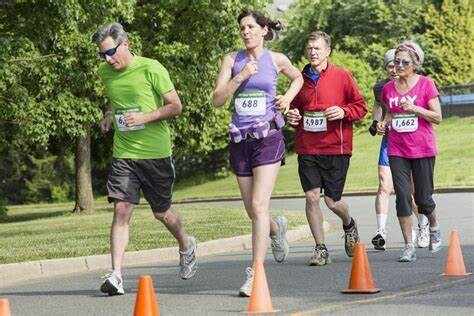
1. Stay Hydrated
One of my biggest missteps while training was underestimating the importance of hydration. I simply didn’t drink enough water before, during or after my runs. I’d often finish my runs feeling drained, dehydrated and unable to recover as quickly as I could have. When you exercise and sweat, your body loses electrolytes and water, so it’s important to replenish those stores by drinking water. By not staying hydrated, I ended up with a weaker workout.

To ensure I stay hydrated when I train again for a half-marathon, I'll be relying on my trusty Stanley water bottle. It holds 40 ounces of water, so I don't have to worry about constantly filling up throughout the day. Currently, I fill my water bottle up before bed and place it on my nightstand so I start hydrating as soon as I wake up. This is a habit that leaves me more hydrated overall, and I plan to continue doing this the next time I train. I’ll also be incorporating electrolyte-rich beverages like Gatorade into my post-run routine. It's packed with sodium and potassium, two essential minerals that are lost while you sweat. With my new approach toward hydration, I already feel better during my runs and know that I’ll see the same results when I start training again.
2. Eat a More Balanced Diet
When I first attempted to take running seriously, I wasn’t fueling my body properly. As much as I love McDonald’s Free Fries Friday, I quickly realized habits like these weren’t helping me accomplish my goals. It became evident that a balanced eating pattern with complex carbs and protein was a missing piece of the puzzle. Complex carbs like whole grains, fruits and vegetables have become my go-to choices. They provide a steady release of energy, which helps support stable energy levels and avoid those dreaded spikes and crashes during longer runs. Mindfully incorporating complex carbs into my diet once I start training again, especially before long workouts, may make a noticeable difference in my energy levels.
Meanwhile, incorporating enough protein into my diet has been crucial for my recovery after runs. Often if my legs were sore, I would use it as an excuse to skip a workout and take a recovery day. But the soreness I was experiencing was from pushing my muscles to grow and work harder than they were used to. Eating enough protein is important to ensure you’re getting the amino acids that may help the maintenance, repair and growth of muscles. Next time around, by mindfully eating a balanced amount of protein, I can improve my endurance during training.
3. Get a Running Buddy
One practice that I started during my weekly runs, and plan to add when I train for a half-marathon again, is running with a buddy. Running can sometimes feel like a solitary endeavor, but having someone by your side can make it so much more motivating. The joy of sharing the experience with someone else, specifically my roommate, has turned each dreaded workout into a fun, social activity. And while having fun is more than enough reason to run with a partner, we also help each other stay motivated and accountable. Plus, it’ll be fun to share the finish line with someone I know!
4. Switch Up Running Locations
During my first attempt at training, I found myself opting for the treadmill located in my apartment's fitness center. It was undoubtedly convenient, and I didn’t have to face the crisp morning air. But running indoors quickly became monotonous and sucked all the joy out of my workout—that’s why I’ll be running outside next time. Whether it’s a scenic trail, through a beautiful park or simply just around my neighborhood, the landscape changes with every step and makes running feel more special. Plus, the different terrain offers a variety of challenges as the elevation rises and falls. Running outdoors also keeps my mind engaged by the evolving environment. When I enjoy my surroundings more, I become less focused on the distance left to go and more entertained by the experience of my run. I think this simple change will make the 13 miles fly by.
5. Change My Mindset
During my treadmill workout phase, I used to be fixated on maintaining a specific pace, and if I fell short, I’d get frustrated. However, my perspective on running and training underwent a significant shift, and I have come to realize that mindset is everything. Next time around, I will go in with the mindset that true pride isn’t found in the digits on the stopwatch, but in the commitment, dedication and mental strength that is poured into training. I understand now that chasing a speed is not an accomplishment. Shifting to this perspective will be a challenge, especially for someone with a competitive nature like mine, but it’ll allow me to savor each run and recognize that the ultimate reward is the personal growth I’ll experience along the way.
by Jessica Ball, M.S., RD
Login to leave a comment
DEHYDRATION: IS IT ALL IN YOUR HEAD?
As you slog through those final dog-day runs of late summer, you’re no doubt making sure to replace all the fluids you sweat out—just as you never forget to floss and always send thank-you notes after dinner parties. In case you ever slack off, though, consider the following odd—and oddly reassuring—study.
Scientists at Loughborough University’s National Centre for Sport and Exercise Medicine in Britain, led by Lewis James, put a group of volunteers through a series of gruelling 15-minute cycling time trials in a heat chamber set to 34 C and 50 per cent humidity. Before each time trial, they did enough light exercise to sweat out two per cent of their starting body weight. Then the researchers snaked a feeding tube down their nose or throat and reinfused some of the fluids—or not.
The subjects thought they were testing the effects of different sports drinks. In reality, the scientists infused just enough water directly into their stomachs to set their dehydration level at 1.6 per cent. Then they lied to the subjects and told them either that they were two per cent dehydrated, or that they were fully rehydrated. The only difference between trials was what the subjects believed about their hydration. The result: their performance decreased by six per cent when they thought they were dehydrated, and they reported higher levels of thirst. Conversely, they reported more stomach fullness and bloating after the fictitious rehydration.
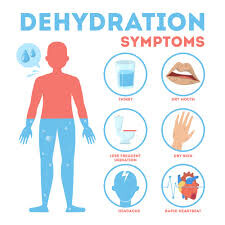
Such trick studies aren’t entirely new. James and his colleagues have published previous studies with a higher level of dehydration—three per cent—and, in that case, performance suffered equally, regardless of what the subjects believed about their hydration status. And back in 2015, Brock University’s Stephen Cheung used intravenous drips to manipulate hydration levels; in Cheung’s study, even three per cent dehydration had no apparent effect on cycling performance.
It’s not just dehydration that’s, at least in part, “in your head.” One study found that you’ll be less alert and more fatigued if you’re given fake sleep-tracker data that incorrectly suggests you had a bad night of sleep. A heating pad in the small of your back that makes you feel warm will make you run slower, even if the amount of heat it provides is too small to actually change your body temperature. A swig of sports drink will boost your performance, even if you spit it out rather than swallow it.
The wrong message to take from all this is that hydration—and heat and sleep and so on—doesn’t matter. The battle over hydration has been raging for almost two decades. It started with South African researcher Tim Noakes pointing out flaws in the existing dehydration research, most notably that the vast majority of studies didn’t distinguish between thirst and dehydration—and didn’t blind subjects to their condition. Those kinds of studies, as James’s new study makes clear, do indeed make dehydration seem worse than it really is.
Noakes wrote a book in 2012 called Waterlogged that pushed this argument to extremes, suggesting most dehydration research was a conspiracy funded by sports drink companies. True dehydration, he suggested, would be marked by the signs observed in a company of soldiers who got lost in the Texas desert in 1877: “an uncontrollable desire for water; inability to detect the presence of fluid or food in the mouth; inability to masticate food; uncontrollable desire to ingest any fluid, even blood or urine.” Others joined the fray; CrossFit launched a public campaign accusing Gatorade and the American College of Sports Medicine of causing numerous deaths by promoting overdrinking. Hydration became yet another culture war.
Of course, hydration isn’t the only topic where runners have drawn lines in the sand. Barefoot running, low-carb diets … heck, even nasal breathing—these are all topics where people don’t just believe they’re right, they believe that those who disagree with them must be doing it wrong. One of the most interesting and controversial scientific debates I’ve written about is whether our limits are dictated by the brain or the body. It seems clear to me that both play a role, but some people insist it has to be one or the other. “It’s like Freud saying it’s all sex,” the endurance writer Matt Fitzgerald once told me. “A lot is sex, but not everything!”
So where does that leave us on hydration? Noakes’s mantra is that you should drink when you’re thirsty and not worry about anything else. As a general guiding principle, I think that’s a good place to start. The fear that you need to be constantly drinking ahead of thirst—that by the time you notice you’re thirsty it’s already too late—is based on those outdated studies that conflate thirst and dehydration. And letting yourself get temporarily thirsty, like during a relaxed one-hour run, is no big deal, as long as you’ll have an opportunity to drink when you finish. In fact, there’s even evidence that sometimes allowing yourself to get thirsty during a run could help you adjust more rapidly to hot weather.
But thirst is just a rough guide. It only works if you’re paying attention to it, and if you’re able to respond when you notice it. One reason it makes sense to drink ahead of thirst in a marathon is that, if you get thirsty between fluid stations, it may be a long time before you get another chance to drink. And even if James found that 1.6 per cent dehydration doesn’t matter, his previous work suggested that 3.0 per cent dehydration does matter. There’s a middle ground here, one that acknowledges the physiological reality of dehydration but allows a reasonable margin for error. So, by all means, keep minding your hydration, and keep flossing and writing bread-and-butter notes—but if it slips your mind now and then, don’t stress about it.
Alex Hutchinson is a Toronto journalist specializing in the science of running and other endurance sports, and the author of Endure: Mind, Body, and the Curiously Elastic Limits of Human Performance (now in paperback).
Login to leave a comment
A Lifetime Journey of Fueling Mistakes
It's helpful to know what your stomach can tolerate before a run—even that backfires sometimes.
During the 2023 New York City Marathon, Runner’s World set up shop in an empty storefront on West 57th Street with Adidas and hosted three days of inspiring talks, shakeout runs, and shoe demos.
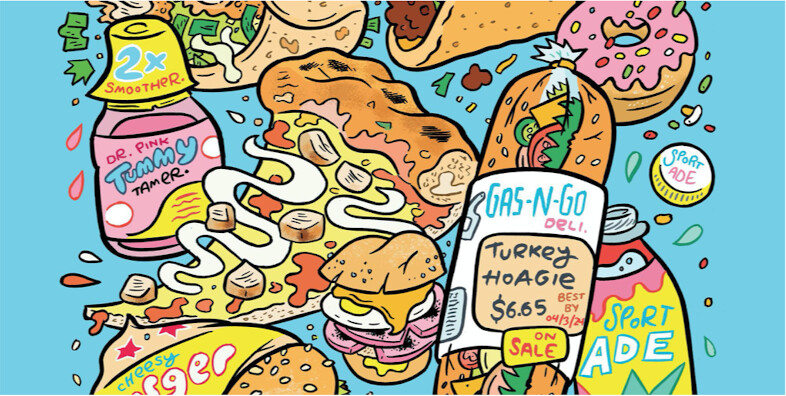
Because of a last-minute cancellation by one guest speaker, I was called in to talk about nutrition. This was bound to be interesting. See, around the office, I’m known for doing things in unconventional or even questionable ways. I’ll go on long runs without any water or gels. At lunch, I’m more likely to grab McDonald’s or a gas station hoagie than a salad. Sometimes it works—sometimes it doesn’t. But I know the sage advice this magazine dispenses, even if I don’t heed it in my daily running life.
For the duration of the nutrition panel, I did as instructed. But purely for your entertainment, I offer a sampling of questionable fueling strategies and gastronomical gaffes that I have jotted down in my training log over the past couple of decades.
In case it’s not clear by now: You’re better off not following my example!
A new marathon PR! By nearly 5 minutes. Wasn’t sure what was going to happen today, really. I hadn’t slept well the last few nights. Plus, I ate a brisket sandwich for dinner and Pepto-Bismol for dessert last night.
10/15/2014 Seven Miles:
Note to self: Buffalo chicken pizza is a no-go if running after work. Great run with G.H., but I had some stomach issues 2 miles from the end and had to jump into the bushes. Not fun. The run, however, was.
9/20/2009 Adirondack Marathon:
One to forget. I was moving along well and was in second place overall for the first 22 miles. But had trouble keeping fluids down today and couldn’t keep it together when I got warm on the front half of the course. Maybe I shouldn’t eat a sausage sandwich at midnight before the race next year.
5/5/2017 Taco Mile:
I spent $129 at Taco Bell today. Filled 2 Ikea bags. Eat a taco, run a lap, repeat. That was fun. I was slow. But it was still a lot of fun.
10/11/2021 Boston Marathon:
Had lots of support out there. Frank gave me his mimosa at mile 18.
5/20/2020 Seven Miles:
Burping up the egg and pork roll sandwich I ate for lunch. Whoops.
6/16/2017 Beer Mile:
Fourth lap, beer going down good, but I started laughing when Kit yakked. I nearly did myself, but spewed a mouthful of beer, earning myself a penalty lap. Damn.
12/2/2019 Four Miles:
Got a late start to the day, but sneaked out for a lunch run. A good snowfall. Stopped at Burger King on my way back home. 2 for $6 Whoppers. Yay.
2/4/2024 19 Miles Long Run:
Felt hungry when I ran past a 7-11, so I stopped in for a donut (and Gatorade).
11/10/2017 Five Miles:
Ate a chicken Caesar wrap too late in the day. Vomited a little on the Brooklyn Bridge and nearly pooped my tights. Oof.
12/21/2015 Seven Miles:
We went to Joe’s Shanghai for a work holiday lunch. 1:30 reservation means I burped up dumplings for 7 miles after work. Not fun.
Login to leave a comment
Teen sprinter sues Gatorade over doping ban that cost him an Olympic spot
The fastest high school sprinter in history is suing Gatorade, claiming the company gave him a fraudulently certified product that contained a banned substance and led to his four-year banishment from track and field, costing him a chance to compete in the Paris Olympics.
Issam Asinga, the Surinamese teenager who set the under-20 world record in the 100 meters, said that when Gatorade honored him as its high school track and field athlete of the year in July 2023, it provided a gift basket that included Gatorade Recovery Gummies. In a lawsuit filed Wednesday, the 19-year-old Asinga claims those gummies are the reason he later tested positive for the banned substance GW1516, which led to a four-year ban this May and stripped him of his record. The suit further claims the company took measures to protect its reputation, damaging Asinga’s in the process.
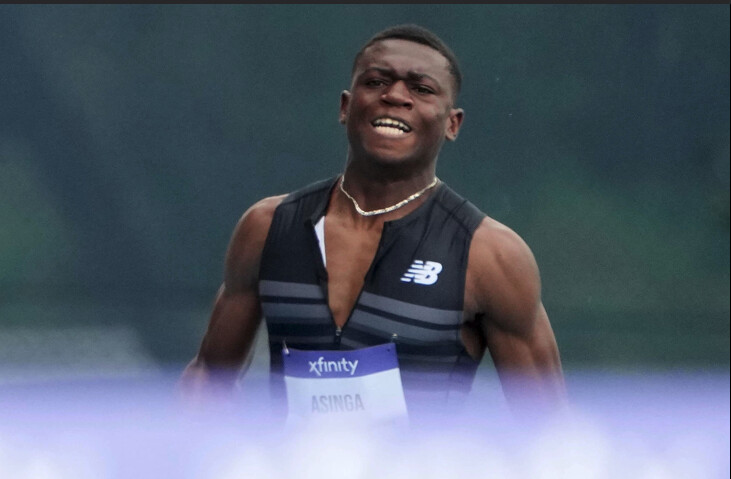
Asinga filed suit in the Southern District of New York against Gatorade and Pepsi Co., its parent company. He is seeking, according to the lawsuit, to “recoup the millions of dollars he has lost in economic opportunities, as well as compensation for the devastating emotional harm he has suffered.”
In an emailed statement, a Gatorade spokesperson said: “The product in question is completely safe and the claims made are false. … Gatorade products are FDA compliant and safe for athlete consumption, which was validated by the findings of the Athletics Integrity Unit investigation.”
Were he eligible, Asinga could have competed for Suriname at the Paris Olympics, earning potentially millions on a sponsorship deal. Instead, he is banned from the Games and lost his endorsement opportunity. The suspension also will prohibit him from training with or competing his college teammates at Texas A&M, and despite support from his coaches, Asinga believes he could lose his scholarship.
“You’re either guilty or you’re not,” Asinga said in a Zoom interview alongside his lawyers. “I know I’m not, so I’ve got to chase my dream. I’ve got two Olympian parents; I was born to run. Am I going to destroy my dream because of something I didn’t do, or am I going to keep fighting until the end?”
‘I was honored when they told me to get tested’
Asinga grew up in Atlanta, went to a St. Louis boarding school, lived a couple of years in his mother’s native Zambia, went to high school in Florida and currently attends Texas A&M. He is the son of track and field Olympians: His mother, Ngozi, competed for Zambia, and his father, Tommy, once served as the flag bearer for Suriname.
By the summer of 2023, Asinga had become one of the world’s most promising track athletes. That April, he stunned the track world by beating world champion Noah Lyles in a 100-meter race in Florida with a wind-aided time of 9.83 seconds.
Asinga chose to compete under the flag of Suriname. In a Zoom interview Wednesday, as he described the effect of his son’s suspension on his home country, Tommy began to cry.
“I felt like I had more of an opportunity to make a difference running for Suriname,” Issam Asinga said. “In Suriname, the one thing that’s holding them back is the facilities. They don’t have someone who can make that difference. I can use whatever I do in my track career to help better this country.”
Gatorade named him its 2023 Florida boys’ track and field player of the year and invited him to a July 11 ceremony in Los Angeles. One month before the ceremony, according to the lawsuit, Asinga took a drug test that came back clean.
“I was honored when they told me to get tested,” Asinga said. “I was like, ‘Okay, bet!’ That’s how I know I’m going somewhere.”
At a gathering the day before the awards ceremony, Gatorade gave Asinga and other athletes a gift bag that included cherry-flavored Gatorade Recovery Gummies. The container was stamped as “NSF Certified for Sport.” NSF is an independent public health organization.
According to the lawsuit, Asinga’s mother texted Issam’s coach, Gerald Phiri, a photo of the ingredient label and asked, “Is this ok to eat[?]”
When Ngozi showed him a picture of the Gatorade logo, Phiri wrote back: “Oh yea these are both fine. Gatorade doesn’t make products that are against sporting rules.”
For the next two weeks, according to the lawsuit, Asinga took two gummies after his workouts. The Athletics Integrity Unit (AIU), the drug-testing arm of World Athletics, tested him again July 18.
Asinga stopped taking the gummies “on or around” July 25, according to the lawsuit. On July 28, Asinga ran the 100 meters in 9.89 seconds at a meet in São Paulo, Brazil. This time, the wind was legal: He had broken the under-20 world record. The AIU tested him again on that day, and that July 28 test would come back clean.
On Aug. 9, 2023, the AIU informed Asinga he had failed the July 18 drug test. Picograms of GW1516 had been detected in his urine. When Asinga received the call, he said, he dropped to his knees in shock.
“It was devastating,” Asinga said. “It was the worst day of my life.”
Known as cardarine, GW1516 was originally developed as a potential treatment for obesity and alters how the body metabolizes fat, according the U.S. Anti-Doping Agency. It is illegal for use in food or medication. The U.S. Anti-Doping Agency notes in its handbook, “athletes should be aware, however, that dietary supplements may be contaminated with this compound.”
Asinga and his lawyer, Paul Greene, who specializes in defending athletes accused of performance-enhancing drug use, compiled a list of foods and supplements he had consumed that could be tested for GW1516. They included the Gatorade gummies.
“We kind of laughed it off,” Asinga said. “It was the last thing I would have thought this source would have been in. This brand is something I’ve looked up to my whole life. Gatorade is a part of sports.”
Asinga sent the gummies to the same lab, according to the lawsuit. On Oct. 26, 2023, according to the lawsuit, the lab notified the AIU that “preliminary findings” concluded the Gatorade gummies had been contaminated with GW1516.
When a company produces a dietary supplement that requires certification, it makes them in numbered lots so each lot can be tracked in case of contamination. By federal regulation, it must keep samples of each lot.
According to the lawsuit, further testing at the Utah lab confirmed not only the GW1516 contamination in the gummies Asinga had supplied; it also showed the same baseline concentration of GW1516 that had been detected in Asinga’s drug test. The chemical codes matched. The lab provided those analytical results to the AIU.
According to the AIU decision, the lab noted “two unusual aspects.” There was a “large discrepancy in the findings between the two containers of the Gatorade Recovery Gummies” and the contamination was present on the surface of the gummy rather than uniformly distributed.
The lab concluded “it was not possible to rule out deliberate adulteration of the product after it was opened,” the decision read.
Asinga’s lawyers said it defies belief that Asinga could have adulterated the gummies.
“All of them would have had to have been dipped individually in a formula that would have been watered to a trillionth of a gram,” Greene said. “An 18-year-old kid living in a dorm would have had to have done that. It’s almost laughable that that’s what he was accused of doing.”
According to the lawsuit, Asinga again contacted Gatorade and requested a sealed bottle from the 22092117150234 lot.
According to the lawsuit, Gatorade instead sent a bottle of recovery gummies to the AIU from a different lot. That lot had been tested by NSF and was accurately labeled as such, according to the lawsuit. The NSF, in a a public notice issued in early June, said the container in Asinga’s case came from an allotment it had not tested.
“They did a bait-and-switch,” said Alexis Chardon, the lawyer representing Asinga in court. “They said, ‘We don’t have a sealed supplement of the one we gave Issam. But we have this other one. Why don’t you take this one?’ That one was NSF tested. And then they let that lie fester.”
“Gatorade fully complied with the Athletics Integrity Unit investigation, including producing evidence that was accepted by the AIU that the gummies were not contaminated with the banned substance in their original ruling,” a Gatorade spokesperson said in an emailed statement.
When the AIU tested the gummies from that container, the results came back clean, according to the lawsuit. Once the AIU received those tests, it handed down its four-year ban to Asinga.
“Gatorade created, fed, and encouraged the false narrative that Issam was given ‘clean’ gummies and therefore Issam had adulterated the ones he got tested,” the lawsuit reads.
Attempting to restore a reputation
On June 14, less than two weeks after the NSF released its public notice about Gatorade, Asinga received what he hoped would be a breakthrough: A representative from the AIU called Greene and told him Gatorade had found and sent a sealed bottle from the same lot as Asinga’s bottle of recovery gummies. If that bottle was tainted with GW1516, it would be pivotal to overturning Asinga’s suspension.
The tests came back negative, according to the lawsuit.
Feeling “confused,” according to the lawsuit, Asinga contacted other athletes from the 2023 awards ceremony and found one who had a similar bottle of recovery gummies. When that bottle was tested for GW1516, according to the lawsuit, it also came back negative.
“For a while, it looked like we dug ourselves in deeper,” Chardon said.
According to the lawsuit, Asinga’s team had one more idea: On June 26, they asked for his original recovery gummies to be retested. They wondered whether the GW1516 had become undetectable over the previous six months.
On July 5, according to the lawsuit, the results came back: The gummies that once had tested positive now returned a negative result.
“Gatorade’s delay had cost Issam the possibility of proving contamination in a sealed container from the same lot he had ingested, robbing him of the possibility of ever meeting the AIU’s gold standard test for showing innocent ingestion of a banned substance,” the lawsuit reads.
In a statement, Gatorade said it “spent those months looking for the specific lot number in the field and, once sourced, immediately provided the product to the AIU.”
Because GW1516 is illegal, Greene said, scant testing has been done on it. Greene is hoping to organize lab tests that can prove GW1516 could become undetectable over the six months. He hopes to use that finding in his Court of Arbitration for Sport appeal later this year.
The lawsuit against Gatorade made Wednesday “one of the first days I can say I’m actually taking a deep breath and let it out a little bit,” Ngozi said. “As a parent, it’s so overwhelming. You never in a million years expect your child to be fighting for his character and his integrity because of something he didn’t do.”
Over the past month, Asinga lost his final glimmer of hope that he could run in the Paris Olympics. He has remained optimistic that he will sprint next year for Texas A&M. He has cried and felt depressed at times. Over the winter, he stopped practicing for several days and wondered whether track was worth it. He still believes he will prevail.
“It hurts,” Asinga said. “There’s been some bad days. The clouds might be over us. But they’re going to have to clear eventually.”
Login to leave a comment
The Issam Asinga Case: Evil Coverup or Did The Fastest High School Sprinter Ever Test Positive For Drugs After Eating Gatorade Gummies?
Six weeks ago, 19-year-old Issam Asinga, the fastest teen sprinter in world history, was handed a four-year ban from the sport of track & field after testing positive for the banned substance GW1516. Asinga’s positive sample came in July 2023, just days before he ran 9.89 seconds to become, at the time, the youngest person in history to break 10 seconds for 100 meters. Asinga, who had been provisionally suspended since August 2023 by the Athletics Integrity Unit (AIU), appealed the decision to the AIU’s disciplinary tribunal, who ruled against him and upheld the four-year suspension on May 27.
Until then, the details of Asinga’s case had been kept secret. Now they are public, and potentially explosive.
Asinga, who maintains his innocence, blamed the positive test on contaminated Gatorade gummies he received at the company’s National Athlete of the Year ceremony in Los Angeles last summer, where he was honored as high school track & field athlete of the year. Asinga has already appealed his case to the Court of Arbitration for Sport, where it is expected to be heard later this year. He is also mulling whether to launch a civil suit against Gatorade because the gummies in question falsely carried an NSF Certified for Sport label, which signified that the product did not contain any prohibited substances. NSF has made a public statement saying the gummies from Asinga’s lot number were not NSF Certified and the NSF Certified mark was being used without authorization.
“They distributed a supplement that wasn’t NSF Certified for Sport that had a banned substance in it,” said Asinga’s lawyer Paul Greene. “That’s violation of product liability law, negligence, implied warranty, New York state consumer protection law. I mean, it’s bad. He had the possibility of getting endorsement and NIL deals that were going to be in the millions of dollars and he lost all that as a result of this. He also lost out on the chance to compete in the World Championships and the Olympics.”
The AIU, however, was not satisfied that the gummies were the source of Asinga’s positive test, and its disciplinary tribunal agreed.
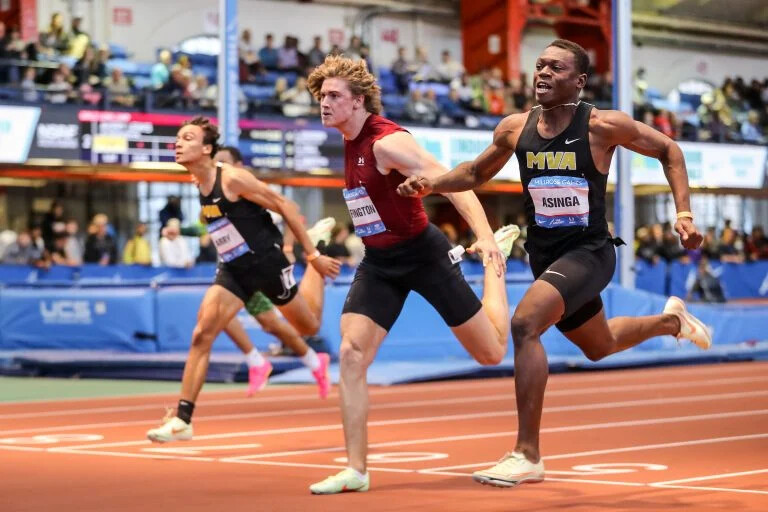
Incredible 2023 high school season
Asinga’s is one of the highest-profile doping cases in recent years. After running personal bests of 10.44 seconds in the 100m and 20.76 in the 200m as a junior in 2022 at Principia High School in Missouri, Asinga transferred to Montverde Academy in Florida for his senior year, where he improved enormously and produced one of the greatest seasons ever by a high school sprinter.
During the 2023 indoor season, Asinga won national high school titles in the 60m (6.59) and 200m (20.48) at New Balance Nationals, tying the national record in the former event (he ran 6.57 in the semis) and breaking the national record in the latter. Outdoors, Asinga ran a wind-aided 9.83 in the 100m to defeat Noah Lyles, who would go on to win the world title in that event four months later. Asinga, who was born in the US but represents Suriname internationally, then ran 19.97 in the 200m in April (#2 all-time among US high schoolers) and 9.89 in July to win the South American 100m title in Sao Paulo, Brazil. The latter time ranked Asinga in a tie for ninth in the world in 2023. It was also a world U20 record and was the first time a US high school athlete had broken the fabled 10-second barrier.
Now that world U20 record has been stripped as Asinga finds him at the center of controversy. The 43-page decision in his case released by the AIU presents only two possible versions of events.
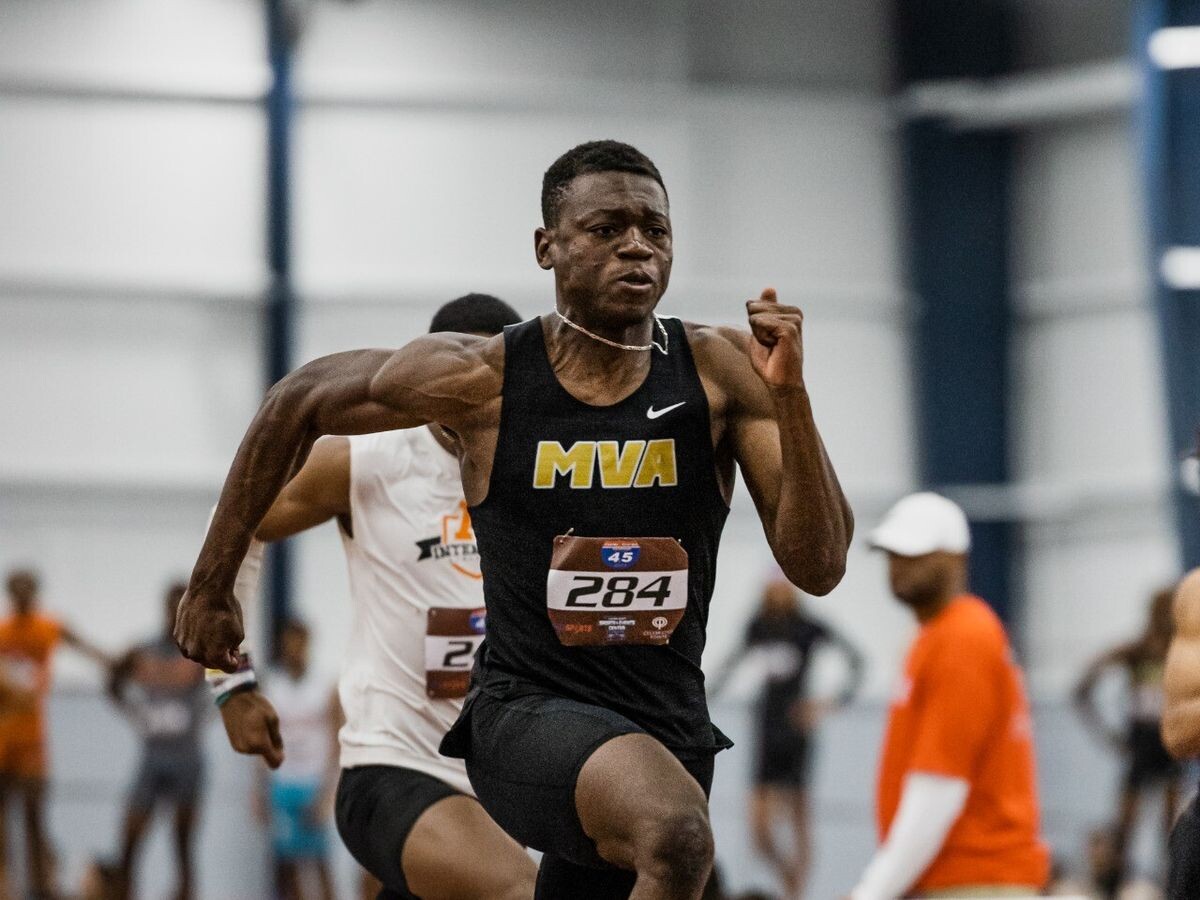
Option A: An 18-year-old was caught doping barely a month after being added to the international testing pool. Then he or someone in his camp tried to cover up his doping by manipulating evidence and defaming Gatorade, one of the world’s largest sports nutrition companies.
Option B: One of the greatest sprint talents in history was unjustly banned after consuming a tainted supplement given to him by one of the most famous brands in sports.
Neither picture is particularly rosy for the sport of track & field, but one of them must be true. After reviewing the evidence, the AIU and its disciplinary tribunal is clear which version it believes: Option A. As a result, Asinga is banned from competition until 2027 barring a successful appeal to CAS.
Background: Asinga enters the testing pool
Most high school track athletes, even elite ones, are rarely drug-tested. But by the spring of 2023, Asinga was running so fast it was becoming clear he could be a factor at that summer’s World Championships in Budapest. He was added to the World Athletics Testing Pool on June 1.
Asinga was tested on June 11 and returned a negative result. He was tested again out-of-competition on July 18 (in his training base of Clermont, Fla.) and again at the South American championships on July 28. The July 18 sample tested positive for GW1516, a banned substance that modifies how the body metabolizes fat and has been found to cause cancer. Specifically, Asinga’s sample tested positive for low levels of two metabolites of GW1516 — a metabolite is a substance produced when the body breaks down a specific drug. In this case, Asinga’s urine contained the GW1516 sulfone metabolite (at a concentration of 0.2 nanograms per milliliter in both his A sample and B sample) and the GW1516 sulfoxide metabolite (at a concentration of 0.5 ng/mL in his A sample and 0.4 ng/mL in his B sample).
On August 9, Asinga was informed of his positive test and provisionally suspended from competition. Shortly after, in an effort to prove his innocence, he began sending his supplements to be tested for contamination at the Sports Medicine Research and Testing Laboratory (SMRTL), a WADA-accredited lab in Salt Lake City. The first supplement Asinga sent, melatonin gummies, tested negative. Asinga then sent a larger set of supplements, including Airborne and Skratch Lab Hydration packets as well as Gatorade Immune Support Gummies and Gatorade Recovery Gummies, two new products he had received at the Gatorade National Athlete of the Year ceremony on July 10.
All of the supplements tested negative for GW1516 except the Gatorade Recovery Gummies. In December, SMRTL informed the AIU that of the five gummies tested, four were positive for GW1516. That much, the parties agree on. From there, the narratives diverge.
Contaminated during manufacturing or as part of a coverup?
Asinga said he began taking the Recovery Gummies shortly after the ceremony on July 10 — initially two per day, then less consistently before traveling to Brazil for the South American championships on July 25. He said he did not take any gummies to Brazil. Asinga declared the gummies as a supplement on the doping control form for his July 18 test and said he had no concerns about the gummies because the container carried the NSF Certified for Sport label.
Greene said the AIU was initially reluctant to share the results of the SMRTL analysis with Asinga because it viewed the test results of products from an opened container as unreliable. (LetsRun.com reached out to the AIU for comment on June 2 but had not received an answer as of publication).
“Normally, SMRTL’s process and the AIU’s process is if there is a preliminary finding in a supplement, they don’t initially just tell the athlete straight away,” Greene said. “They try to go and find their own sealed version and test that too and then go to confirmation testing.”
But neither SMRTL nor the AIU could find a sealed version from the same lot number as Asinga’s gummies. So, after several weeks, the AIU relented and shared the news that the Gatorade Recovery Gummies had tested positive for GW1516. Asinga said he felt he was on his way to clearing his name.
“I was like okay, boom,” Asinga told LetsRun.com. “When I got that message, I was like, okay, finally we’re going to move forward.”
But the AIU did not agree with Asinga’s assessment and hinted at something far more sinister. In the disciplinary tribunal hearing, which took place over Zoom on April 30, Martial Saugy, former director of the WADA-accredited lab in Lausanne, Switzerland, served as an expert witness for the AIU and noted that the exterior of the gummies contained much higher concentrations of GW1516 than the interior of the gummies.
“I cannot see how these results would be consistent with a contamination during the manufacture of the gummies,” Saugy said. “These results point to an adulteration of the gummies at a later stage.”
Another key point: Asinga had opened both containers of gummies before sending them to SMRTL. And in SMRTL’s analysis, it noted a “large discrepancy” between the concentration levels of GW1516 between the containers. The two gummies tested from the first container each featured a concentration of at least 610 ng of GW1516 per gummy. Meanwhile of the three gummies tested from the second container, the highest concentration of GW1516 was 1.5 ng per gummy, and one of the gummies did not test positive for GW1516 at all.
This fact left open the possibility for manipulation; to be satisfied of his innocence, the AIU demanded to see a positive test from a separate, sealed container of gummies from the same lot number as Asinga’s.
Separate lot numbers bring questions
This is where things get complicated. The lot number printed on Asinga’s gummy containers was 22092117150234. NSF has issued a statement saying this lot number was not NSF Certified and the NSF Certified mark was being used without authorization. As part of the case, the Lausanne lab did test a sealed container of Gatorade Recovery Gummies, which tested negative. But that container was from a different lot number — lot 22092117150213, which was one of the lots that did receive NSF certification.
The gummies were not manufactured directly by Gatorade, but rather by a company contracted by Gatorade called Better Nutritionals, who manufactured the gummies for Gatorade at its plant in Gardena, Calif. As part of its case, the AIU called a former Better Nutritionals employee as a witness who testified that, for all intents and purposes, lots 22092117150234 and 22092117150213 were identical. This witness, referred to only as Witness B in the decision, made the following argument:
Witness B said lots 22092117150213 and 22092117150234 were part of the same batch of 20,000 jars’ worth of gummies cooked on the same day. That batch of 20,000 jars was separated into two lots: 7,500 jars (lot 22092117150213) would enter the marketplace immediately without the NSF Certified for Sport logo, of which a few would be sent to NSF for testing. The remaining 12,500 jars (aka lot 22092117150234, which included the gummies Asinga received) would be held back and given the NSF Certified logo predicated on NSF testing on lot 22092117150213.
Before NSF testing had been completed, lot 22092117150213 entered the marketplace without the NSF Certified logo.
By October 4, the 12,500 jars from lot 22092117150234 had been labeled NSF Certified. On October 18, Better Nutritionals received confirmation that lot 22092117150213 had been granted NSF certification, which was confirmed on the NSF website.
As proof that the two lots were part of the same batch, Witness B noted that the first six digits of the lot number, which refer to the cook date, were identical: 220921, or September 21, 2022. Furthermore, Witness B said the seventh digit refers to the specific production line used at the factory. Again, both were the same — 1, referring to the first production line.
Witness B said it would not be feasible to produce two separate batches on the same day, noting that a batch with 20,000 jars’ worth of gummies would take roughly 19 hours to complete with a minimum of eight hours to clean the production line between batches.
Witness B and another witness from Better Nutritionals (Witness A) noted there was no logical source for contamination as GW1516 is not an ingredient of any of the other products manufactured in the Gardena plant.
To simplify: one lot of 7,500 jars (lot 22092117150213) was NSF Certified but did not bear the NSF label. Another lot of 12,500 jars (lot 22092117150234) was not NSF Certified but did bear the NSF label, and that is the lot Asinga’s gummies came from. Better Nutritionals claims the two lots were cooked as one large batch of 20,000 jars, and as a result, the fact that one lot was NSF Certified means that both lots should be considered NSF Certified.
To represent him in his appeal, Asinga hired Greene, the sports lawyer who previously represented Jarrion Lawson, Shelby Houlihan, Peter Bol, and many others in their high-profile doping cases. Greene said he does not buy Witness B’s argument.
“There’s no such thing as two lots of the same,” Greene told LetsRun.com. “They’re not the same. Every lot is separate according to NSF and according to FDA rules.”
After it was informed of Asinga’s positive test by the AIU, the NSF conducted its own investigation and issued the following public notice on June 4:
Gatorade® Immune Support Gummies (citrus; lot number 22091937150233) and Gatorade® Recovery Gummies (cherry; lot number 22092117150234), manufactured by Better Nutritionals LLC, have been found in the public domain bearing the NSF Certified for Sport® Mark without authorization. These specific lot numbers, for these products, have not been tested, evaluated or certified by NSF and are not authorized to use the NSF certification mark or make any claims of NSF certification.
Furthermore, Greene noted that Witness B was terminated for cause by Better Nutritionals in December 2022 — the same month Better Nutritionals filed for bankruptcy.
Asinga asked a representative at Gatorade for a sealed container from lot 22092117150234 — the lot from which Assinga’s gummies came — but was informed that Gatorade Recovery Gummies had been discontinued for “manufacturing reasons” (Witness A said the gummies were discontinued because Better Nutritionals went bankrupt). The AIU and SMRTL also requested sealed containers from the same lot, yet Gatorade/Better Nutritionals only made containers from lot 22092117150213 available. Greene says that makes no sense. If the two lots are identical, Greene argues, why not send one from the same lot number as Asinga’s?
“Somehow they had several sealed versions from the 7,500 lot but nothing from the 12,500 lot,” Greene said. “I find it hard to believe they don’t have anything out there and it was an intentional choice to withhold it. It had to be. Why else wouldn’t they give us one from both? What’s the difference?”
If Gatorade has no sealed version, Greene says, they are in violation of FDA regulations, which state that supplement manufacturers must hold reserve samples from each lot they produce.
by Jonathan Gault
Login to leave a comment
Simpson, Frisbie, Rodriguez, Estrada Commit to Run Crazy 8s 8K Hoping for USATF National Championshisp
With the announcement that the Ballad Health Niswonger Children’s Network Crazy 8s 8K Run will host both the USATF Men’s & Women’s 8K Road Championship Presented by Gatorade on July 20th, competition is heating up for both championships.
Olympic bronze medalist Jenny Simpson and Annie Frisbie will be two of the headliners in the women’s field with Isai Rodriguez and Diego Estrada the early favorites on the men’s side.“We’re off to a good start,” said co-director Hank Brown.
“We are receiving tremendous interest from some of the best runners from around the country. We’re expecting 40-50 elite runners in the USATF championship which will be very exciting.”

Simpson is arguably one of the more recognizable women’s middle/long distance runners in the United States. She won the bronze medal in the 1500 meters at the 2016 Rio Olympics, the gold medal at the 2011 World Championships, and followed with silver medals at the 2013 and 2017 World Championships Simpson is a former American record holder for the 3000 meter steeplechase and has represented the United States at three Olympics – 2008 Beijing, 2012 London, and 2016 Rio.
Frisbie is on a personal tear recently, running personal bests in 2024 for the 10K (31:49), 15K (49:28), 25K (1:22:37), and half marathon (1:07:34, 1st place). She is running her best and is in excellent shape.In 2023, the men’s race came down to a sprint finish in J. Fred Johnson Stadium with Clayton Young outlasting Andrew Colley and Isai Rodriguez. Young will be going to Paris to run the marathon and Colley is nursing a sore foot, so Rodriguez will be the top returning finisher (Colley is still tentative).
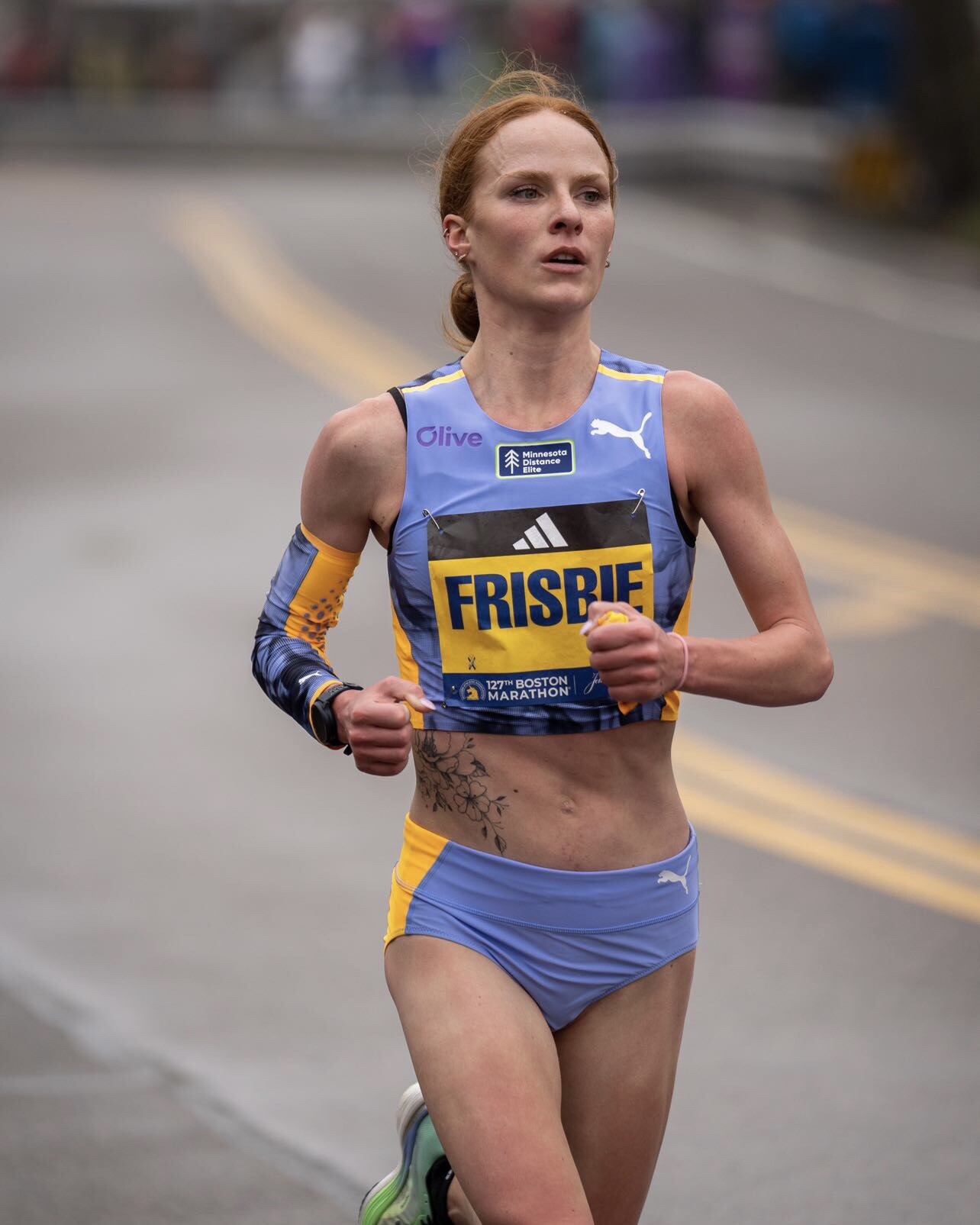
Rodriguez has a 10,000 meter personal-best under 28 minutes and was the Pan Am Games 10k champion in 2023.Estrada is a veteran runner making a successful comeback in 2024. He represented his native Mexico in the 10,000 meters in the 2012 London Olympics, but became a US citizen in 2014 at which time became eligible to represent the USA in international competition.
He has an impressive 10k time of 27:30 set in 2015, and 5K of 13:31 at the Carlsbad 5K in 2014. He is now 34 and quite possibly running his best times in 2024.
He placed fifth at the Aramco Houston Half Marathon in January, running a very fast 1:00:49, which is a personal best at that distance and tnen followed that a thrid-. place finish at the USATF 15K Championship in Jacksonville. In May he set an American best of 1:13:09 at the USATF 25K Championship, winning the Amway 25K River Run in Grand Rapids, MI.
“We are thrilled to have these guys and gals at Crazy 8s,” said Brown. “When we decided to host the USATF 8K Championship this is exactly the caliber of runners we were hoping to attract to Kingsport.”
The Regional Eye Center is offering a $10,008 American Record bonus for men who can break Alberto Salazar’s record of 22:04 (1981) or women who can break Deena Kastor’s record of 24:36 (2005).
In addition to the bonus, the race is offering prize money to the top 10 in the USATF Men’s and Women’s Championships.Sponsors are Ballad Health Niswonger Children’s Network, Gatorade, The Regional Eye Center, Eastman Credit Union, Kingsport Pediatric Dentistry, Food City, Martin Dentistry, Mycroft Signs, Culligan, Associated Orthopaedics of Kingsport, and JA Street.
by TriCitiesSports.com
Login to leave a comment
Crazy 8s 8k Run
Run the World’s Fastest 8K on the world famous figure-8 course on beautiful candle-lit streets with a rousing finish inside J. Fred Johnson Stadium. Crazy 8s is home to womens’ 8-kilometer world record (Asmae Leghzaoui, 24:27.8, 2002), and held the men’s world record (Peter Githuka, 22:02.2, 1996), until it was broken in 2014. Crazy 8s wants that mens’ record back. ...
more...Suriname sprinter blames Gatorade for positive doping test
On Monday morning, Surinamese sprinter and current world U20 100m record holder Issam Asinga was issued a four-year doping ban by the Athletics Integrity Unit (AIU) after testing positive for the metabolites of GW1516 in an out-of-competition test on July 18, 2023. Asinga and his agent claimed the positive test resulted from ingesting Gatorade Recovery Gummies, which were given to him after he won the Gatorade U.S. Boys Track and Field Athlete of the Year award last July.
A few weeks later, at the South American Athletics Championships in São Paulo, Brazil, Asinga set a new U20 100m world record of 9.89 seconds, only to be provisionally suspended two weeks later, just before the start of the 2023 World Athletics Championships in Budapest.
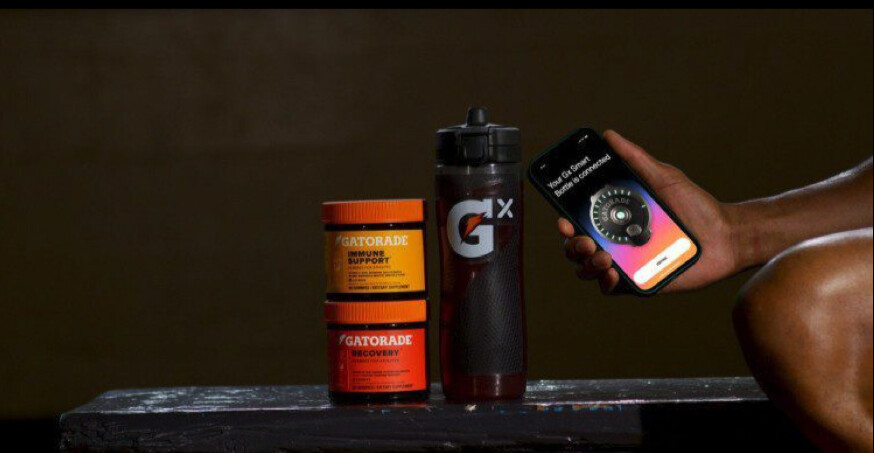

GW1516 was originally developed to treat obesity and diabetes, but is not approved for human use, due to its carcinogenic effects. It is banned both in and out of competition and is not eligible for a Therapeutic Use Exemption (TUE). A USADA bulletin from 2019 states that GW1516, also known as cardarine or endurobol, has been found in some supplements, despite being illegal.
Asinga claimed he took gummies from Gatorade that were supposed to help with recovery. He said two containers of the gummies revealed the presence of the banned substance, but the AIU panel stated he did not show proof that the gummies were the source of the drug found in his sample.
According to the AIU, Asinga claimed he took the Gatorade gummies the week before the positive test, and that subsequent testing of two unsealed containers of Gatorade gummies, provided by the athlete, revealed the presence of GW1516 and GW1516 sulfoxide. “The Disciplinary Tribunal found that Asinga did not satisfy his burden of proof to establish that the Gatorade Recovery Gummies were the source of the GW1516 metabolites detected in his sample.”
In making its decision, the AIU Disciplinary Tribunal stated that the Gatorade recovery gummies provided in unsealed containers by the athlete for testing contained significantly more GW1516 on the outside than on the inside, which practically excludes any contamination by raw ingredients during the manufacturing process. They also noted that the gummies were batch-tested by the National Sanitation Foundation (NSF), and that a sealed jar of the Gatorade recovery gummies, from the same batch taken by Asinga, tested negative for GW1516.
The 19-year-old sprinter plans to appeal the ban, which would take the case to the Court of Arbitration for Sport (CAS) in Switzerland.
All of Asinga’s results from July 18 onward will be disqualified, including his two South American Championships gold medals in the 100m and 200m, as well as his world U20 100m record of 9.89 seconds.
by Running Magazine
Login to leave a comment
‘You Stole!’ Running World Divided Over ‘Bandits’ Who Crash Races
The Miami Marathon is contemplating facial-recognition tech to curtail interlopers; at a popular San Francisco race, bandits, who have included Gov. Gavin Newsom, are gods.
During the 2023 Miami Marathon, Frankie Ruiz, an event founder, spotted a bandit and pounced. He interrogated a runner wearing a comically bad counterfeit racing bib pinned to her shirt. She claimed she and pals had paid for entry to the race, and were told to print out their bibs at home.
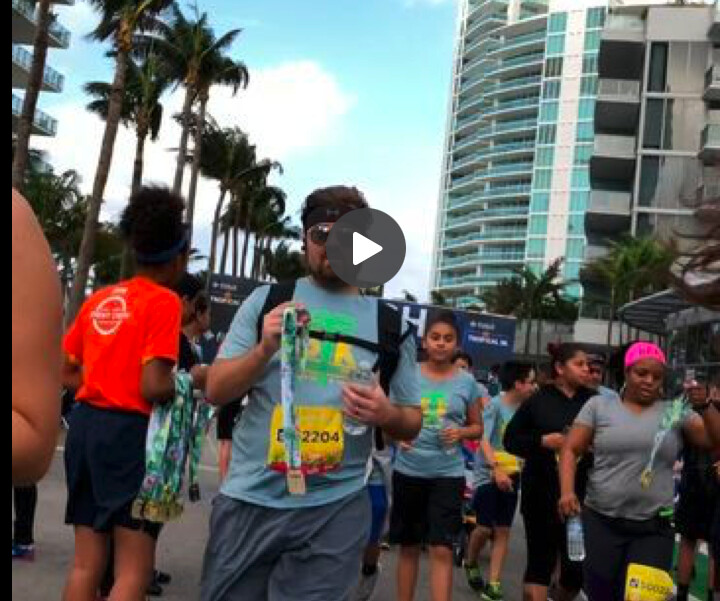
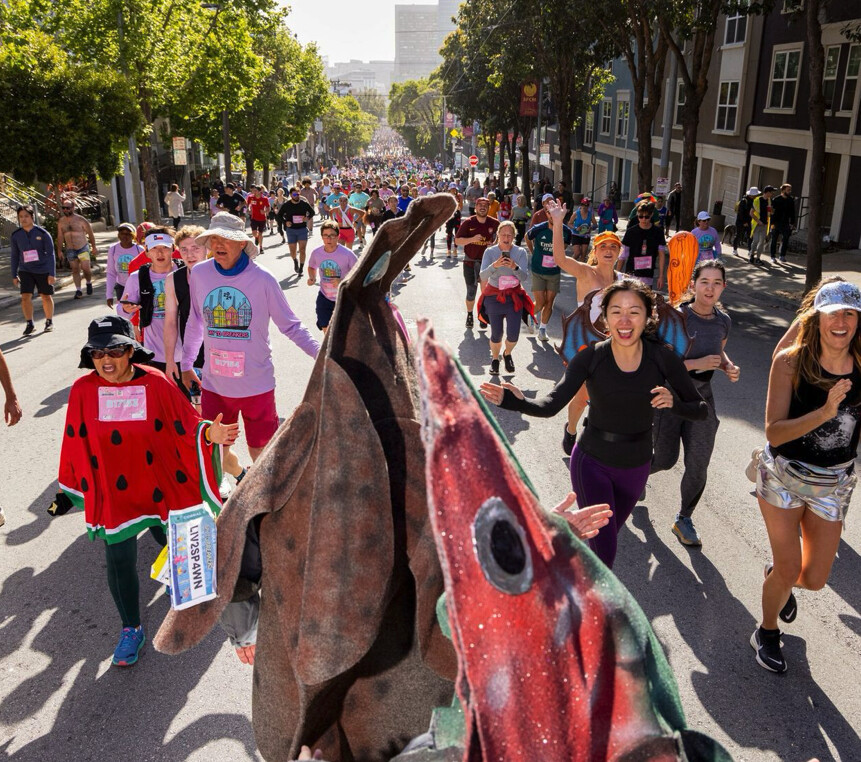
“Who did you give the money to?” Ruiz asked
“My friend,” the woman answered vaguely. “That’s not a friend,” Ruiz replied. “You’re not registered.” Her run was done. She left the course, just 300 meters from the finish line.
As the public face of the marathon’s surveillance group, aka the “bandit busters,” Ruiz posts videos of his team catching bandits—runners who crash events without signing up.
I n “bandit reel” videos, he’ll intercept interlopers or his crew will strip medals from bibless finishers. Excuses fly: “It fell off, bro, it fell off.” One man unzips his jacket, feigning surprise at the missing bib. Caught red-handed, many sheepishly surrender their medals without a word.
As running booms, some races burst at the seams. Sold-out events and increasing fees, which can top $150, spur some bandits to sneak in, while others simply see no harm in crashing the course.
Last month, influencer Alexa Curtis bandited a sold-out New York City race, like a party she wasn’t invited to.
“I just ran 13.1 miles for the Brooklyn half marathon at a 7.43 minute pace,” she humblebragged in a tearfully triumphant Instagram message, mentioning her “fearless” journey. “I didn’t sign up for this race. I just asked the security where it started and where it ended and jumped in.” She didn’t know what was about to hit her.
To critics, Curtis committed the cardinal bandit sin: crossing the finish line.
“You are a bandit and you stole from this race,” one commenter wrote. A defender retorted, “if there was a line that was marked as ‘finish line’ and she walked over it, that doesn’t cost anything to anyone.”
C urtis initially was confused. “I literally googled, ‘What is a bandit,’” she said in an interview.
In the running world, among peers and in online forums, the bandit debate rages like a nasty blister. Are bandits happy runners harmlessly enjoying public roads? Or narcissistic resource-hogs using up porta potties and guzzling ill-gotten Gatorade?
Race banditry has a rich history. Bobbi Gibb, the first woman to run the Boston Marathon, crashed it in 1966 when women couldn’t register.
Tolerance varies. The Miami Marathon, a qualifier for Boston and other prestige races, takes a hard line. But San Francisco’s anarchic Bay to Breakers 12k? That’s a different story altogether.
If race banditry had an Olympics, it would be this race. California Gov. Gavin Newsom bandited Bay to Breakers in 2010. Organizers reported 21,000 registered participants this year, but anticipated as many as 10,000 additional crashers.
‘The salmon’
“Bandits are a part of Bay to Breakers,” said race director Kyle Meyers. “Do they all finish? No.”
The most notable bandits are “the salmon,” die-hard mostly-unregistered runners who show up yearly, dress as salmon, and run in the wrong direction. This past Sunday, a dozen plunged into a crowd of about 30,000 participants, heading not to the finish line but to the Chieftain, an Irish pub near the start.
The lead runner, who gave his name as Uncle Milty, wore four old race bibs. “One of those was official,” he said when asked. “The rest were ones we made up.” As he waited to jump into the race, just a block from San Francisco’s famous Painted Ladies Victorians, he spied a fifth bib on the ground, and nonchalantly pinned it on.
After consulting with Michelle Kaye Fitzgerald, a legitimately registered salmon, to ensure the serious runners had passed, Milty rallied his school into Hayes Street. They approached advancing racers, shouting: “Spawn! Spawn! You’re going the wrong way!”
While Meyers says bandits shouldn’t cross the finish line, race staff happily handed cups of water to salmon along the course, and other amenities treasured by runners were open to bandits. “We probably have the most portable restrooms of any 12k on the planet,” Meyers said, with a hint of pride.
The salmon are the brainchild of Rob Schmitt, who hatched the idea more than 30 years ago after discussing salmon-spawning habits with his girlfriend. He repurposed old carpet into salmon costumes, and then relayed his plans to friends at the Cacophony Society, an underground group known for pranks and chaotic events.
To run with the salmon, as this reporter discovered Sunday, is to experience many things at once. Setting off downhill with some trepidation, you view thousands of participants, flowing toward you for block after block, like sparkly crawling ants, and feel an initial grim sense of awe at the thought of navigating through them. But that fades as passing racers greet you with glee.
You high-five 125 sweaty hands in a single block, including crabs, cows, bananas, banana slugs, furbys, Cybertrucks and nudists. You stop and dance every time there is music, especially if there are bubbles. You scream in mock terror when a bear runs by.
Meanwhile, in Miami
Frankie Ruiz began wrangling bandits a decade ago when the Miami Marathon ran out of medals for nearly 1,500 finishers, despite having ordered enough.
Ruiz is now known—and revered by some—for his bandit videos. He’s even nabbed bandits at Thanksgiving turkey trots. “I’ve had entire families showing up without paying.”
The Miami Marathon now uses holograms on bibs to prevent counterfeiting, and Ruiz is looking into facial-recognition technology.
What does he think of San Francisco’s salmon-suited bandits? “I’m glad you guys didn’t show up to my race,” he said. “I don’t know what I’d do.”
Login to leave a comment
Running For 12 Hours Straight Taught Me Real Confidence
You’re stronger than you think.
When I hear people say, “You can do it!” I’m usually skeptical.
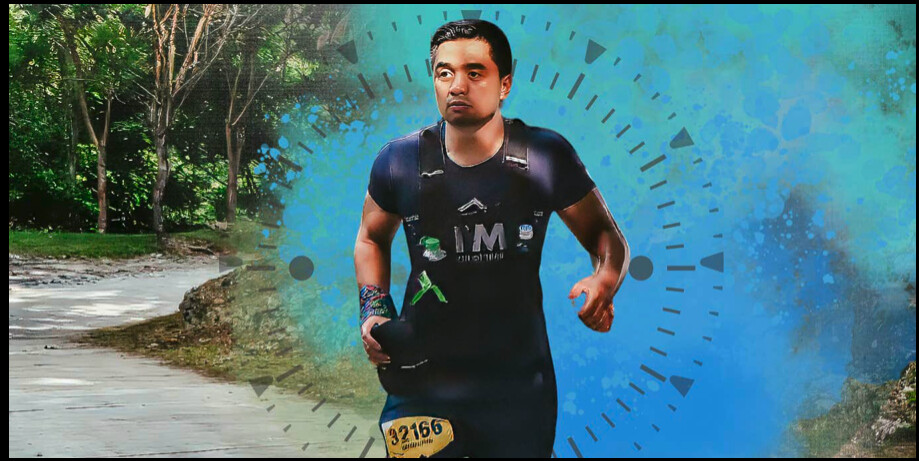
People tend to say that when they have nothing else more encouraging to say. So that kind of positive affirmation — while appreciated — does not exactly provide the substantial and “real” encouragement I’m looking for.
Nowadays, when I find myself lacking in self-confidence, or when I’m feeling like a big failure as a writer because my short stories and essays keep getting rejected by publications, I find myself thinking about that fateful morning in early 2018 — when I first started to get into trail running.
It took me 12 hours to finish my first 25-kilometer mountain race.
For those unfamiliar with trail running, 12 hours is a long, long time to finish 25K. The race’s cut-off time is 8 hours — which is already generous. Yet, I didn’t make it.
Nevertheless, that 12-hour 25K run taught me what real confidence is.
It was the Mount Ugo Marathon, which had qualifying points for UTMB. The UTMB, set in the French Alps, is one of the biggest and most prestigious mountain races in the world. To qualify, a runner has to gather enough points from difficult, qualifying races — like the Mount Ugo Marathon.
The Marathon offered 50K and 25K distances. And since it was my first time, I joined the 25K.
We started at the base of a mountain in Kayapa, Nueva Vizcaya. The first few kilometers were paved roads. Then it turned into dirt roads and eventually trails. Over mountain ranges, it was 10 kilometers of almost vertical uphill.
I’d lift each leg over the other and feel my ankles threaten to rip from the constant battle against gravity. I no longer bothered to look up because the damn mountain just kept going on and on. And I cursed myself for not having more uphill training.
Eventually, we reached a more forgiving part of the trail — flat enough that I could jog it. And I started gaining speed and momentum.
When I hear people say, “You can do it!” I’m usually skeptical. People tend to say that when they have nothing else more encouraging to say.
At the turning point for 25K runners (the 50K runners had a different route), a race official told me I was running 11th. I was excited. I thought if I maintained my pace and outran another runner, I’d be part of the top 10! Not a bad way to finish my first half-marathon.
I reached an intersection that had no marks or ribbons. I was confused. And I kind of assumed trail races would be like roads; you just keep going, and you’ll eventually find the right way because the signs will be so obvious. This is a big mistake because, I would later learn, mountain trails don’t work that way at all!
But I wanted to get that Top 10 so bad that I simply picked a path, hoped it was the right one, and gunned through.
I thought I’d turn back if I didn’t see any markings/ribbons after five minutes of running. But then I saw one! So I kept going.
A few mountains later, the ribbons suddenly stopped appearing. I started getting nervous.
Am I on the right path?
But the ribbon indicated this trail path. There were no intersections so far.
Should I keep going? Maybe there’s another ribbon ahead.
I’d later learn I followed some old markings from the previous year’s race. I guess the race organizers didn’t thoroughly remove all markings in that area since it was supposedly far from the designated route. If only I studied the course map, I’d have known something was wrong. But I didn’t, so I kept running through the previous race’s 50K route.
Back then, I didn’t have a smartphone. I had an old Nokia from my dad; the kind that can only call and text. And the signal was bad. So I had no way of knowing where I was via GPS, and I also couldn’t call someone for help.
I decided to reach the peak of the closest mountain I could find.
Maybe if I can get an overview of the place, I’ll have a better idea of where I am.
I reached the mountain’s summit and stared at a panorama of rice fields and cows. No houses or humans in sight. I knew then that I was very much lost.
At that point, I’d been running for over five hours in the mountains. The sun was high above, painful on the skin. I’d traveled so far from the race route that I’d run out of food and water. I only had one last bottle of Gatorade left. And not a single morsel of food.
The fatigue was growing underneath my muscles. My legs felt like chunks of cement blocks; they felt so heavy I could barely lift them.
I thought of Bear Grylls and whether I had to drink my pee while waiting for rescue.
I took a sip of my dwindling Gatorade and tried to push the panic away; those thoughts attack you when you’re in a vulnerable state. Thoughts that I might end up dying on that mountain of hunger or thirst or wild buffaloes. Or that they’d find me delirious, babbling about cows and rice fields, after days of searching.
I started walking back, slowly. I climbed one hill after another. Midway up the last hill, I sat on the trail. My legs couldn’t walk anymore. Like, literally. People often say, “I can’t walk anymore” — even if, with enough willpower, they still can. But for the first time, regardless of willpower, I felt that my legs couldn’t take another step. So I sat in the middle of that trail.
My calves cramped for the third time and I screamed in pain.
The pain came along with the panic. Am I going to go Bear Grylls from here?
Freaking Bear Grylls. Why did I have to think of the man in the middle of a crisis?
I focused on my breathing to calm myself. I have to survive. So I rested for a bit. And slowly, while conserving my energy, I made my way back up, one super slow step after another.
When I finally returned to the intersection where I first got lost, some race officials were there. They were sweepers — race marshals who were going through the route to support laggards and slowpokes like me. At that point, more than eight hours had passed. The sweepers pointed me in the right direction. And I limped until I reached the final Aid Station, which was 10 kilometers away from the finish line.
My body had never felt so broken, so tired, so truly and utterly exhausted.
At the aid station, I thought I saw a bunch of angels — helpful, smiling volunteers who fed me fruits and nuts and marshmallows and chocolates. They gave me water and electrolyte drinks. They sprayed my legs with something that helped ease the cramps. It was one of the happiest moments in my life.
After I recovered enough to speak, I said to one of the volunteers:
“I don’t think I can walk the next 10 kilometers. When does the sweeper transport arrive?”
The transport was used to ferry people who could no longer finish the race on their own feet.
“The last transport just left,” the volunteer replied. “Another truck would arrive in four hours to sweep the 50K runners who’ll drop out.”
I took a deep breath. Four more hours. What do I do? Wait?
I’ve already lost the race. Even if I reached the finish line now, I’d still be a non-official finisher. But how do I go home and not feel super bad about the failure of my first 25K? Then a small thought came:
Why don’t I try limping my way down? Maybe the transport will arrive earlier and they’ll be able to pick me up along the way. Or if not, another sweeper will pass me by and help me.
Since the volunteers at the aid station couldn’t leave their posts to assist me, I decided to see how far I could go.
I filled my running vest with food and my bottles with electrolyte drinks. I bid farewell to those angels at the aid station, and then, finally, I dragged my feet and started limping.
I limped my way to the finish line after 12 hours.
I avoided the finish line itself. I was embarrassed to have people see my race bib and know that I was actually from the 25K, not the 50K, and that it took me 12 hours to reach the finish line. But apparently, the race director knew about this lost 25K runner after the sweepers reported it. And he kindly welcomed me and congratulated me for finishing — even if it wasn’t an “official” finish.
I made it back on my own two feet.
And that’s when I realized it: I did it even though I thought and fully believed I couldn’t.
I did it, even when I felt like giving up. I did it, even when I didn’t believe in myself.
So whenever I face something that destroys my self-confidence, I often return to that memory.
When I feel like giving up, or I’m spent and exhausted, and my brain and body are telling me I can’t do it anymore — I push myself to take one more tiny step. Just a little step forward, to see how far I can go.
Because I have done it before and succeeded. And I’m confident I can do it again.
Login to leave a comment
Katelyn Tuohy turns pro, signing with Adidas
Four-time NCAA champion Katelyn Tuohy will forego her final year of track and field at North Carolina State University in the NCAA and turn pro with Adidas.
On Wednesday, the 21-year-old announced her decision on her Instagram page: “I am super excited to announce that I will be running professionally for Adidas!” wrote Tuohy. “I am looking forward to this next chapter and the opportunities that lie ahead!! Thank you, for adding me to the three-stripe family ///.”
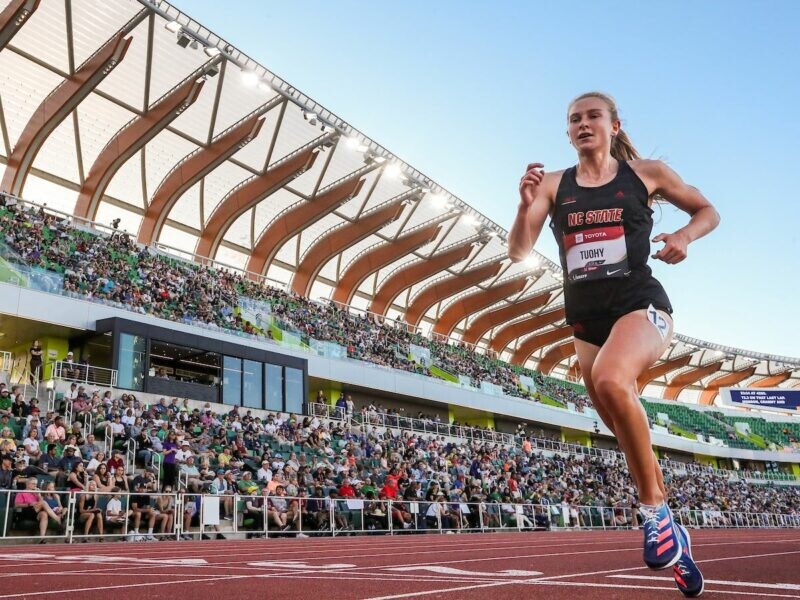
During her three and a half years at NC State, Tuohy was an 11-time All-American and set NCAA records in the indoor mile and 3,000m.
“I am overwhelmed with gratitude for the support, guidance, and encouragement I’ve received,” wrote Tuohy on Instagram. “I owe a big thank you to the university, the coaching staff, the support staff, my teammates, and all of those who have been a part of my time here at NC State. Thank you for making my dreams come true.”
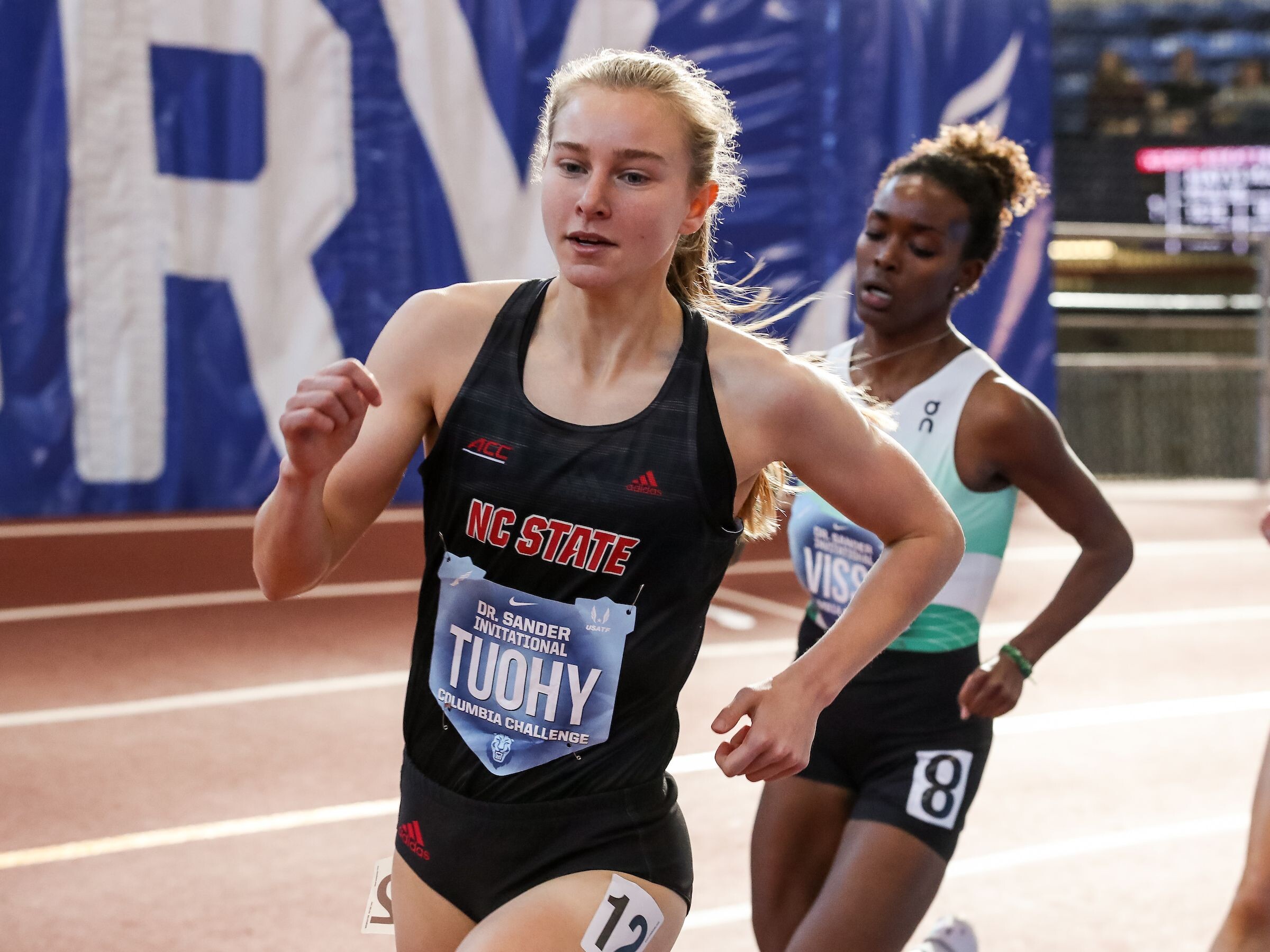
Tuohy was previously on a name, image, and likeness (NIL) sponsorship deal with Adidas while she competed in the NCAA. A NIL deal does not have the same monetary value as a pro deal, but it allows an athlete to continue competing at the collegiate level while earning money from their image. However, under an NIL deal, athletes are unable to win prize money at races or events.
The 21-year-old from New York is one of the best up-and-coming U.S. distance runners. She began to make headlines as a high school athlete in 2018 when she set a U.S. high school 5K record of 16:06.87. Tuohy also won the Gatorade Athlete of the Year for cross-country, given to the top U.S. high school athlete. She won this award in all four years, becoming the only athlete in any sport to accomplish this.
The young star will likely have her eyes on competing for Team USA at the World Indoor Championships in March in the 3,000m and qualifying for the Olympics in the 5,000m at the U.S. Olympic Track and Field Trials next June.
by Marley Dickinson
Login to leave a comment
This Groom Literally Ran to the Altar Last Weekend
He ran a marathon from his family’s lake house to the wedding venue—and then said “I do.”
People deal with pre-ceremony jitters and mark the occasion of their wedding in myriad ways. Sometimes that entails a shot of whiskey, taking a long walk, or practicing yoga. For one Chicago man, running a marathon to his wedding venue last weekend was just the ticket.

On Thursday, before saying “I do,” Chicago runner Simon Tanzman laced up a pair of black New Balance trainers and completed his “Running to the Altar” marathon, hoofing it from his family’s lake house to his wedding venue, the Morris Estate in Sawyer, Michigan. In a video interview with ABC 57 just 24 hours before the wedding, Tanzman told the local news station how he got the idea to tackle this nuptial run. “So this started because about a year ago I decided to just randomly see about how far was it from our cabin in Sawyer, Michigan to the wedding venue, and it was 21 miles—almost a marathon, but 5 miles short,” he said. “Probably a stupid idea, but I was like, ‘Hey babe, what would you think?’ ‘Whatever you want, babe.’ And here we are.”
Holly Hurston fully supports her husband’s running goals. She said, “He just really loves to challenge himself, and any kind of goal he can attain … he’s not crazy.”
By the time the festivities began late Saturday afternoon, the groom was all cleaned up and dressed to the nines in a light gray suit with purple accents, dancing up a storm with his bride. You’d never know he’d just pulled off such a daunting athletic feat.
Tanzman started running as a hobby a few years ago to get in shape and says he fell in love with the sport. Including his run to the altar, he’s run five marathons, three official races, and two solo, self-created challenges. The first of those runs, taken up early in the pandemic when most races and events were canceled or virtual, was one Hurston created for him, called the “Hippity Hoppity Holly Half.”
She made a custom race T-shirt for Tanzman, and had him run a path along Lake Michigan, waiting for him along the course with water, Gatorade, and snacks, “just always being there for him, showing my support and love for him,” she said.
“I couldn’t have done it without her driving around the course,” said Tanzman.
That kind of mutual love and support surely bodes well for the couple’s marriage, and is sure to give the newlywed wings at Tanzman’s next race, October’s Chicago Marathon
by Runner’s World
Login to leave a comment
Hobbs Kessler set the record for the fastest 1500-meter run by an American on U.S. soil as he finished third overall with a time of 3:32.61
Hobbs Kessler has already broken records left and right in his running career and the Ann Arbor native added to that growing list with an eye-popping performance at the Los Angeles Grand Prix on Saturday.
The 20-year-old phenom set the record for the fastest 1500-meter run by an American on U.S. soil as he finished third overall with a time of 3:32.61.
Kessler finished just behind former world champion Timothy Cheruiyot, who won the race at 3:31.47, and U20 world champion Reynold Kipkorir Cheruiyot, who took second in 3:32.01.
He ran a 55.83 in his final lap to past U.S. champion Cooper Teare, who also ran a personal best time of 3:32.74.
Kessler’s finish was the 13th fastest all-time for an American runner and his time is the second best by a U.S. male runner under the age of 21 as Cole Hocker ran 3:31.40 at the 2021 Olympics.
It was a personal best time for Kessler but yet another memorable performance by the former Ann Arbor Skyline standout.
He holds the North American U20 record in the 1500 at 3:34.36 as well as the U.S. high school record in the for the indoor mile with a time of 3:57.66 and was named the Gatorade National Track and Field Athlete of the Year for 2021.
Kessler signed a contract with Adidas and turned professional in 2021. He also won the Boston Athletic Association Invitational Mile in April.
Login to leave a comment
Defending Champions Return to Run 50th Anniversary Credit Union Cherry Blossom 10 Mile
Organizers of the 50th annual Credit Union Cherry Blossom 10 Mile (CUCB) announced today the first of two rounds of news about this year’s invited field; look for the second announcement to come out on Wednesday, March 29. Today’s announcement features past champions and top-5 finishers expected to toe the respective men’s and women’s starting lines on Sunday, April 2. (The elite women will start first, at 7:18 a.m., followed by the men and the masses at 7:30 a.m.)
Three past champions are part of the women’s elite field: Susanna Sullivan, last year’s women’s champion from Reston, VA; 2021 champion Nell Rojas from Boulder, CO; and 2013 champion Caroline Rotich, a Kenyan who lives in Colorado Springs, CO. As part of the 50th celebration two additional former champions are entered: Colleen De Reuck from Boulder, CO, who won the race in 1998 and still holds the women’s course record of 51:16; and 1973 winner Kathrine Switzer.
Other top women finishers from past 10 Miles include: Carrie Verdon from Boulder, CO, who placed second last year; Paige (Stoner) Wood, last year’s third place finisher from Flagstaff, AZ; Sara Hall, also from Flagstaff, who placed fourth in 2014; and Flagstaff’s Diane Nukuri, who was fifth in 2018.
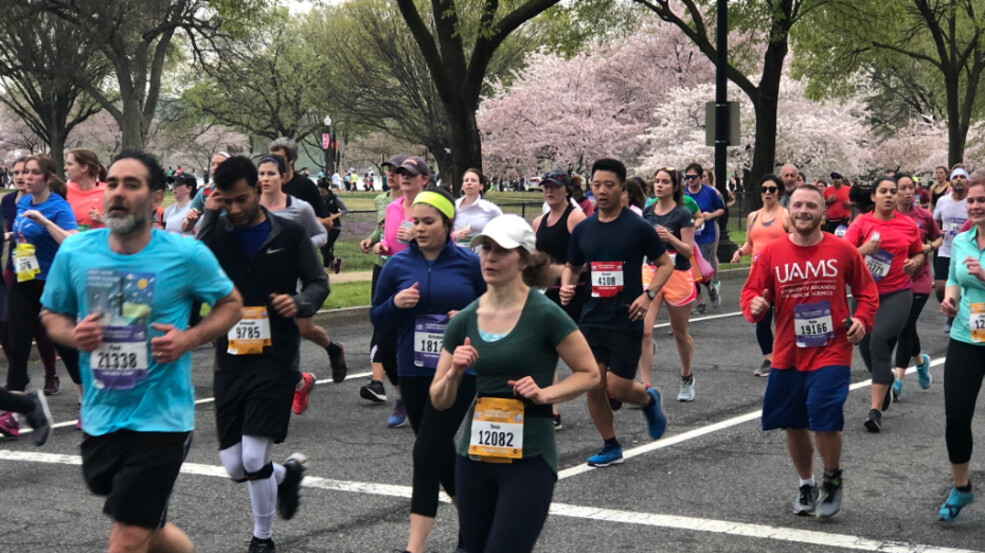
In the men’s race, the top-three finishers from 2022 return. All hailing from Kenya, they include champion Nicholas Kosimbei, second-place runner Wilfred Kimitei, and third-place finisher Shadrack Kimining. They’ll be joined on the starting line by second-place finisher in 2021 Abbabiya Simbassa from Flagstaff, AZ. Returning for the 50th running and starting a little bit farther back in the pack will be Bill Rodgers, from Boxborough, MA, who won the race four consecutive times between 1978 and 1981; placed second in 1982 and third in 1983; and has run CUCB a total of 22 times. Greg Meyer, whose American record of 46:13 still stands 40 years later, will be present for the 50th celebration, and will be holding the tape for the first American male finisher, who will be in hot pursuit of Greg’s mark — there’s a $50,000 shared bonus on the line for any American Records or World Bests set at the event.*
“It’s always a vote of confidence in the reputation of the event to see a large number of top finishers from previous years coming back. I am excited about this year’s set of repeaters, both past and present. This is another factor that will make our 50th anniversary special,” said Event Director Phil Stewart.
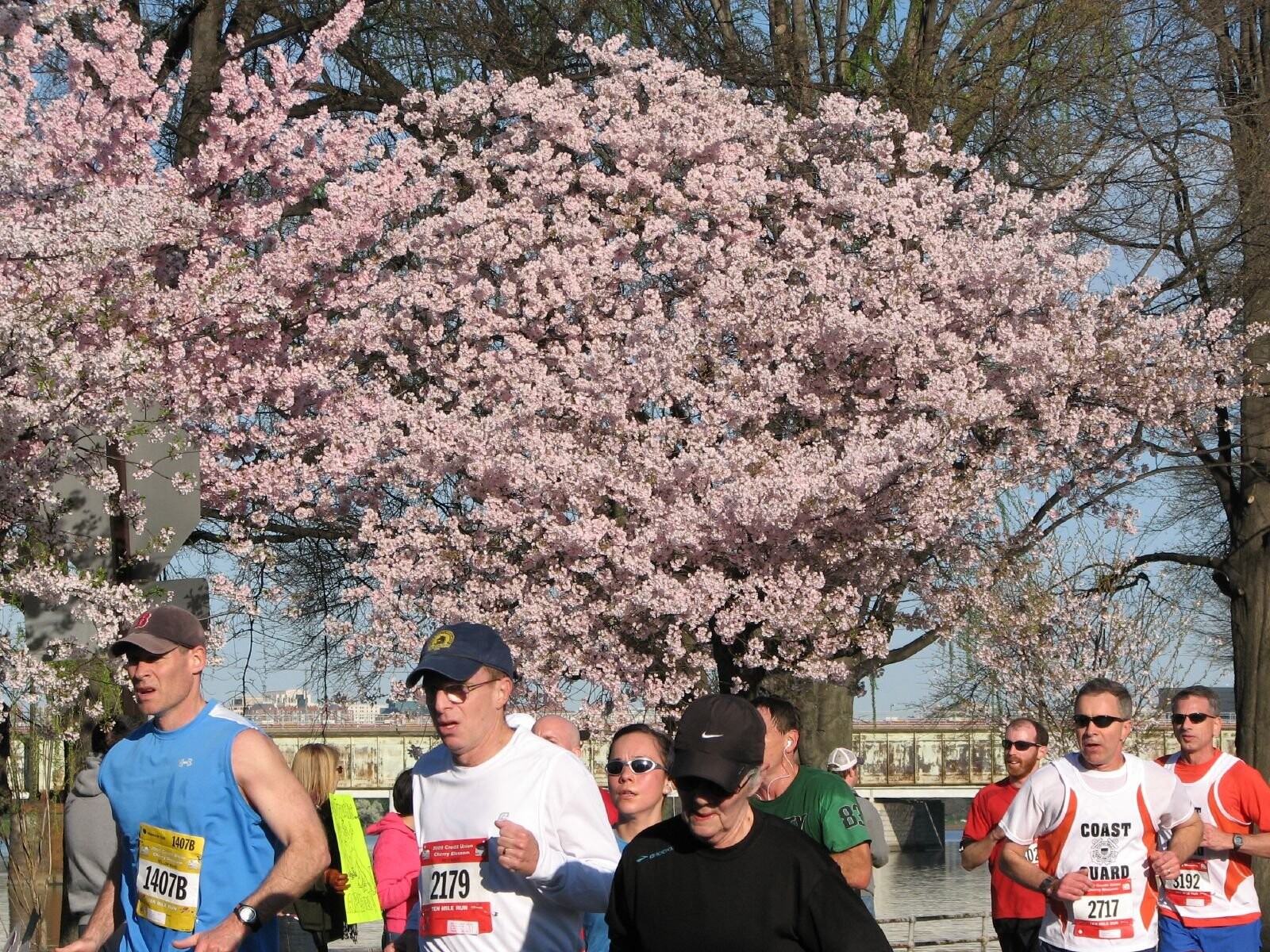
This year, international elite runners will be competing for $40,000 in prize money. The prize purse for Americans totals $25,000, and American runners placing in the top-10 overall are eligible to receive both open and American-only prize money. There is an additional $6,000 in RRCA RunPro Alumni Development Awards — runners eligible for the RRCA awards can also collect top-10 open and/or top-10 American payouts.
There is also a time-based set of bonus payments on offer for fast times:
• $50,000 to be shared by any runners setting a World Best or American Record*• Time incentives of $1,000 for the 1st male to run sub-46 minutes and 1st female to run sub-52 minutes, with an additional $750 on offer should a second male and/or female achieve those same sub-46 and sub-52 minute milestones.
The 10 Mile will serve as the USATF 10 Mile Championships, the RRCA National 10 Mile Championships, and the 2022-2023 Professional Road Racing Organization (PRRO) Circuit Championship.
Winners of the individual 2022-2023 PRRO Circuit events will be eligible for the $10,000 PRRO Super Bonus by winning the PRRO Championship (the bonus is split if an eligible male and female win the Championship). Susanna Sullivan and Nicholas Kosimbei are eligible for the PRRO Super Bonus. Any non-eligible winner of the PRRO Championship Super Bonus will earn $2500.
* If World Best times and American Records for men and women are set by the winners at the event (e.g. four records set), the $50,000 record bonus would be split into four $12,500 shares. If only one World or American record is set for either men or women, the athlete setting the record would get the full $50,000. If an American sets an American record and no other World or American records are set, he or she would receive the entire $50,000 as well. Currently, the times to beat are as follows:• Haile Gebreselassie’s (ETH) World Athletics Best of 44:24, run at the Tilburg 10 Mile in Tilburg, Netherlands, September 4, 2005;• Keira D’Amato’s World Athletics Best in a women’s only race of 51:23, run at the UpDawg 10 Mile in Washington, DC, November 24, 2020;• Greg Meyer’s American Record of 46:13, run at the Cherry Blossom 10 Mile in Washington, DC, March 27, 1983; and• Keira D’Amato’s previously mentioned World Best 51:23, which is also the American Record for a women’s only race.
For reference, the fastest CUCB time among the men’s field announced today is Kosimbei’s 45:15, which tied the event record set by Kenya’s Allan Kiprono in 2012. Among the elite women, Nell Rojas’s 52:13 from 2021 is the best CUCB finish time among this year’s elite entrants. Abbabiya Simbassa’s 46:18 from 2021 is the best CUCB mark among the American men, while Nell’s 52:13 is, of course, the leading mark among the American women.
The inaugural Cherry Blossom Ten Mile in 1973 was won by Sam Bair, in a time of 51:22; the women’s winner was Kathrine Switzer, in a time of 1:11:19; 127 men and 12 women ran that first race. Bill Rodgers holds the honor of most victories, with four consecutive wins between 1978 and 1981. Three women have each won the race three times: Julie Shea (1975-77), Lisa Weidenbach (1985, '89 and '90) and Lineth Chepkurui (2008-10). Ben Beach leads all Cherry Blossom finishers with an active streak of 49 years. A comprehensive media guide detailing a wide variety of statistics from the first 49 CUCB races is available here.
Thanks to Credit Union Miracle Day’s title sponsorship since 2002, the Credit Union Cherry Blossom Run has raised over $10.2 million for the Children’s Miracle Network Hospitals, including $323,000 in 2022.
About the Credit Union Cherry Blossom 10 Mile:
The Credit Union Cherry Blossom races, organized by Cherry Blossom, Inc., a 501c(3) chapter of the Road Runners Club of America, are known as “The Runner’s Rite of Spring®” in the Nation’s Capital. The staging area for Sunday’s 10 Mile is on the Washington Monument Grounds, and the course passes in sight of all of the major Washington, DC Memorials. In 2023, the reimagined Saturday 5K will stage on Freedom Plaza and traverse the route of Presidential Inaugurations down Pennsylvania Avenue before crossing the National Mall in the shadow of the Capitol Building and returning by the same route. The Kids Run is staged on the grounds of the National Building Museum. All events serve as a fundraiser for the Children’s Miracle Network Hospitals, a consortium of 170 premier children’s hospitals across North America. About one-third of the funds raised support Washington, DC’s own Children’s National (“Children’s Hospital”). The event also funds the Road Runners Club of America’s “Roads Scholar” program designed to support up-and-coming U.S. distance running talent.
Credit Union Miracle Day, Inc., a consortium of credit unions and credit union suppliers, is the title sponsor of the Credit Union Cherry Blossom 10 Mile, 5K, Kids Run and Virtual Run. Current presenting sponsors include ASICS, REI Co-op and Wegmans; supporting sponsors include CACI, Co-op Solutions, CUNA Mutual Group, FinisherPix, Gatorade Endurance, Guayaki, MedStar Health, PSCU, Potomac River Running, Suburban Solutions, The MO Apartments and UPS.
The 10 Mile is a proud member of the PRRO Circuit (PRRO.org), a series of this country’s classic non- marathon prize money road races with circuit stops in Washington, DC; Spokane, WA; and Utica, NY. The 2023 10 Mile will serve as the 2022-2023 PRRO Championship.
In addition to being sanctioned by USA Track & Field and the Road Runners Club of America, the Credit Union Cherry Blossom races have earned Gold Level Inspire Certification from the Council for Responsible Sport in recognition of its legacy of commitment to sustainability and thoughtful resource management.
To learn more, visit CherryBlossom.org and follow the event on social media @CUCB and #CUCB2023.
by David Monti
Login to leave a comment
Cherry Blossom Ten Mile Run
The Credit Union Cherry Blossom is known as "The Runner's Rite of Spring" in the Nation's Capital. The staging area for the event is on the Washington Monument Grounds, and the course passes in sight of all of the major Washington, DC Memorials. The event serves as a fundraiser for the Children's Miracle Network Hospitals, a consortium of 170 premier...
more...Five things to master for your next race, shared by Olympian and coach Joanna Zeiger
Races are always tricky–it can be tempting to run hard, fly past aid stations and ignore the enjoyment of the process entirely in pursuit of a PB.
Mastering these five tenets of racing, shared by Olympian and coach Joanna Zeiger in her book The Champion Mindset: An Athlete’s Guide to Mental Toughness will help you sail smoothly through your next race. “If you learn these, you can eliminate at least some potential problems,” she says.
1.- What feels easy at the start feels hard at the end
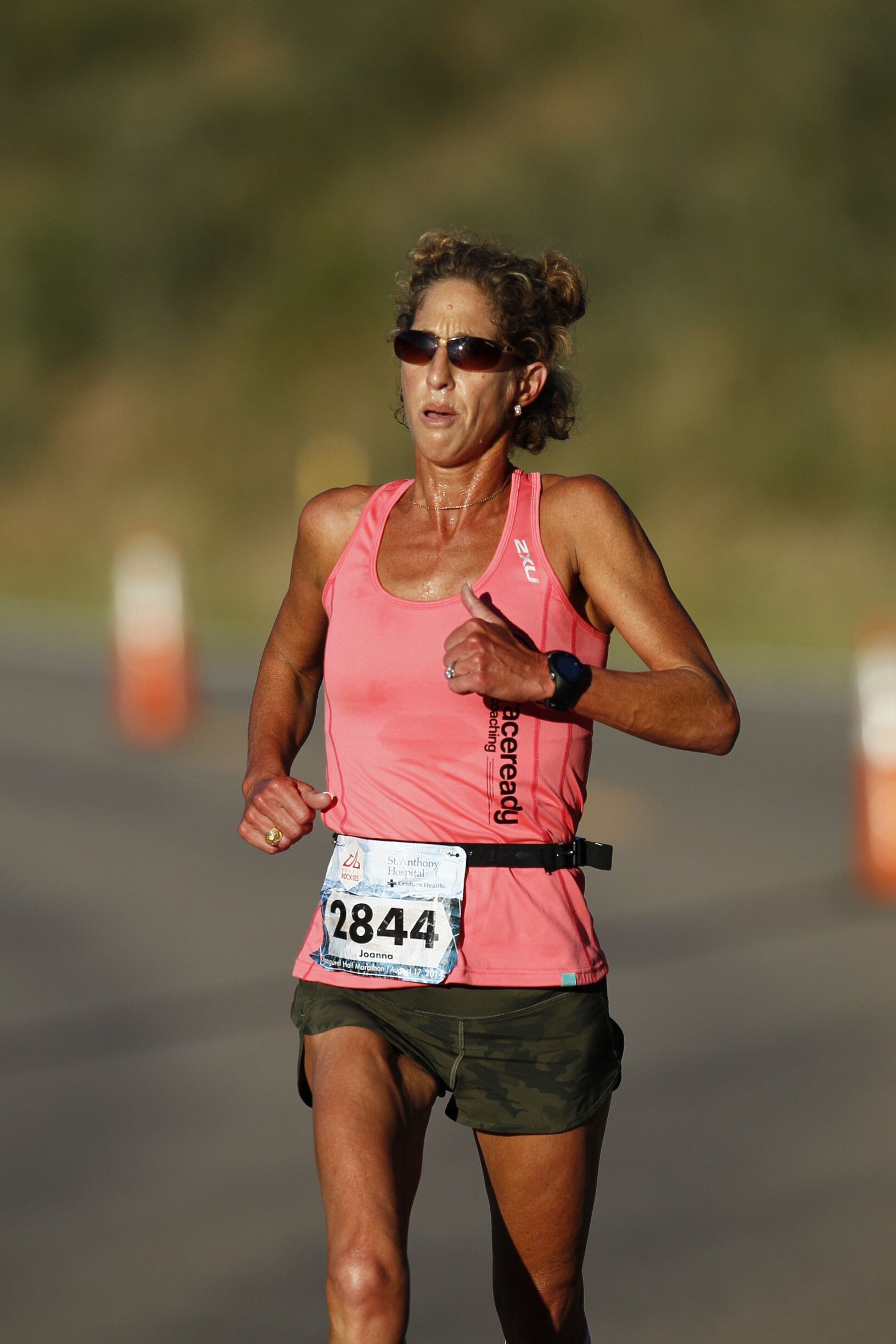
Proper pacing is a skill and a worthy one to work on. No matter how easy and effortless those first few kilometers feel, the last few are going to feel harder. “Do not be deceived by the relative ease at the beginning,” says Zeiger.
What feels like jogging at the start of a longer race may take all your focus and strength to maintain near the end. Remind yourself of this pre-race, and keep it in mind as we move on to rule number two.
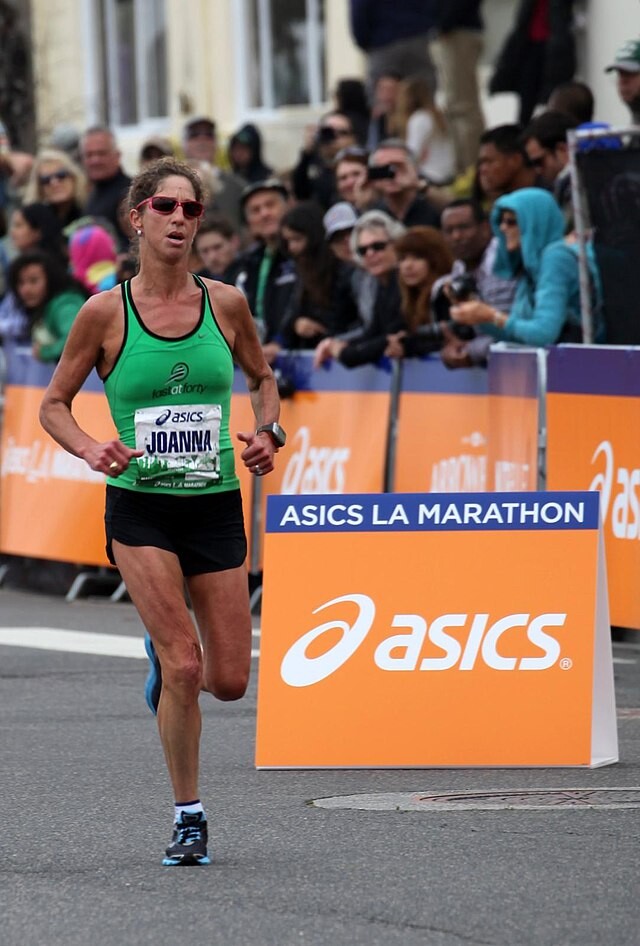
2.- Don’t go out too hard
That same feeling of ease at the beginning of a race “lures people into a false sense of what they can achieve,” Zeiger says. “Going out too hard is not necessarily a subjective measure–you cannot rely on how you feel, because you should feel good.”
Zeiger says she has never heard someone say that they wish they’d gone out harder in the first half. It can be helpful to set a pace or HR guideline for yourself or follow a pace bunny if you’re in a longer race.
3.- It’s hard to imagine things going wrong
Races often have beautiful beginnings. The weather is glorious (or at least decent), you feel fantastic and well-trained, and the enthusiasm of the group lifts your spirits. So many things out of your control can go wrong in the later stages though–unexpected GI distress, cramping, or a wild wind blows in.
Recognizing that this happens and maintaining a sense of humor about it while you troubleshoot, or, worst case scenario, drop out, is essential. Sometimes you are as prepared as you can possibly be and things still go awry.
4.- Nutrition matters
Race day nutrition is important. Even if you’re running a short race and don’t need to consume calories mid-run, your pre-race meal should be something you also eat on training days and are used to digesting.
If you’re in a longer race and do need to stop at aid stations, Zeiger says athletes should know beforehand what they are going to grab–water, a gel, Gatorade? Knowing in advance prevents any indecision and time-wasting when you arrive, and also helps you keep track of what you have consumed.
5.- Have fun
Zeiger says this is by far the most important tenet of racing. “Success in sport is difficult and requires time, patience, perseverance and [occasionally] heartache,” she explains. “Ultimately, there must be an element of enjoyment to make it all worth it.
When things line up right and you find yourself really enjoying a race, notice and be present in the moment. “Racing is a privilege and we are lucky to be able to do something that we enjoy so much.”
by Keeley Milne
Login to leave a comment
Emily Sisson, Conner Mantz, Jenny Simpson, Tirunesh Dibaba Headline 2023 Aramco Houston Half Marathon
The Houston Marathon Committee announced today the elite athletes who will chase the $10,000 first-place prize in this historically fast race. Elite fields for the Chevron Houston Marathon which is held simultaneously on Sunday, January 15, will be announced tomorrow.
American records in the half marathon and marathon were set in Houston last year, but by the end of 2022, Emily Sisson had broken them both. Houston will be Sisson’s first race since running 2:18:29 at the Bank of America Chicago Marathon in October, shattering Keira D’Amato’s record by 43 seconds. Earlier in the year, her 1:07:11 performance in Indianapolis shaved four seconds off Sara Hall’s half marathon record.
“I have really enjoyed racing here in the past and am excited to start my 2023 season in Houston,” said Sisson who finished fifth in the 2019 Aramco Houston Half Marathon. “I felt good coming out of Chicago and am really looking forward to another opportunity to race.”
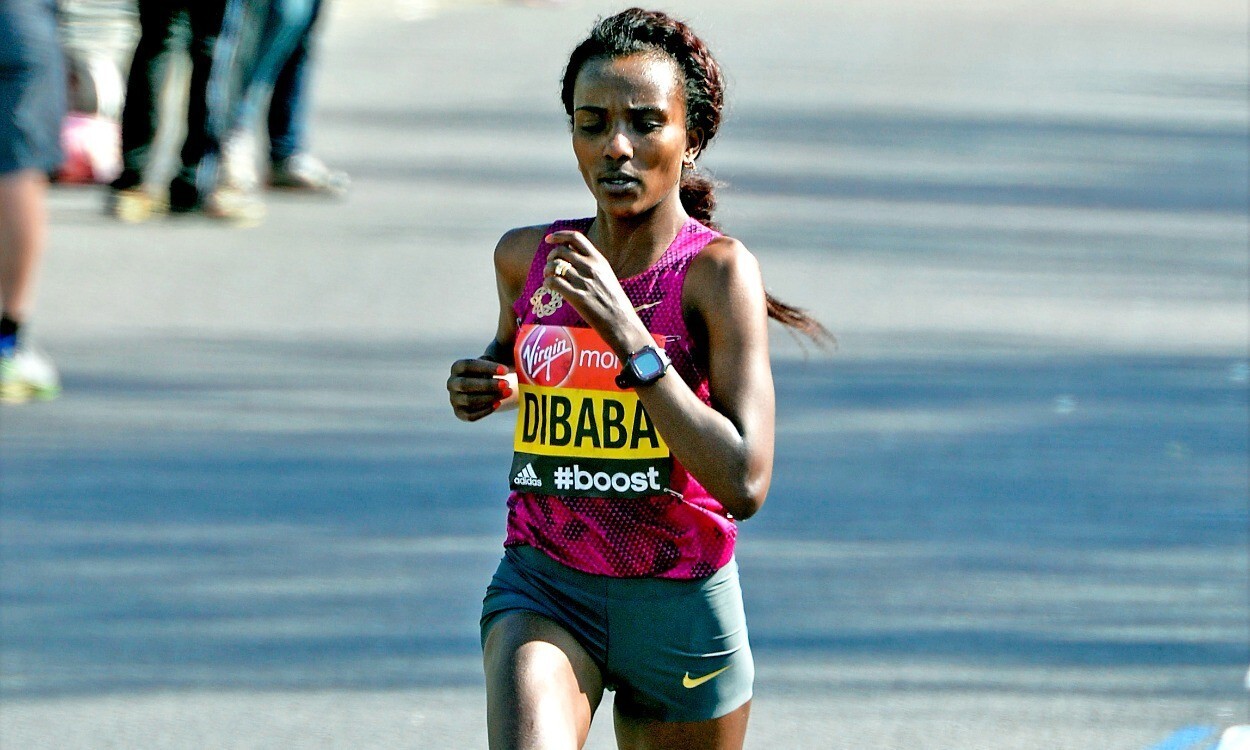
Sisson will have to contend with one of the greatest distance runners of all time as Tirunesh Dibaba of Ethiopia makes a return to competition after a more than four-year hiatus. The three-time Olympic gold medalist and five-time world champion has not raced since 2018 but says after giving birth to a second child in 2019 and then battling COVID-19, she is ready to add another chapter to her storied career.
“Houston is a famous race and my training has been going well,” said Dibaba, the 2017 Chicago Marathon Champion. “It seemed like the best way to test myself and see what could be next.”
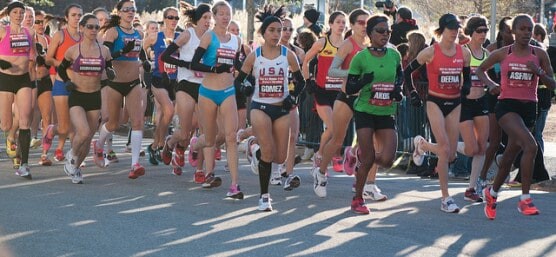
Other top contenders in the women’s half marathon elite field include 2021 Berlin Marathon runner-up Hiwot Gebrekidan of Ethiopia and 2022 World Championship Marathon fourth-place finisher Nazret Weldu of Eritrea. Dom Scott will attempt to break the South African half marathon record of 1:06:44, after a 3rd place finish in Houston last year. The top Americans include 28-time U.S. Champion Molly Huddle who set the then-American record here in 2018, as well as World Champion and Olympic Bronze Medalist Jenny Simpson who will make her half marathon debut.
“All of the racers I am learning from speak so highly of their experience with the Aramco Houston Half Marathon,” said Simpson. “It’s the perfect place for me to make my half marathon debut because the timing, course and organization are so well tested.”
In the men’s race, Edward Cheserek of Kenya, known to fans as “King Ches,” will look to trade in his crown for a king-sized belt buckle. Cheserek is coming off a 1:00:13 half marathon personal best in Valencia last month. “After Valencia this fall, I’ve trained harder and think sub-60 is possible,” said Cheserek, a 17-time NCAA Champion at the University of Oregon. “Houston is known for being a fast course and I want to have a chance at a personal best.”
Cheserek will face off against 2019 champion Shura Kitata of Ethiopia who lines up for his fourth Aramco Houston Half Marathon. With career marathon victories in London, Frankfurt and Rome, Kitata says he “feels home and comfortable in Houston.”
Other contenders to watch are Ethiopia’s Leul Gebresilase Aleme, runner up at last year’s London Marathon, and 2020 Olympian Mohamed El Aaraby of Morocco. The top American in the field is Conner Mantz of Utah. Mantz, the 2020 and 2021 NCAA Cross Country Champion at BYU, made his much-anticipated marathon debut in Chicago last October running 2:08:16, the fastest debut ever by an American-born runner.
Houston-native Frank Lara will return for a second consecutive year. Lara, a former Gatorade Texas High School Runner of the Year, was the top American finisher in the marathon last year. This year he competes in the half marathon.
The HMC is the only organizer to host two World Athletic Gold Label events simultaneously, which are Sunday’s Chevron Houston Marathon and Aramco Houston Half Marathon. These two races will have over 27,000 registrants, with an additional 6,000 registrants in the We Are Houston 5K presented by Aramco and Chevron, held on Saturday, January 14.
“Whether you are an elite athlete or a new runner, our committee is dedicated to hosting your individual pursuits with the utmost care and respect for the extraordinary efforts made to toe the start line with us,” said Wade Morehead, Executive Director of the Houston Marathon Committee.
The Aramco Houston Half Marathon and Chevron Houston Marathon will be broadcast on ABC13 from 7 a.m.-10 a.m., on Sunday, January 15 with a race day recap at 10:35 p.m. Joining ABC13’s Greg Bailey and Gina Gaston as expert commentator will be Des Linden, the 2018 Boston Marathon winner and 50K world-record holder. Linden made the first of her two U.S. Olympic Marathon teams in Houston in 2012. The trio will be joined by long-time analyst and Rice University cross country coach Jon Warren.
by Letsrun
Login to leave a comment
Aramco Houston Half Marathon
The Chevron Houston Marathon provides runners with a one-of-a-kind experience in the vibrant and dynamic setting of America's fourth-largest city. Renowned for its fast, flat, and scenic single-loop course, the race has earned accolades as the "fastest winter marathon" and the "second fastest marathon overall," according to the Ultimate Guide to Marathons. It’s a perfect opportunity for both elite athletes...
more...This NYC Marathoner’s Finish Went Viral, Now She Wants to Inspire Others Who Look Like Her to Run
Bailey Quinn is determined to promote fitness for all body types.
Name: Bailey Quinn Age: 29 Hometown: Marco Island, Florida Occupation: Medical Student at Touro College of Medicine in Harlem, New York. Beginning pediatric residency in July 2023! Time Running: 2 years Reason for Running: I’m graduating medical school in May 2023, and I made up the goal of completing the New York City Marathon after my first semester ended back in December of 2019. My school is in Manhattan so doing something big and crazy seemed like an awesome way to celebrate the end of my school years.
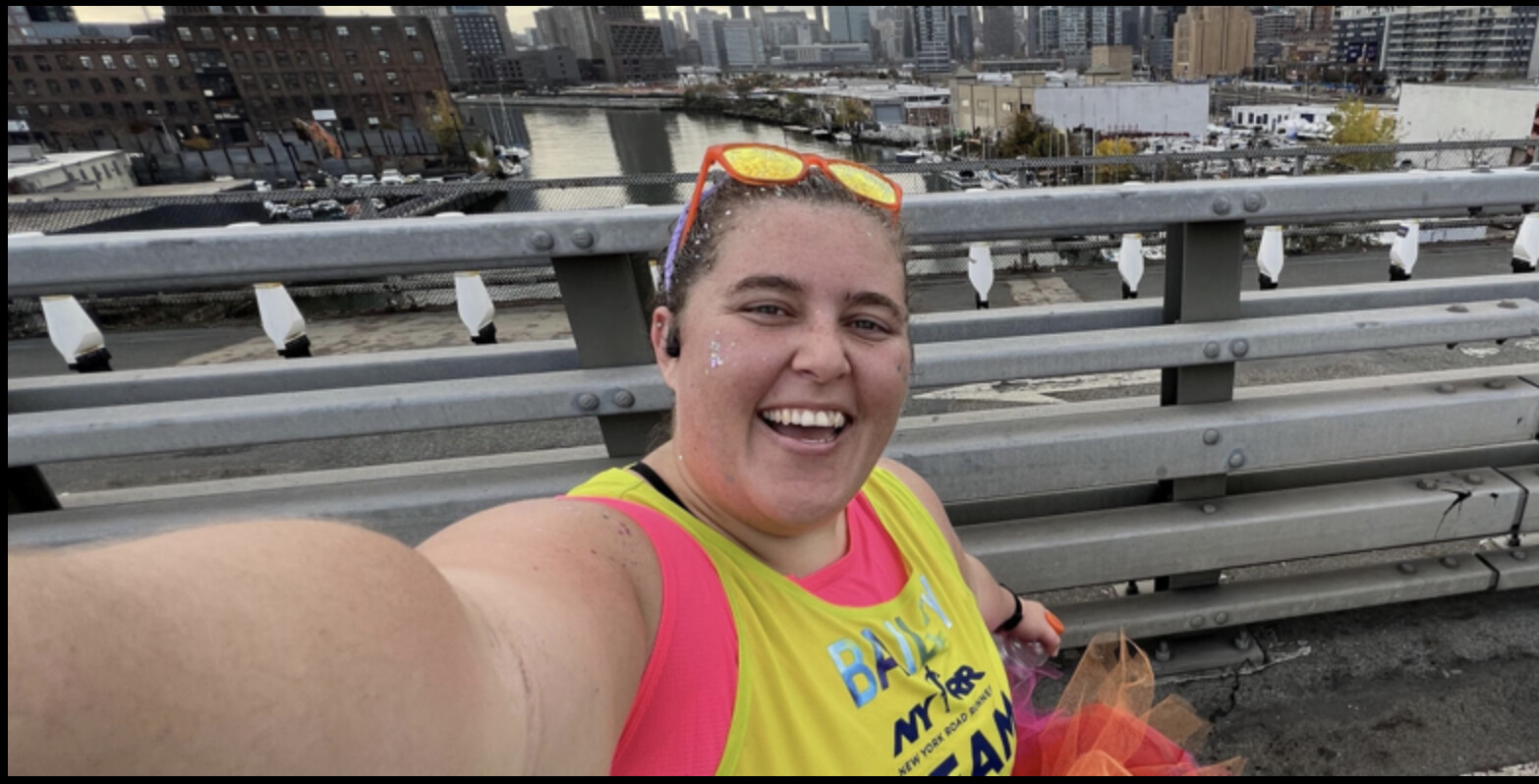
I grew up playing every sport—volleyball, basketball, swimming, softball, tennis. I was also always heavy. I’ve been overweight my whole life. My earliest memories with my pediatrician are her telling me I needed to lose weight. I never looked like other kids, even my siblings. But that didn’t stop me from becoming an athlete. I showed up. I never missed a practice. My parents taught me from day one that you don’t have to be the best player—be the best teammate and the athlete coaches want to work with.
I also have an autoimmune disease called Addison’s disease, where my body doesn’t make the hormones cortisol and aldosterone, which regulate inflammation, your sleep/wake cycle, blood pressure, and plays many roles in organ systems all over your body.
In 2009 I was very sick—vomiting for weeks straight at times and frequently being admitted to the hospital. I was a medical mystery for years. I would get so sick I’d be in the hospital for weeks vomiting and nobody knew why. (I’ve actually torn my esophagus from vomiting so violently and so often.) I went through college at the University of Florida as a registered disabled student. I thought that was going to be my life.
In 2016, I just started applying to medical school and I looked at my mom and said, “I can’t live like this.” That’s when I was finally diagnosed with Addison’s disease, after really pushing my doctors to look for a better answer. They ordered one blood test and my cortisol levels came back as undetectable. I will be dependent on steroids for the rest of my life.
But that has never stopped me. I did marching band at the University of Florida, and I was also on the sailing team. I call myself an endurance athlete.
I rode a bike across America in 2014 to raise money for the Ulman Cancer Fund for Young Adults. We started in Baltimore, and we ended in Seattle. And in the summer of 2020, I swam the coastline of Marco Island, six and a half miles, and I did that in three hours and eight minutes. I love open water swimming. I like grand undertakings. I’m a go-big or go-home person. And I’m also not the “typical” picture of fitness.
When I started medical school in New York City in July 2019, I knew I wanted to do something big. By the end of my first semester in December I had decided on the New York City Marathon. I thought, “I bet a lot of people think I can’t do this, so I’m going to do it.” I committed to start training and run it in 2022.
I did try to run as a kid. My mom grew up as a New York Road Runner in North Salem, New York. I tried to get into running in eighth grade, but I felt like I was a burden to my coaches. I was slow. I was the kid that they were begrudgingly waiting for during practice and meets. So I finished the 8th grade season and didn’t even think about coming back out to join the team in 9th grade. But I participated in softball, swimming, cycling, and other sports in high school. My whole life with running, before the New York City Marathon, I was met with: “You don’t belong here.”
Most of my training was endurance-based swimming and cycling because I have a slightly torn meniscus at the moment (I hurt it by slipping at a baseball game in October 2021). So, I knew I couldn’t train heavily with running, as being in medical school I’ve been too busy to have surgery to repair it. I joined a USA Masters swim team at my local YMCA in 2020 and worked with a coach who made some custom endurance plans for me. I was swimming two to three miles a day in 2020 and doing lots of long walks, building endurance.
In 2021, I started my clinical rotations, so I had less time to train, and it was more speed focused and aerobically demanding. With my meniscus tear in October 2021, I also started to do spin for a low-impact cardio workout. So, last year I was doing 45 minutes a day of Peloton or swimming and added in more jogging and walking. I did enough training to finish the marathon—that was my goal.
I ran with Team for Kids because I feel very strongly about getting kids involved in sports, particularly because I’m planning on being a pediatrician. I made a giant rainbow tutu to do the marathon in and had so much fun because that’s just who I am. I knew I was going to run/walk the 26.2 miles.
I finished at 8:17 p.m; it took me 9 hours and 19 minutes. A video of me crossing the finish line went viral on social media. It was a video of me pumped as hell to finish. I was exuding such radiant joy and just being goofy. I was just pumped that I accomplished my goal of finishing and just got to celebrate and relax.
There was never a doubt in my mind that I wouldn’t finish. I knew my speed wouldn’t be there, but my training method absolutely worked. I felt great the whole time. My boyfriend had water and Gatorade for me at mile 23, and he finished with me. I had gels and Honey Stingers for the whole race.
I showed up ready for a long day. For me, everything went perfectly to plan. I did most of my jogging the first half and walked most of the second. I knew I was going to be slow, and someone who looks different. I wanted to finish for me, not for a time.
Unfortunately, bullies are everywhere, and I was flooded with comments and messages about how fat I am or how I’m a disgrace to running. People see a heavy person and don’t know about my Addison’s disease and the steroids I take that also impact how I look.
Weight is a complex thing—there is not one single factor that dictates someone’s weight and it’s impossible to tell that just by looking at them. I’ve been met with this attitude in running since I was young, and this is what keeps people out of running. But I want to be an example. I’m not going to quit or leave! I wanted to finish for the kids who look like me so they can say, “I can do a marathon too. You did it, and now I think I can.”
On the flip side, so many people have reached out and are inspired after seeing the video. The positives far outweigh the negatives, and I’m having a blast! Now I want to do the World Marathon majors.
My next marathon will be the Chicago Marathon in 2024. I’m definitely here to stay, because I think the sport needs it. People like me are bullied out of running, and I want to change that. I want to be the person saying, “You finished! I’m so proud of you!”
Running is so accessible, and I can get the message out there. I never would have dreamed I would be here, but I am so happy and proud to say I am.
Running and the running community have made me feel like the sky’s the limit. Before this year’s New York City Marathon, I thought I just wanted to do one marathon before I die—now I want to do all six of the Abbott Major Marathons and I hope to help my mom complete her dream of doing the NYC Marathon by doing it again with her.
I really love the person that the marathon has made me. To finish how I did and have fun, putting myself back out there as a runner despite negative experiences in childhood has made me realize I can do it! I’ll never be the fastest, but I will definitely be the most colorful. It’s all that matters! Get out there, let’s go!
These three tips have made my running journey a success:
1. Run your own race
Run for you and get out of it what you want to get out of it. Ignore what everyone else has to say about it.
2. Use anti-chafing creams
I was running/walking for more than nine nonstop hours and I had no rashes or rubs or anything using these.
3. Listen to your body
If you’re feeling sick or injured, test the waters—but I’m invested in the long term. So, if my body is telling me I need more sleep today, I’m going to get some sleep because I want to be able to run tomorrow. You need to push yourself when you can because that’s how you get better, but listen when your body needs rest.
Bailey’s Must-Have Gear
→ Bodyglide: I could not run without it! I’m about to be Body Glide’s number-one supporter for the rest of my marathon career. It’s great for arms and legs—everywhere! Just bathe in it!
→ Theragun Pro and Theragun Mini: I prefer the Pro for regular use but love the mini for my swim bag. They’ve been absolute game changers in my preworkout warmups and my postworkout recovery! They’s especially helpful on days when I can’t stretch as much as I would like due to time constraints—like when I’m rehabbing an injury, or when I’m doing consecutive days with endurance-style workouts (two- to three-mile swims, four to six days a week). They make my recovery time significantly faster; they made my leg recovery from the marathon a breeze.
Login to leave a comment
NCAA champion Katelyn Tuohy signs sponsorship deal with Adidas
On Nov. 22, only three days after Katelyn Tuohy won her first NCAA XC Championship, she announced on her Instagram that she has signed a name, image and likeness (NIL) sponsorship deal with Adidas Running.
“Joining the three stripes fam couldn’t feel more right,” Tuohy said on Instagram. “I am excited to join the Adidas team and their amazing crew of student-athletes.”
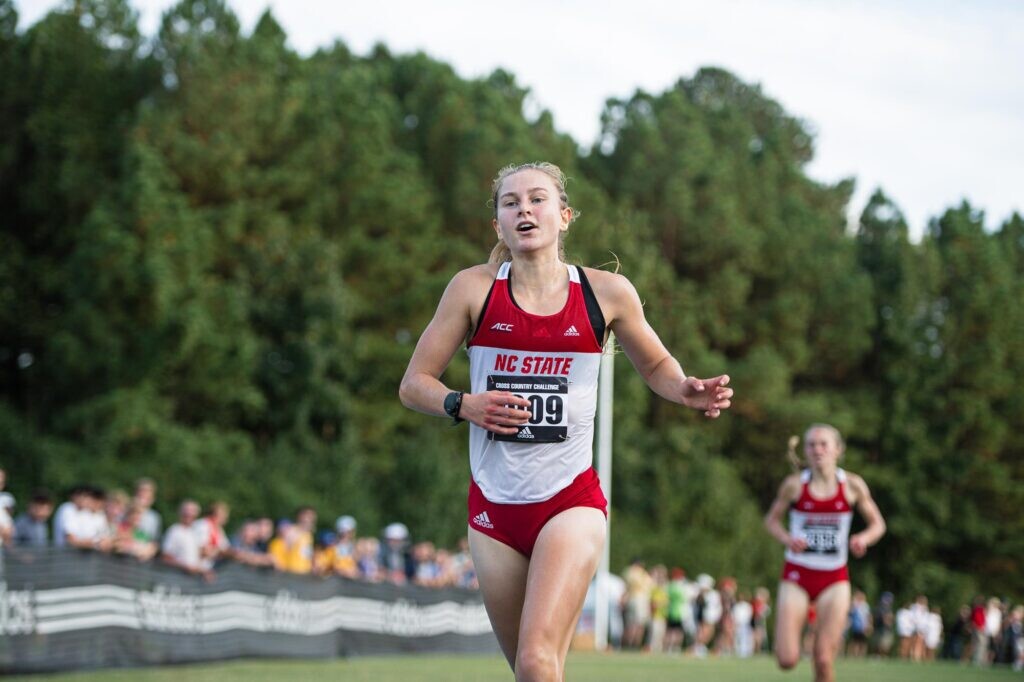
Two years ago, all NCAA athletes were prohibited from profiting from their fame, and it was not until July 2021 that NCAA passed a rule allowing student-athletes to monetize their name, image, and likeness. Although a NIL deal does not have the same monetary value as a pro deal, it allows an athlete to continue competing at the collegiate level while earning money from their image.
According to the collegiate sports website On3, Tuohy is ranked as the 39th most popular female athlete across all NCAA sports and carries a brand valuation of nearly CAD $100,000.
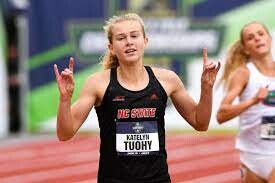
Tuohy is one of the best-known distance runners in the NCAA right now due; the third-year student at North Carolina State University is a three-time NCAA champion, winning the 5,000m title last spring and the XC individual and team title at the 2022 NCAA XC Championships.
She began to make headlines as a high school athlete in 2018 when she set a U.S. high school 5K record of 16:06.87. Tuohy also won the Gatorade Athlete of the Year for cross-country, given to the top U.S. high school athlete. She won this award in three of her four years, becoming the only athlete in any sport to accomplish this.
by Marley Dickinson
Login to leave a comment
Organizers of the 50th running of the Credit Union Cherry Blossom 10 Mile Run announced today that next year’s race will offer a $50,000 record bonus
$50,000 World and American Record bonus pool* and hosting PRRO and RRCA Championships are just a few of many highlights planned to commemorate 50 years of world class road racing in our Nation’s Capital.
October 7, 2022, Washington, DC: Organizers of the 50th running of the Credit Union Cherry Blossom 10 Mile Run (CUCB) announced today that next year’s race will offer a $50,000 record bonus, to be divided equally* among any man and woman setting a World Athletics World Best and/or American 10 mile record at The Runner’s Rite of Spring® on April 2, 2023.
The bonus payouts will be in addition to $69,000 in guaranteed prize money, with $44,000 paid to the top ten men and women in the international field and $25,000 to the top ten American men and women (double dipping allowed for the Americans). The race was one of the first U.S. events to pay prize money back at the dawn of the prize money era in 1984 when the total purse was $13,400, split evenly among the top men and women.
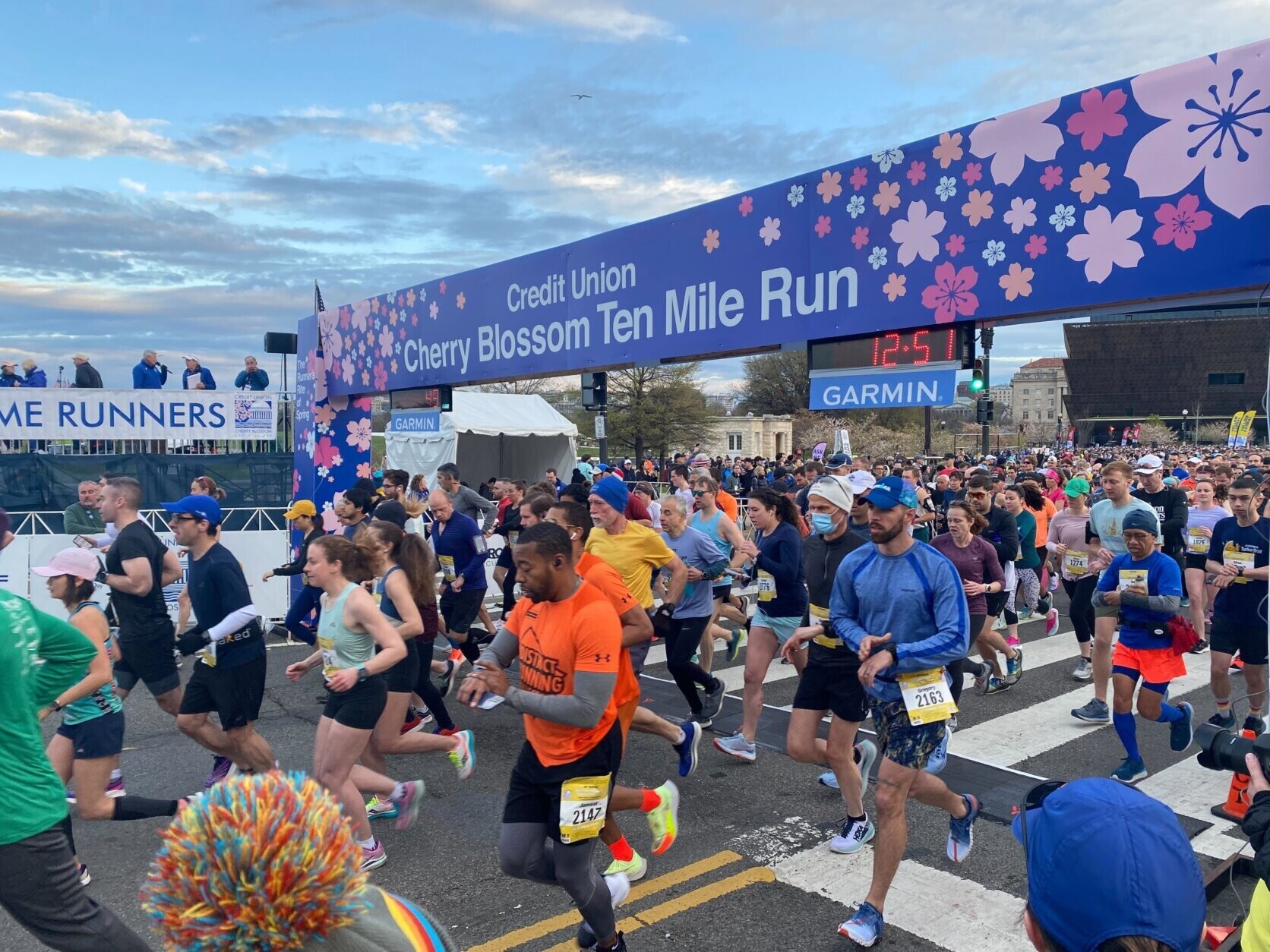
* If World Best times and American Records for men and women are set at the event (i.e. four records set), the $50,000 would be split into four $12,500 shares. If only one World or American record is set by either a man or a woman, the athlete setting the record would get the full $50,000. If an American sets both the World and American records, and no other records are set, he or she would receive $50,000.
Currently, the times to beat are as follows:* Haile Gebreselassie’s (ETH) World Athletics Best of 44:24, run at the Tilburg 10 Mile in Tilburg, Netherlands, September 4, 2005;* Keira D’Amato’s World Athletics Best in a women’s only race of 51:23, run at the UpDawg 10 Mile in Washington, DC, November 24, 2020;* Greg Meyer’s American Record of 46:13, run at the Cherry Blossom Ten Mile in Washington, DC, March 27, 1983;* Keira D'Amato’s previously listed World Best 51:23 is also the American Record for a women’s only race.
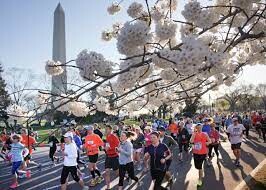
The 10 Mile will serve as the Road Runners Club of America National 10 Mile Championship and the 2022-2023 PRRO Circuit Championship. Winners of the 2022-2023 PRRO Circuit events will be eligible for the $10,000 PRRO Super Bonus by winning the PRRO Championship (the bonus is split if an eligible male and female win the Championship).
Event Director Phil Stewart said, “Our 50th anniversary will be like no previous edition of the race, with the largest prize pool of guaranteed and bonus money ever, and featuring the RRCA and PRRO Championships. The race has always been a leader in the support of elite competition and we want to highlight this heritage in a big way in this special year.”
The inaugural Cherry Blossom 10 Mile in 1973 was won by Sam Bair, in a time of 51:22; the women’s winner was Kathrine Switzer, in a time of 1:11:19; 127 men and 12 women ran that first race. Bill Rodgers holds the honor of most victories, with four consecutive wins between 1978 and 1981. Three women have each won the race three times: Julie Shea (1975-77), Lisa Weidenbach (1990-1992) and Lineth Chepkurui (2008-10). Ben Beach leads all Cherry Blossom finishers with an active streak of 49 years. A comprehensive media guide detailing a wide variety of statistics from the first 49 CUCB races is available here.
Other significant highlights of the 50th anniversary celebration will be announced in mid-October, including the procedures for entering the lottery for race registration and changes in the 5K.
Thanks to Credit Union Miracle Day’s title sponsorship since 2002, the Credit Union Cherry Blossom events have raised over $10.2 million for the Children’s Miracle Network Hospitals, including $323,000 in 2022.
About the Credit Union Cherry Blossom 10 Mile:
The Credit Union Cherry Blossom 10 Mile, organized by Cherry Blossom, Inc., a 501c(3) chapter of the Road Runners Club of America, is known as “The Runner’s Rite of Spring®” in the Nation’s Capital. The staging area for the event is on the Washington Monument Grounds and the course passes in sight of all of the major Washington, DC Memorials. The event serves as a fundraiser for the Children’s Miracle Network Hospitals, a consortium of 170 premier children’s hospitals across North America. About one-third of the funds raised support Washington, DC’s own Children’s National (“Children’s Hospital”). The event also funds the Road Runners Club of America’s “Roads Scholar” program designed to support up-and-coming U.S. distance running talent.
Credit Union Miracle Day, Inc., a consortium of credit unions and credit union suppliers, is the title sponsor of the Credit Union Cherry Blossom 10 Mile, 5K and Kids’ Run. Current presenting sponsors include ASICS, MedStar Health and Wegmans; supporting sponsors include CO-OP Financial Services, CUNA Mutual Group, PSCU, Potomac River Running, Gatorade Endurance, Suburban Solutions and UPS.
The event is a proud member of the PRRO Circuit (PRRO.org), a series of this country’s classic non- marathon prize money road races with circuit stops in Washington, DC; Spokane, WA; and Utica, NY.
In addition to being sanctioned by USA Track & Field and the Road Runners Club of America, the Credit Union Cherry Blossom events have earned Gold Level Inspire Certification from the Council for Responsible Sport in recognition of its legacy of commitment to sustainability and thoughtful resource management.
by Runners Web
Login to leave a comment
Cherry Blossom Ten Mile Run
The Credit Union Cherry Blossom is known as "The Runner's Rite of Spring" in the Nation's Capital. The staging area for the event is on the Washington Monument Grounds, and the course passes in sight of all of the major Washington, DC Memorials. The event serves as a fundraiser for the Children's Miracle Network Hospitals, a consortium of 170 premier...
more...The Joys of Small Local Races
But what it lacks in high-falutin' swag, it more than makes up for in community and character. While there are speedsters at the front of the pack, pushing each year to lower the course record (now a mind-boggling 4:07:48), some runners take well over nine to complete the course, marshaled by regional runners and the Ouachita Amateur Radio Association.
The race is capped at around 90 runners and remains small enough to fit all entrants in an annual start line group photo. The race is the destination, not a waypoint en route to some larger, shinier thing.
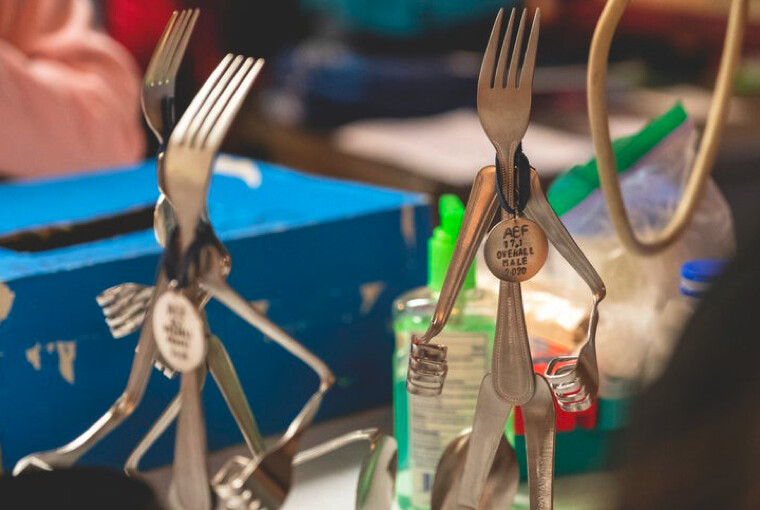
"I think that ABF has always been special because it is one of those events that feels like a big family reunion," says Stacey Shaver, who's been the race director for ABF for the past five years. "It's also just a cool corner of the state, where you can forget that modern (in)conveniences like smartphones and email exist for a few hours. We have runners come back year after year and from across several states. Even for runners new to our event, it feels like going to grandma's house. Grandma's house means fun, games, laughter, and leaving well fed. That is exactly what our runners get."
In addition to the homey feel of Grandma's house, the past few year's awards for first place finishers have included hand-harvested local honey, hand-soldered fork statuettes, and a charming cross-stitched winner's plaque.
Community Roots
As more races are becoming consolidated under increasingly large banners, company sponsors, and race series, many runners are looking to smaller, home-grown events with a family feel. Few things top the feeling of seeing friends and run family out along the course and feeling supported by your home community.
Runner Justin Grigg recommends Missoula, Montana's Double Dip race for just that reason.
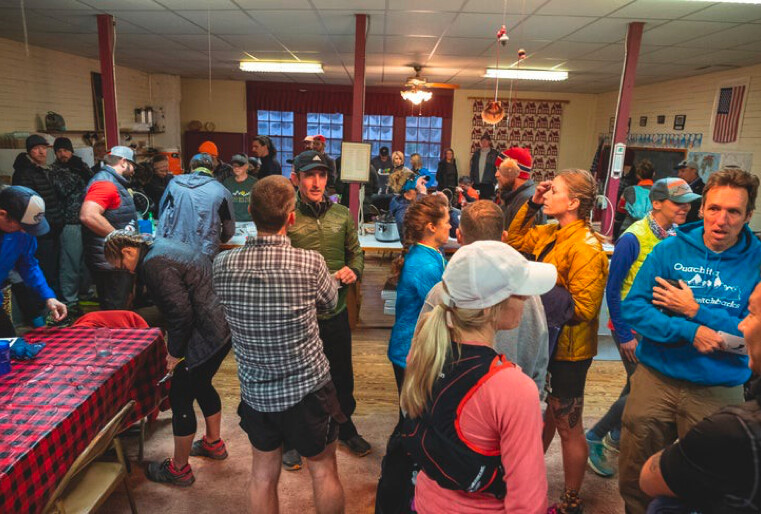
"You'll usually see friends racing, but also working aid stations, spectating along the course or gathered at the start/finish area. With the two out-and-back sections, you more than likely will see friends who are racing ahead of or behind you, and people who aren't racing will run up University and Sentinel to watch," says Grigg.
Many runners appreciate being able to share their race-day experience with the larger community and enjoy being cheered on while they're competing. Live music, food, and adult beverages don't hurt either when it comes to incentivizing community members to come and bask in the finish line stoke. Some events can almost feel at odds with the communities they happen in, and it's a breath of fresh air when everyone feels included in race day festivities.
Close to Home
The International Trail Running Association (ITRA) estimates there are around 3,600 trail races every year, and approximately 1,400 of those are in the U.S. While big events garner the most press and social media attention, there are hundreds, if not thousands of smaller, local races that are providing the bulk of opportunities for runners to lace up their shoes and hit the trails.
Aside from the accessibility, there are economic and environmental reasons that racing closer to home is more appealing.
Sam Robinson, from Oakland, California, loves the local Woodmonster Trail Race because it's practically in his backyard.
"I've run over every trail in the park numerous times. The main climb in the race is a spicy 0.9-mile ascent with a 14% grade-one of my favorite hills to run up in California. I know and love almost every inch of those trails and that makes the race joyous to me."
Traveling is a hassle. Trying to make sad hotel-room oatmeal in a tiny coffee maker from the 1990s at three a.m. before having a blow-out fight with my phone's GPS system to find the start line in the pitch dark of rural Nowhere is never fun. You know what's even better? Sleeping in your own bed, eating your own properly-cooked oatmeal, and navigating your own self to the start line.
Race locally. If not for the community or environmental plusses, then for the extra 20-90 minutes of sleep.
It's Not About Speed
"I love when a race director focuses more attention on the experience than the results of the race itself," says pro athlete Jeff Colt. "it makes the event fulfilling for the entire field instead of just some of the top runners. Jemez Mountain Trail Runs is another good example of this - instead of making grandiose prizes for the top three or some fancy sweatshirt included with registration. It makes the event fulfilling for the entire field instead of just some of the top runners." Colt's favorite small race is the Randolph Ramble, based in Randolph, New Hampshire.
Many RD's are subbing out swaggy grab bags filled with gear and gels no one wants with bespoke items and experiences instead. "The Jemez Mountain Runs offer breakfast before the race, amazing aid stations, a live band at the finish, and a full dinner after the race," says Colt.
Registration for the Ramble? Just $45. Many big ticket races cost hundreds of dollars to enter, before even forking over cash for housing and meals, making smaller, local races an affordable alternative. Washington State's Capitol Peak 50 only costs $50. At a dollar a mile, you'd be breaking even, even if you didn't have a lick of fun. Additionally, many smaller races like ABF invest in their home communities. Every cent raised at ABF goes directly to the Big Fork Community Center.
The community created by the races is important, too. While many larger races inspire buy-in from the community they happen in (I was recently blown away by the volunteers at the Western States Endurance Run, many of whom abandoned their weekend running plans to stand in a river or hand out flat coke), many volunteers at smaller races aren't trying to up their chances in a lottery or waitlist. They're simply there because they want to be. Whether it's operating a HAM radio or flipping pancakes at the finish, a race that's stacked with community-run aid stations feels extra special.
"I want to meet people at races and the ones that foster community are the ones that attract me the most. The Randolph Ramble welcomes runners in and makes them feel like a neighbor. I'd be surprised if you didn't end up with a new running buddy after running the Ramble," says Colt.
The worse the website the better the race.
The worse the website the better the race. For years, the race existed only as a Facebook page, with no website or online registration, a testament to the "if you build it they will come" spirit nascent in the true grassroots of trail running.
"At the Ramble, expect lumberjacks to be out there in their leather hiking boots, elite trail runners who prefer to stay out of the limelight, mountain wanderers who descend from above the clouds only to resupply for food and to run the Ramble, and other local north country neighbors who want a good morning workout," says Colt.
Race Director Doug Mayer (also a columnist for this magazine) says that the community feel is very much by design.
"We turn to our community for everything we need, from food courtesy of the local pub and cafe to handmade finisher awards. There's a strong sense of community and self-reliance in the White Mountains, so we're used to thinking this way. If you just stop and look for a moment, you'll discover all kinds of talents and services practically at your feet. And when the community is powering the event, almost by default it will have a great local vibe," says Mayer.
Are Small Races on the Rise?
"The big races grab the headlines, but under the surface, every day and all around the country, local trail runners are coming together to create authentic, unique, and wonderful events," says Mayer. "Most of us got our start that way. I'm deep in the world of marquee races now, but it's still true that nothing makes me happier than seeing 100 runners head up Mount Crescent at the start of every Ramble."
"Trail running as a whole is growing, and people who can't get into those events but still want the challenge of a mountain race will find that and much more at Athens Big Fork Trail Marathon but without the big race fees," says ABF RD, Stacey Shaver.
"We simply ask people to pay what they can. We don't want money to be the reason someone misses out on experiencing our races or feeling connected to the club and community. I also think it's really special to help people see the fantastic beauty that we have here in our backyard. I always feel such a sense of local pride when I see the beauty here, and I'm so grateful that we get to enjoy it in this special way."
Because local races are often directed by, well, locals, they can be more responsive and receptive to the community's needs, whether that's access or affordability. At ABF, it's not uncommon to see competitors hiking in full hunting get-ups. I've seen makeshift garbage bag ponchos, blue jeans, and an actual, hand-carved wooden hiking staff. And maximizing points of entry to the sport via affordable local events is a great way to grow the sport.
But what happens when races become victims of their own success? As a younger runner, sometimes it's hard not to feel nostalgic for a trail running world I never experienced but hear frequently about - one without waitlists or golden tickets, a utopic vision where you could register for marquee ultras day of, at the start line. The way these stories are passed down from my older trail buds, it seemed as though at every race you might see Scott Jurek flipping finish line pancakes, or that running Western States wasn't a matter of "if" but "when." It's hard not to pine for the trail running days of yore, even if they frequently involved non-technical fabrics and carrying your water in a Gatorade hockey bottle a la Matt Carpenter. It's not "Make Trail Running Great Again" nostalgia, but the ability to connect with the running community stripped of the pretenses of needing something flashier than the simple appeal to come and run.
Even so, I'm glad trail running is growing. And I'm glad it's getting more competitive. I'm especially glad that more folks every day might have the opportunity to race, wherever they are, and fall more in love with this wonderful, heart-breaking, silly sport.
Should I be more worried about people "discovering" my favorite local race? Will gushing about its unique charms be the very thing that causes it to become a big box event?
"I'm not worried about sharing how great this event is with a national publication, because the beauty of this event is that it can be recreated with little effort, and SHOULD BE recreated in your little pocket of the country," says Colt. "It's a local race, but it is a great example of what is needed to replicate this in your own backyard. You need an idea, a desire to gather some runners together, and maybe some local sponsors who dig what you're trying to doHave a fun, local event on the 10K of trails nearby your house and build that community where you are. We all have the tools to make something special."
There's nothing wrong with big races either. Getting to compete with the world's best athletes in amazing locations with well-trained aid station attendees is amazing - but it's no replacement for the local rotary club dishing out Fireball and pie on a 30-degree drizzly morning in the Ozarks.
Meanwhile, Back at Big Fork
I'll keep signing up for big races. I'll keep accepting swag bags full of expired lube samples and discount massage flyers. I'll keep setting alarms for the crack of dawn to register for races and I'll keep refreshing my browser to see if my name is moving up the waitlist.
But, I'll also still keep rolling up to the Big Fork Community Center on the second Saturday in January to subject my ligaments to the indifference of Ozark trails. I'll keep showing up to run a course that's only marked by comically sporadic blazes to get a result that will never show up on UltraSignup, or affect my ITRA score whatsoever.
I'll keep running ABF because I like that you can't upload the race to Strava for hours due to a lack of cell service. By the time you have enough bars to post a recap on Instagram, the urge to seek validation via screen has faded into a warm glow of post-run beer and real-life high fives.
I'll keep doing it because sometimes my legs and my heart need a reminder of why I trail run: not for accolades, recognition, or points, but for community and homemade chili. In lieu of a finishing chute, there's a chalk line etched onto the highway, a lone man clad in his warmest hunting wear with a clipboard marking down finishing times. Finish line IPAs and fresh biscuits are a bigger reward than any kudo, and time spent running in the woods with close friends will always be my favorite way to spend a Saturday.
here's no gun.
No timing mat. No official start line.
The Athens Big Fork Trail Marathon starts at the Big Fork Community Center, the barn-quilted hub of an unincorporated community in southern Arkansas boasting 179 residents, at last count. Nestled in the Polk County region of the Ouachita Mountains, the trail itself was constructed by the U. S. Postal Service 125 years ago along pre-established Choctaw and Caddo trade routes and game trails and was partially restored in 1986. Summits along the course, which boast (according to my GPS, though the thick foliage can fool even the highest of tech) almost 8,000 feet of climbing, are charmingly named Brushy, Big Tom, Brusheap, and Hurricane Knob. The average grade is 12%.
I was drawn to this race after reading about it in this very magazine, a story called The Toughest Trail Marathon You've Never Heard Of. After seeing how close this southern trail test-piece was to the Ozark hills, where I spent my childhood, I was drawn by the allure of something that felt comfortably familiar, and familiarly uncomfortable. There's a warning on the race's website meant to deter beginners. Below that, a secondary deterrent should the original warning have the opposite of its intended effect.
"Please do not be enticed into trying this run because of the difficulty warning-it is merely an honest attempt at preventing the run organizers from having to find and rescue someone ill-equipped for the event."
For the uninitiated, the trails of the southeast are punishingly steep and Dantean in nature - where the trail exists at all. For much of ABF (what locals lovingly call the marathon) the "trail" is in fact, a dried-out ol' crick. Mossy "baby-heads" (aptly named rolly-polly rocks approximately the size of a baby's head) and slick roots cackle at the futility of rubber outsoles and lugs. Forest Service literature euphemistically refers to it as "unsurfaced".
There's no entry fee. No timing chip. No YouTube stream.
Login to leave a comment
Defending champions will return to mark 50th anniversary of Chevron Houston Marathon
With 194,039 finishers having run 5,083,822 miles since the first Chevron Houston Marathon, the race will mark its 50th anniversary on January 16.
“When 113 runners lined up in 1972 to run loops in Memorial Park, no one would have predicted the marathon would have a Golden Anniversary at all, much less with a field of 28,000 celebrating on the streets of Houston,” said Houston Marathon Committee Executive Director Wade Morehead. “Led by some of the top marathoners and half marathoners in the world, we’re looking forward to a great day in the history of the race and the city.”
Returning to defend their Chevron Houston Marathon titles from 2020 – only a virtual race was held last year because of Covid – are Askale Merachi and Kelkile Gezahegn, both of Ethiopia. Making her seventh-consecutive appearance will be three-time champion Biruktayit Eshetu Degefa, who will renew her quest to become the race’s first four-time winner after finishing as runner-up to Merachi last year.
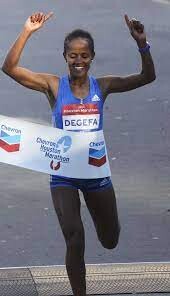
Among the Americans worth watching are Keira D’Amato and Frank Lara. D’Amato comes to Houston with a personal best of 2:22:56 and could challenge the 10-year-old course record of 2:23:14, while Lara – the 2014 Gatorade Boys’ High School Cross Country Runner of the Year out of Strake Jesuit College Prep – returns home to Houston to make his marathon debut.
Dan Green, the first winner in 1972, will serve as honorary starter, along with other members of the race’s Hall of Fame. In addition to marking its 50th anniversary, the race will serve as the first qualifier for the 2024 U.S. Olympic Team Trials – Marathon, with its newly-toughened standards of 2:18 for men and 2:37 for women.
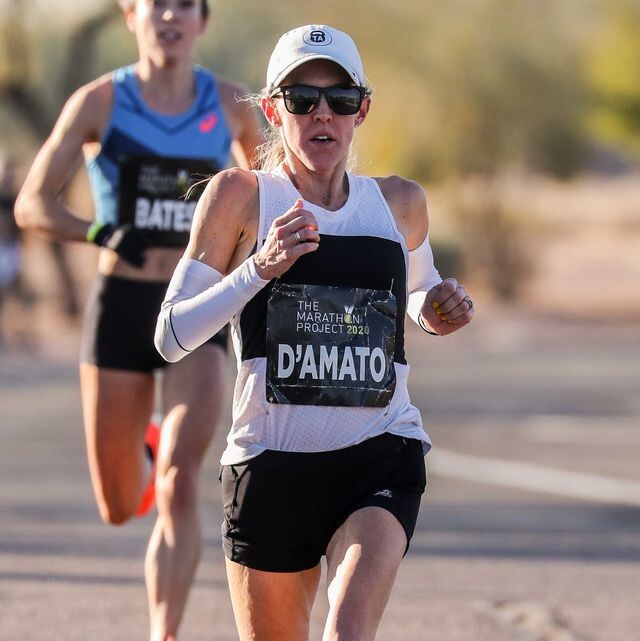
The Aramco Houston Half Marathon, run concurrently with the marathon, will be headlined by Kenya’s Vicoty Chepngeno and American Sara Hall. Chepngeno set her personal best of 1:07:22 in winning the Philadelphia Half Marathon last November, while Hall is the sixth-fastest woman in U.S. history at the half marathon and second-fastest in the marathon. On the men’s side, the fastest time in the field belongs to Shadrack Kimining Korir, who returns to Houston after finishing third here in 2020 in a personal best of 59:27.
This year, the elite fields for the two races will feature athletes representing 17 countries: the U.S., Kenya, Ethiopia, Mexico, Great Britain, Japan, Bulgaria, Guatemala, Peru, Eritrea, South Africa, Morocco, New Zealand, Canada, Israel and Australia.
The Chevron Houston Marathon and Aramco Houston Half Marathon will be broadcast on ABC-13 from 7 a.m.-10 a.m., with a race day recap at 10:35 p.m. Joining ABC-13’s Greg Bailey and Gina Gaston as expert commentator will be Des Linden, the 2018 Boston Marathon winner and 50K world-record holder. Linden made the first of her two U.S. Olympic Marathon teams in Houston in 2012.
by AIMS
Login to leave a comment
Chevron Houston Marathon
The Chevron Houston Marathon offers participants a unique running experience in America's fourth largest city. The fast, flat, scenic single-loop course has been ranked as the "fastest winter marathon" and "second fastest marathon overall" by Ultimate Guide To Marathons. Additionally, with more than 200,000 spectators annually, the Chevron Houston Marathon enjoys tremendous crowd support. Established in 1972, the Houston Marathon...
more...Applications for 2022 Credit Union Cherry Blossom Ten Mile Run and 5K Run-Walk
After an unusual couple of years due to Covid-19 wreaking havoc on the global schedule of road races, the Credit Union Cherry Blossom race committee looks forward to welcoming runners back to Washington DC on April 3, 2022. Their hope is, of course, for a full field of runners to be greeted by blooming cherry blossoms at their peak for the 49th running of the Runner’s Rite of Spring®.
As has been the case for many, many years — except for 2020 when the in-person race was canceled, and 2021 when the race was held in September with strict Covid-19 restrictions — race officials expect demand for the race to exceed the limits on field size mandated by the National Park Service. Thus, entry into the 2022 Credit Union Cherry Blossom Ten Mile and 5K Run-Walk will be conducted by lottery, which will run from Monday, January 3, through 11:59 P.M. on Sunday, January 16, 2022. Lottery results should be posted on the event website (CherryBlossom.org) no later than Wednesday, January 19.
"Normalcy never felt so good," said Event Director Phil Stewart. "We are excited to have a race just like the old days. I am sure runners in the Washington metropolitan area and from around the country are feeling the same way, so we expect intense interest in the lottery."

Individuals who deferred their entry from the cancelled 2020 events will receive Guaranteed Entry Links (GELs) by email shortly before the lottery opens, and will be able to use them to bypass the lottery to gain entry directly into the 2022 Ten Mile Run and 5K Run-Walk. GELs must be used by January 15, the day before the lottery closes.
In addition to the in-person race on April 3, race organizers will also be offering a virtual edition of the runs to coincide with the National Cherry Blossom Festival from March 20 – April 17. Further details about the virtual Ten Mile and 5K Run-Walk can be found here. There will be no lottery for entry into the virtual runs, and registration will be open from January 3 through February 28.
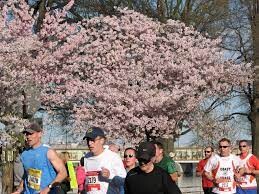
The Credit Union Cherry Blossom Kids’ Run is scheduled to be held on Saturday, April 2. Registration for the Kids’ Run will open on February 1; updated information will be available here.
The 2022 Credit Union Cherry Blossom Runs mark the 21st year of title sponsorship by Credit Union Miracle Day, and the 49th running of the race overall. Since 2002, over $10 million has been raised for the Children’s Miracle Network Hospitals, with $619,000 raised through the 2020 and 2021 virtual runs and the 2021 in-person runs.
About the Credit Union Cherry Blossom Ten Mile:
The Credit Union Cherry Blossom Ten Mile, organized by Cherry Blossom, Inc., a 501c(3) chapter of the Road Runners Club of America, is known as “The Runner’s Rite of Spring®” in the Nation’s Capital. The staging area for the event is on the Washington Monument Grounds, and the course passes in sight of all of the major Washington, DC Memorials. The event serves as a fundraiser for the Children’s Miracle Network Hospitals, a consortium of 170 premier children’s hospitals across North America. About one-third of the funds raised support Washington, DC’s own Children’s National (“Children’s Hospital”). The event also funds the Road Runners Club of America’s “Roads Scholar” program, designed to support up-and-coming U.S. distance running talent.
Credit Union Miracle Day, Inc., a consortium of credit unions and credit union suppliers in partnership with CUNA Mutual Group, PCSU and CO-OP Financial Services, is the title sponsor of the Credit Union Cherry Blossom Ten Mile Run, 5K Run-Walk, and Kids' Run. Presenting sponsors include ASICS, Garmin, MedStar Health; supporting sponsors are E*Trade, Gatorade, Potomac River Running and Suburban Solutions.
The event is a proud member of the PRRO Circuit (PRRO.org), a series of major non-marathon prize money road races in Washington, DC; Spokane, WA; and Utica, NY. The circuit is committed to a drug-free sport and funds drug testing at all circuit events in compliance with the standards of international and U.S. drug testing authorities.
In addition to being sanctioned by USA Track & Field and the Road Runners Club of America, the Credit Union Cherry Blossom Run has earned Gold Level Inspire Certification from the Council for Responsible Sport in recognition of its legacy of commitment to sustainability and thoughtful resource management. To learn more, visit CherryBlossom.org and follow the event on social media @CUCB and #CUCB2021.
About Credit Union Miracle Day:
Credit Union Miracle Day is a partnership of over 100 credit unions, CUSOs and partner organizations united to sponsor the Credit Union Cherry Blossom Ten Mile Run promoting awareness of the credit union difference and benefitting Children’s Miracle Network Hospitals nationwide.
About America's Credit Unions:
Credit unions are financial cooperatives that provide consumers choices for financial services such as checking accounts, investments and loans of all kinds including mortgages. Funds are federally insured, but unlike banks, there are no stockholders at credit unions. Earnings are returned to member-owners in the form of lower loan rates, higher savings rates, low or no-fee products and services. The credit union philosophy of placing members’ needs first is why more than 115 million Americans do their banking at a credit union.
Login to leave a comment
Cherry Blossom Ten Mile Run
The Credit Union Cherry Blossom is known as "The Runner's Rite of Spring" in the Nation's Capital. The staging area for the event is on the Washington Monument Grounds, and the course passes in sight of all of the major Washington, DC Memorials. The event serves as a fundraiser for the Children's Miracle Network Hospitals, a consortium of 170 premier...
more...Last Minute Halloween Costumes For Trail Runners
Need something for your kiddo's trick-or-treating? Mandatory office Halloween soiree? First post-covid social engagement? Try one of these easy-to-assemble trail running Halloween costumes!
Basic Trail Bro: Don a Ciele hat, and rock some bright Goodr's with a confusingly non-technical button-up shirt and jorts if you're feeling spicy. BYOB - a super dank IPA (the hazier, the better) swaddled in a coozy you got in a race swag bag. You're probably from Boulder. Or Flagstaff. (Portland variation: add a rain jacket and a slightly better beer.) Make sure to track your trick-or-treat excursion on Strava and don't stop talking about your podcast.

The Courtney: Throw on a tee-shirt and your comfiest basketball shorts and BYO candy corn. Nachos optional.
The Ultra Ultra Runner: Grab your trekking poles, headlamp, gaiters, neck gaiter, waist-light, UPF hat with sunshade, taped-seam windbreaker, sunglasses, clear glasses, 12-liter vest, hip-belt, flasks, bladder, body glide, ramen noodles, gels, spare socks, spare shoes, space blanket, sunscreen, arm sleeves and wind pants. Though you may be dressed like you're about to run the Marathon Des Sables, you could also just be out for a casual jog. You're a human drop-bag: ready for anything.
The Crewmate: Same as above, but carry everything around in your arms the entire night and try to hand everybody you see quesadillas and Skratch.
The Emelie: Grab your S/O and dress entirely in S/Lab, or skimo suits with a babybjorn. Still be faster than everyone.
The Rookie Trail Racer: Grab some long shorts, a sleeveless Nike shirt, and blast the tunes in your Beats By Dre headphones (around your neck, so everyone can hear). Forget the hydration pack, just bring a good ol' Gatorade bottle and be sure to ask everyone "How many miles is 25k????".
The Harvey: Just circle your block 354.2 times while trick-or-treating
Sexy Minimalist Trail Runner: Just split shorts and a handheld. That's it.
The Influencer: This costume is #Sponsored. Flip up the brim of your colorful hat, and snap a pic with your favorite beet-based energy bar or isolated cricket protein, preferably while gazing out at the ocean, or from a summit. Keep your phone and significant other at the ready for any potential photo ops. Bonus points if you have a cute dog who knows a TikTok dance. Make sure all product logos are visible at all times.
Sexy IPOS: Nothing but a gravel bike and KT tape.
The Media Mogul: POV: Your YouTube channel is just about to go viral. Grab your go-pro and lace up your trail runners, because you're about to get a lot of B-roll. Wear a Sony TX90000 BD around your neck, and be sure to periodically change lenses for no particular reason. You're a human steady-cam who'll do anything to get the shot.
The Local Legend: To embody the low-key vibe of the frustratingly-fast unsponsored hometown hero, pull on a of worn-out trail runners and tattered shorts. Wait, is that a Team USA Shirt? Who is this runner? How many FKT's do they have? OOOPS! Someone just stole your CR!
by Trail Runner Magazine
Login to leave a comment
Credit Union Cherry Blossom Ten Mile Run Announces Title Sponsorship Extension for Credit Union Miracle Day, Inc.
Organizers of the Credit Union Cherry Blossom Ten Mile Run announced today that Credit Union Miracle Day, Inc. has renewed its title sponsorship of “The Runner’s Rite of Spring®” through 2025, extending a relationship that began in 2002. The 49th running of the race will take place on April 3, 2022.
In making the joint announcement, Race Director Phil Stewart said: "By extending their sponsorship through the 2025 race, Credit Union Miracle Day and its partners, PSCU, CO-OP Financial Services and CUNA Mutual Group, have shown their continuing commitment to serving all of the runners in the Washington, DC Metropolitan area and beyond. It is truly an example of the Credit Union difference that we have enjoyed all the way back to 2002, as have the Children's Miracle Network Hospitals, which have received over $10 million dollars in support over this time."
“The Cherry Blossom Ten Mile Run is an iconic Washington tradition, and we are thrilled that credit unions’ longtime partnership as the title sponsor will continue,” said John Bratsakis, CUMD Chair and President/CEO of the MD|DC Credit Union Association. “For 20 years the race has helped raise funds for our industry’s charity of choice, Children’s Miracle Network Hospitals, and raise awareness about the good credit unions do for their local communities. We look forward to April when hundreds of volunteers and runners, representing credit unions from across the country, will come together again to support children and their families being treated at CMN Hospitals.”

One common thread of the ongoing relationship between the Credit Union Cherry Blossom Ten Mile Run, 5K Run-Walk, Kids’ Run and Credit Union Miracle Day, Inc. involves the very robust fundraising effort for Children’s Miracle Network Hospitals (CMN) by race participants and the sponsoring credit unions and credit union partners. In particular, charity race entrants avoid the lottery by committing to raise at least $500 for the cause. In addition, for the first time, 2021 registrants were given the opportunity to make a donation directly to CMN when entering; they responded generously with an additional $25,000 raised. Details about the 2022 charity race entry procedure will be announced in December shortly before the opening of the entry lottery on Monday, January 3, 2022. (The entry lottery will close at midnight on Sunday, January 16.)
Since 2002, the Credit Union Cherry Blossom Ten Mile Run and 5K Run-Walk have raised over $10 million for Children’s Miracle Network Hospitals, with $180,059 of that total being raised this past year.
About the Credit Union Cherry Blossom Ten Mile:
The Credit Union Cherry Blossom Ten Mile, organized by Cherry Blossom, Inc., a 501c(3) chapter of the Road Runners Club of America, is known as “The Runner’s Rite of Spring®” in the Nation’s Capital. The staging area for the event is on the Washington Monument Grounds, and the course passes in sight of all of the major Washington, DC Memorials. The event serves as a fundraiser for the Children’s Miracle Network Hospitals, a consortium of 170 premier children’s hospitals across North America. About one-third of the funds raised support Washington, DC’s own Children’s National (“Children’s Hospital”). The event also funds the Road Runners Club of America’s “Roads Scholar” program, designed to support up-and-coming U.S. distance running talent.
Credit Union Miracle Day, Inc., a consortium of credit unions and credit union suppliers in partnership with CUNA Mutual Group, PCSU and CO-OP Financial Services, is the title sponsor of the Credit Union Cherry Blossom Ten Mile Run, 5K Run-Walk, and Kids' Run. Presenting sponsors include ASICS, Garmin, MedStar Health; supporting sponsors are E*Trade, Gatorade, Potomac River Running and Suburban Solutions.
The event is a proud member of the PRRO Circuit (PRRO.org), a series of major non-marathon prize money road races in Washington, DC; Spokane, WA; and Utica, NY. The circuit is committed to a drug-free sport and funds drug testing at all circuit events in compliance with the standards of international and U.S. drug testing authorities.
In addition to being sanctioned by USA Track & Field and the Road Runners Club of America, the Credit Union Cherry Blossom Run has earned Gold Level Inspire Certification from the Council for Responsible Sport in recognition of its legacy of commitment to sustainability and thoughtful resource management. To learn more, visit CherryBlossom.org and follow the event on social media @CUCB and #CUCB2021.
About Credit Union Miracle Day:
Credit Union Miracle Day is a partnership of over 100 credit unions, CUSOs and partner organizations united to sponsor the Credit Union Cherry Blossom Ten Mile Run promoting awareness of the credit union difference and benefitting Children’s Miracle Network Hospitals nationwide.
About America's Credit Unions:
Credit unions are financial cooperatives that provide consumers choices for financial services such as checking accounts, investments and loans of all kinds including mortgages. Funds are federally insured, but unlike banks, there are no stockholders at credit unions. Earnings are returned to member-owners in the form of lower loan rates, higher savings rates, low or no-fee products and services. The credit union philosophy of placing members’ needs first is why more than 115 million Americans do their banking at a credit union.
Login to leave a comment
Cherry Blossom Ten Mile Run
The Credit Union Cherry Blossom is known as "The Runner's Rite of Spring" in the Nation's Capital. The staging area for the event is on the Washington Monument Grounds, and the course passes in sight of all of the major Washington, DC Memorials. The event serves as a fundraiser for the Children's Miracle Network Hospitals, a consortium of 170 premier...
more...What are the best foods I should be eating during the week before and the morning of the Marathon race?
It’s a great question and a runners diet in the week before a marathon is a very important part of success on race day.
Marathon Rule #1: Never Try Anything New On Race Day
In addition to clothing, pacing, and training, this rule also applies to your nutrition strategy in the five days leading up to the race.
You should not experiment with any new foods or venture too far from your normal diet. It’s easy to get nervous in the last few days of your taper and be persuaded by a new product a friend recommends or something you see at the race expo.
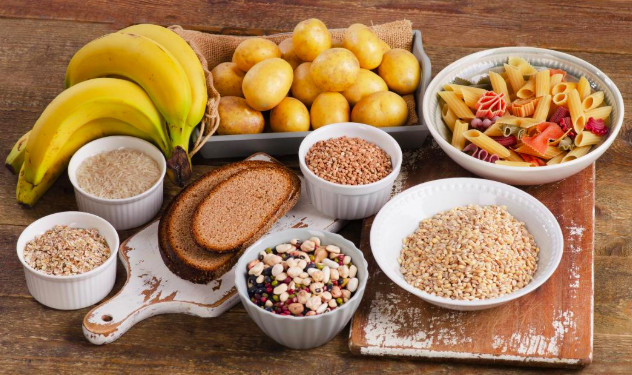
However, if you haven’t tried it before, especially at marathon pace or during a long run, don’t be tempted.
It’s also important that you experiment with the types, quantity, and timing of the food you eat before you run. Some runners have very weak stomachs and need up to three hours to digest food before they can run comfortably. Other runners can eat within an hour of a hard run with no adverse side effects.
It is important to figure out which type of runner you are during training and to take this information into account when you plan for the race morning.
Experiment with your pre-race meal before race day. Your last two long runs or difficult marathon paced workouts should be similar to race simulations. Try wearing the clothes you think you’ll wear on race day, the shoes, socks, and everything you can think of.

Eat the same pre-race meal you’re planning for the night before the race and when you wake up in the morning, eat the same breakfast you plan on having.
This will give you time to change things up before race day if you find it doesn’t work for you.
5 Days From The Race
Begin to increase your total carbohydrate intake by adding in more pastas and starches (low glycemic index foods) to your diet throughout the week. The old idea of depleting your carbohydrate stores the week before the race and binging on carbohydrates the last few days in an attempt to trick your body into overcompensating and storing more fuel is outdated.
Ensuring that you consume a higher percentage of your total daily calories as carbohydrates is sufficient. Remember, you’re not running as much as you have been, so eating too much more than you normally do will make you feel bloated and lethargic.
At this point in the nutrition cycle, relax and don’t go overboard. Examples: Sweet potatoes, pastas, baked potatoes, brown rice, sandwiches, bagels with peanut butter, quinoa, whole grains, oatmeal
48 Hours Before The Race
Your last big meal should be two nights before the race. It will give your body ample time to digest anything you eat so you won’t feel bloated on the morning of the race. I’ve seen too many people gorge on pasta the night before the race only to reach the starting line the next day stuffed and lethargic.
Have you ever tried to run the morning after Thanksgiving?
If you have, you know the bloated feeling I’m talking about, and if you haven’t, I don’t recommend scheduling a tough workout. Example: The overwhelming favorite is pasta for most people, but other options include rice, potatoes, and pizza.
24 Hours And Before
Eat normal balanced meals like you would normally do on any training day. Make sure you drink plenty of liquids all day long, especially electrolyte fluids such as Gatorade or use electrolyte tabs such as Nuun.
It helps if you carry a water bottle along with you throughout the day to remind yourself to drink.
Your main meals should still be in the form of low glycemic to medium glycemic index foods. Ideally, you won’t be too active on the day before the race, so you may feel full quickly. That is fine, you shouldn’t try to stuff yourself. Good choices are: Sweet potatoes, pastas, baked potatoes, white rice, bagel with banana
18 Hours Before The Race
Start eating small meals every 2-3 hours, but after lunch, cut out red meat, fried foods, dairy products, fats, nuts, and roughage. You should only be consuming light, digestible foods like energy bars, bread, and small sandwiches.
Keep drinking water and electrolyte beverages and avoid salty and high fiber foods. Examples include: energy bars, bread, cereal, and small sandwiches.
4 Hours And Less
You should be up early enough before the race to eat a small breakfast with plenty of time to start digestion before the gun goes off. If you need 3 hours to eat a small meal before running, then you need to get up at least three hours before the race to get in a light breakfast.
You’ll want to drink mostly water (unless you know temperatures at the race are going to be warm), with some electrolyte fluid. Don’t try to get all your fluids down by chugging your water bottle.
Drink small, regular sized amounts. Room temperature water is absorbed quicker than warm or cold water. I estimate that you’ll need 6 oz. every hour or 8 oz. every hour on hot days.
Lots of runners will take a GU or energy gel right before the gun goes off. I only recommend this if you have a weak stomach and you haven’t eaten in 3 hours. If you’re able to stomach more solid foods 60-90 minutes before the race, this is preferable.
Basically, energy gels are mostly simple sugars and you’ll be consuming another 2 or 3 gels before the race is over. Even for the biggest sweet tooth this is a lot of sugar.
My favorite breakfast – oatmeal with banana and coffee. Other options include bagel with peanut butter, toast with honey, or dry cereal.
At this point, you should have a good idea of what works best for you pre hard or long run, so stick with what works.
by Coach Jeff
Login to leave a comment
Beat The Burn With These Tips for Running in Heat and Humidity
With summer in full effect, you may have noticed that your runs have begun to feel different. As in...why does my easy pace now feel like I'm running in mud and I'm working so hard to get nowhere fast?
Summer running can make it feel like you need gills rather than lungs. If you are doing heart rate training, good luck. The warmer the weather, the harder your body has to work to keep you cool. Your heart rate will be higher and breathing more difficult. The reason why is your body is directing blood to the skin to cool you off through sweating. That means there's less blood available to transport oxygen to your muscles. What would usually be an easy-paced run feels more like a max all-out effort.
If you don't like running in the heat or humidity, you don't need to retreat inside for the next few months. There are plenty of things to try to make it a little bit more comfortable. And if you do have to hit the treadmill, no biggie. Do what works for you.
Less Is Best
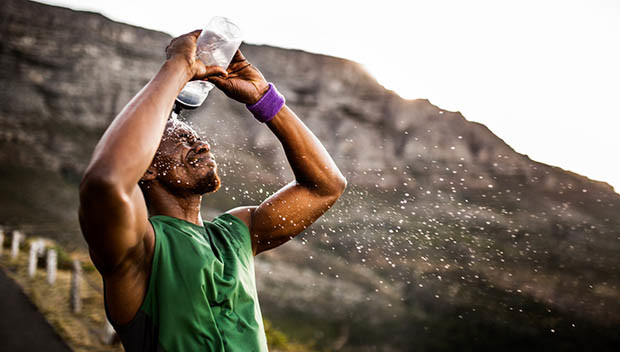
Wear as little clothing as legally possible. If you are the sports bra only or shirtless kind of person, do that. Stick to light-colored, loose, wicking materials. Now is not the time for wearing all black or cotton. No matter what fabric you are wearing, Body Glide can be a life saver for preventing chafing.
Don't Forget the Sunscreen
Even if it's early morning or partly cloudy, protect yourself from skin cancer and other skin damage by using sunscreen before every run. Just be sure it's sweat proof. No runner needs to feel the pain of sunscreen and sweat in their eyes.
Wear a Hat or Visor
A hat or visor will not only protect your skin from the sun, but it will also help to keep your face shaded. Soaking the hat or visor in cold water before heading out the door can help to lower body temp and feel cooler as well.
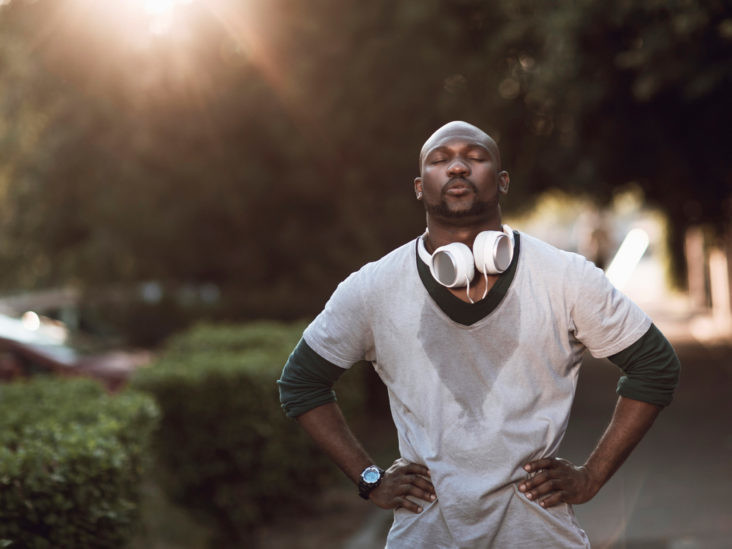
Start Slow and End Slow
A warm up prior to a run should always be done (try one of these dynamic warm ups!), but even more so when the temperatures are high. You want to gradually increase your heart rate rather than starting out too fast. Same thing for the end of the run. Do a gradual slow-down that includes some time for a slow walk. It will help regulate your heart rate and cool your body a bit.
Run Early
Morning temperatures are usually the coolest during the summer. It also will give you a break from the strongest hours of sunlight. The humidity can sometimes be high in the morning, but at least you won't have the blazing sun on you. And you may even get the treat of a gorgeous sunrise. You want to be sure to avoid the middle part of the day, which will be the hottest.
Run Late
If you aren't a morning person, wait until the late evening when the sun is starting to set. The temps will be better than mid-day, and the humidity may dip, too. Just like running early, you'll probably get the treat of a gorgeous sunset.
Slow Down
Your body has to work extra hard in the heat and humidity running at a "normal" pace, and when you try to pick up the pace, even more so. Run for time and effort rather than distance and pace. Save the hard pace workouts for a day when the temp and humidity are lower or when you can go early in the morning when the day is coolest.
Hit the Trails
When the temperatures rise, asphalt and concrete absorb heat and radiate it back into your face. Trail running usually offers shade from trees unless you are going above the tree line. It also forces you to slow down. Bonus if the trail has the perfect place to jump in a lake or river post run!
Drink up
If you are running more than 75 to 90 minutes, carry a hand-held water bottle, hydration belt or hydration vest with you. Or stash water bottles along your intended route ahead of time if you don't like carrying anything in your hands. For an extra dose of cooling relief, freeze your water bottles before your run. By the time you need it, enough ice has melted for you to drink up some icy cold water. Planning your route along accessible drinking fountains is not a bad idea either. You may also opt for adding electrolytes to your water to help balance the extra sodium and potassium lost through increased sweating.
Ice It
Ultraruners use this trick all the time while racing in the heat. Stuff a bandana full of ice and tie it so the ice is at the back of your neck. Or fill up your hat with ice before putting it on your head. As the ice melts, it will keep you cool.
Run With Friends
Just like running on frigid cold mornings in January, having friends to commiserate with while you slog through the heat makes it more tolerable. If you are joining a larger group run, there's high probability that water, Gatorade or fuel will be out on the route. You won't have to worry about having enough water with you.
Take It Inside
If it's really hot and humid and your only option to run is during the hottest part of the day, take it inside to the treadmill, preferably to a treadmill in an air-conditioned room.
by Angela Bekkala
Login to leave a comment
American and World Record Holder Keira D’Amato Confirmed For 2021 Credit Union Cherry Blossom Ten Mile
World Record holder Keira D’Amato will be wearing a third hat throughout the upcoming Credit Union Cherry Blossom race weekend — that of race committee member. But her clear focus will be on improving upon the record setting 10-mile time of 51:23 that she ran at the Up Dawg Ten Miler in Washington DC’s Anacostia Park in a women’s only invitational race. The event was organized by the Credit Union Cherry Blossom race committee members last November at a time when mass participation road races had ceased and had been replaced by a tiny number of elite only “micro-events.” Keira’s time was ratified as the American record by USATF last December and as the World Record by the Association of Road Racing Statisticians in July.
On September 12th, D’Amato will be joined on the starting line by many of the best American female distance runners as they race for the 2021 USATF 10 Mile Championships Presented by Toyota. The women will start at 7:18 a.m., while the elite men’s field will be sent off at 7:30 a.m. The early start for women removes any questions of pacing or other assistance by men and qualifies the winner for a single-sex women’s only record. When the U.S. men take off 12 minutes later, they, too, will be in pursuit of the 2021 USATF 10 Mile Championships as well as the men’s American 10 mile record of 45:54 set by Galen Rupp last fall. Rupp’s time bettered the American Record of 46:13 set by Greg Meyer at the 1983 Cherry Blossom. (Updated entries to both the men’s and women’s fields will be provided in mid-August and in the week leading up to the race.)
The prize pool for the 2021 USATF 10 Mile Championships totals $26,000 for men and women. An additional $10,000 bonus will be awarded if a man or woman breaks the American Records of sub-45:54 and sub-51:23 respectively (the bonus will be split if both the first American man and first American woman break the record). International elite runners will be part of the field competing for an additional $20,000 in prize money, and American runners can double-dip on American and International prize money if they finish in the top-10 overall. Should a World Record be set, there will be an additional $10,000 bonus paid (split if both the winning male and female break the record).
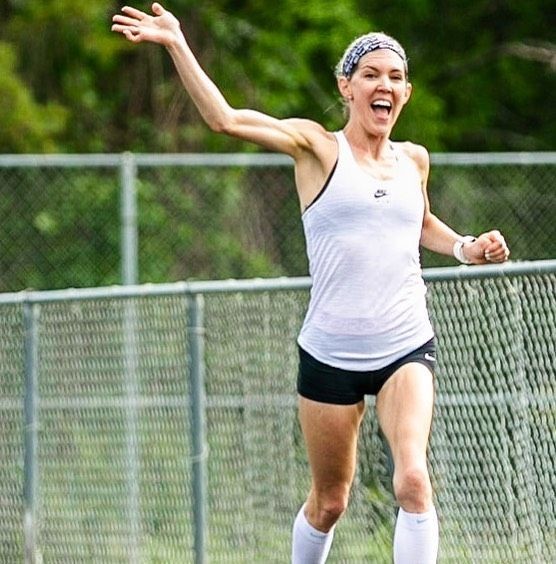
In other news, race organizers have confirmed that Metro will be providing the event with a special dispensation by opening at 5:00 a.m. on race day, three hours earlier than the usual Sunday morning opening time. This will make taking Metro to the event possible (riders will be required to pay the usual travel costs).
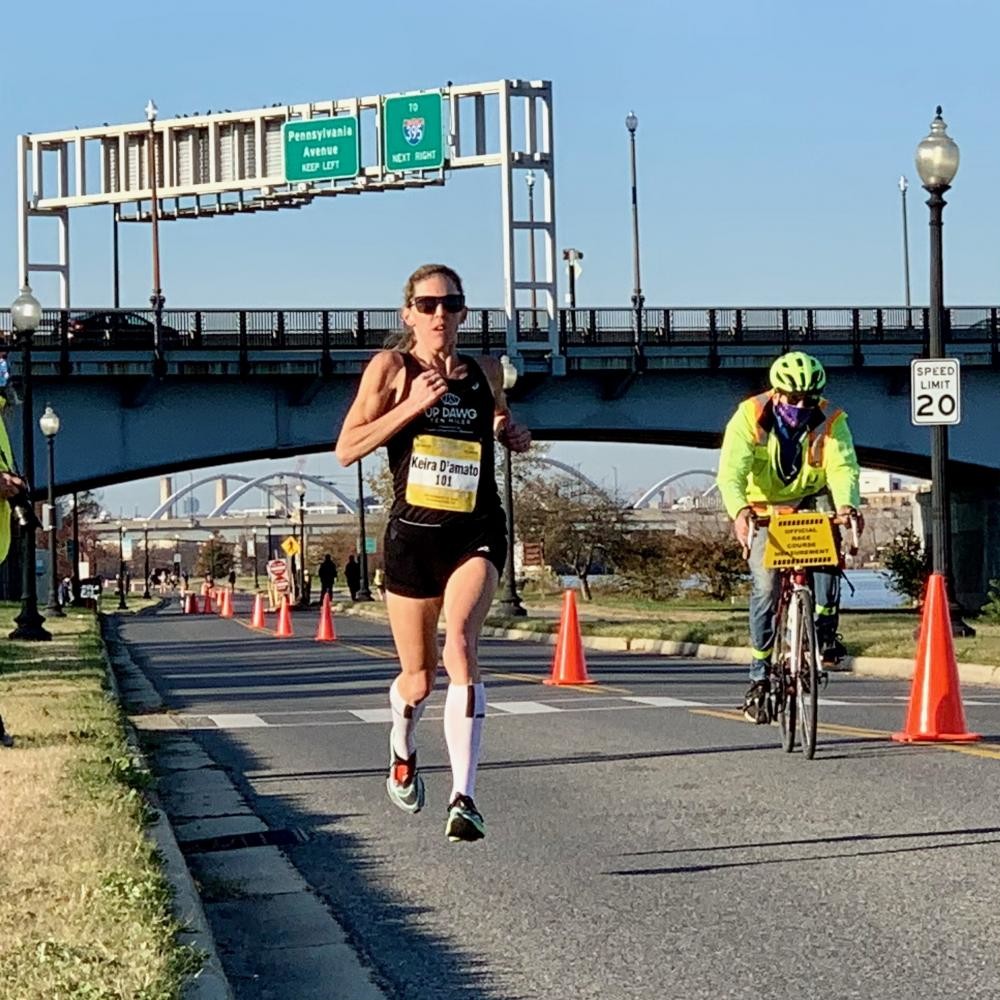
“Metro has truly provided a gift to all our runners and volunteers by initiating Sunday operations at 5 a.m., making it the best way to travel to and from the staging area on the Washington Monument Grounds,” said event director Phil Stewart. “We greatly appreciate Metro’s support to the DC-area community as everyone emerges from the pandemic. Metro has truly opened doors and made our lives better.”
Finally, registration for the 2021 Credit Union Cherry Blossom Ten Mile and 5K Run-Walk will close on August 15th.
The 2021 Credit Union Cherry Blossom Runs mark the 20th year of title sponsorship by Credit Union Miracle Day. Since 2002, over $10 million has been raised for the Children’s Miracle Network Hospitals, including $439,000 in 2020. Of that $439,000, $66,000 came from runners donating their entry fees instead of asking for a refund when race weekend in our Nation’s Capital was wiped out by Covid-19.
About the Credit Union Cherry Blossom Ten Mile:
The Credit Union Cherry Blossom Ten Mile, organized by Cherry Blossom, Inc., a 501c(3) chapter of the Road Runners Club of America, is known as “The Runner’s Rite of Spring®” in the Nation’s Capital. The staging area for the event is on the Washington Monument Grounds, and the course passes in sight of all of the major Washington, DC Memorials. The event serves as a fundraiser for the Children’s Miracle Network Hospitals, a consortium of 170 premier children’s hospitals across North America. About one-third of the funds raised support Washington, DC’s own Children’s National (“Children’s Hospital”). The event also funds the Road Runners Club of America’s “Roads Scholar” program, designed to support up-and-coming U.S. distance running talent.
Credit Union Miracle Day, Inc., a consortium of credit unions and credit union suppliers in partnership with CUNA Mutual Group, PCSU and CO-OP Financial Services, is the title sponsor of the Credit Union Cherry Blossom Ten Mile Run, 5K Run-Walk and Kids’ Run. Additional sponsorship comes from ASICS, Garmin Gatorade, Medstar Health and Potomac River Running.
The event is a proud member of the PRRO Circuit (PRRO.org), a series of major non-marathon prize money road races in Tampa, FL; Washington, DC; Spokane, WA; and Utica, NY. The circuit is committed to a drug-free sport and funds drug testing at all circuit events in compliance with the standards of international and U.S. drug testing authorities.
In addition to being sanctioned by USA Track & Field and the Road Runners Club of America, the Credit Union Cherry Blossom Run has earned Gold Level Inspire Certification from the Council for Responsible Sport in recognition of its legacy of commitment to sustainability and thoughtful resource management. To learn more, visit www.cherryblossom.org and follow the event on social media @CUCB and #CUCB2021.
by Running USA
Login to leave a comment
Cherry Blossom Ten Mile Run
The Credit Union Cherry Blossom is known as "The Runner's Rite of Spring" in the Nation's Capital. The staging area for the event is on the Washington Monument Grounds, and the course passes in sight of all of the major Washington, DC Memorials. The event serves as a fundraiser for the Children's Miracle Network Hospitals, a consortium of 170 premier...
more...Sydney McLaughlin wants gold at Olympics
Given its unique demands on technique, endurance, and speed, many consider the 400m hurdles one of the most challenging track and field events. After exploding out of the starting blocks, athletes must sprint 400m while propelling themselves up and over 10 hurdles positioned evenly around the track.
At 21 years old, Sydney McLaughlin is already the fastest woman in the history of the event as she begins her Olympic campaign on Saturday morning in Tokyo.
McLaughlin earned the world record at the US Olympic trials in Eugene, Oregon in June. Blazing hot temperatures (topping off at nearly 110 degrees Fahrenheit) resulted in a five-hour delay to one of the most anticipated races of the meet, where McLaughlin faced 2016 Olympic champion Dalilah Muhammad, the previous record-holder. But the wait was worth it for McLaughlin. She crossed the finish line in 51.90 seconds, bettering Muhammad’s record (set at the 2019 World Championships) by 0.26 seconds. Realizing her momentous accomplishment, McLaughlin’s mouth gaped as she crouched on her knees.
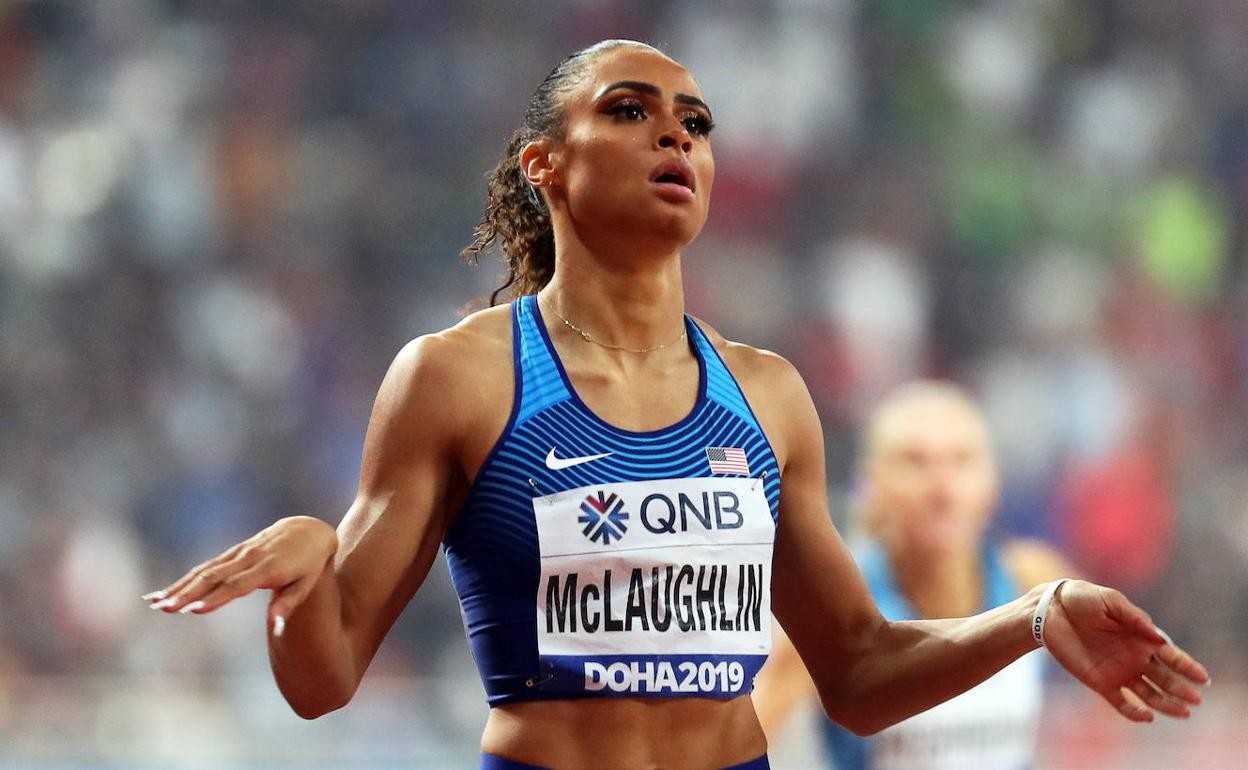
“I felt immediate excitement and overall gratefulness,” she said. “I owe it all to God, my family and my team. I’m still in disbelief, but it’s truly just faith, trusting the process, and seeing my hard work along with the gift of God being put into action.”
McLaughlin, who also holds numerous age group world records and was a two-time recipient of the Gatorade’s National Female Athlete of the Year award, will now attempt to secure another title: Olympic gold medalist. She will have the opportunity to do so in a rematch with Muhammad scheduled for 4 August. It’s a race both athletes are eagerly awaiting.
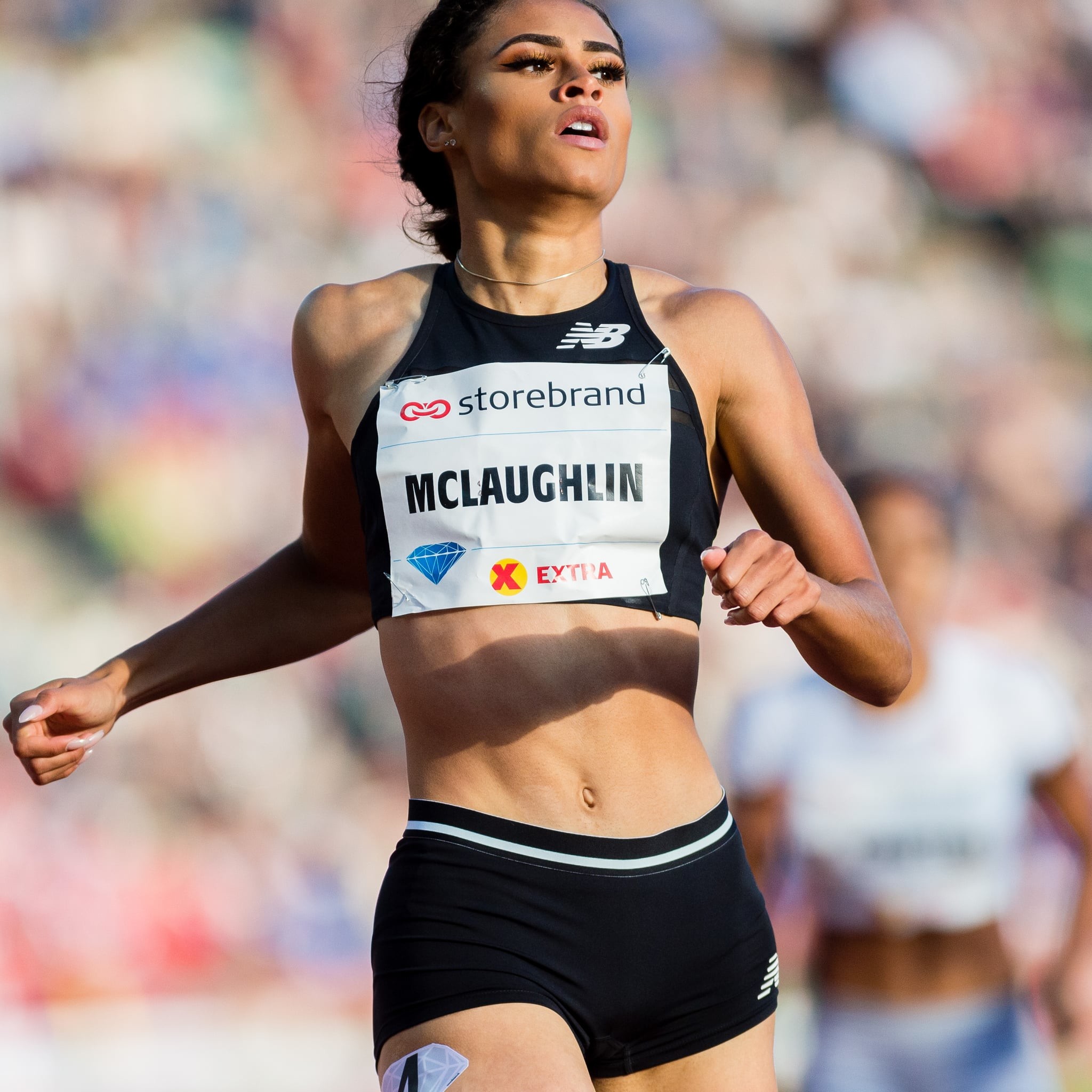
After congratulating McLaughlin on her record-breaking win, Muhammad said: “It’s going to be a battle in Tokyo for sure.”
The Tokyo Games mark McLaughlin’s second Olympic appearance. In 2016, at 16 years old, she became the youngest athlete to make the US Track and Field Olympic team since 1972.
“It’s an honor in and of itself to be able to go to the Olympics for a second time. I am so excited and grateful, and I’m definitely going to continue to focus on training and being the best I can be,” said McLaughlin, who comes from an athletic family. Her mother ran in high school, her father was a semi-finalist at the 1984 Olympic trials in the 400m, and her brother, Taylor, finished second at the 2016 Under-20 World Championships in the 400m hurdles.
In Rio de Janeiro, McLaughlin’s Olympic journey stopped in the semi-finals, where she placed fifth. This year, she is five years older, stronger and wiser, and the pandemic helped her gain a renewed focus.
“Those first couple of months being stuck in the house, I was like, ‘Who am I doing this for?’” she said.
Her outlook shifted, however, as she became more involved in her faith.
“My goals are different now,” she said. “A lot of my life was trying to prove something, which is an endless cycle that will never fulfill you. My gifts are not to glorify myself. When I stand on the podium, I give the glory to God.”
Even with this newfound meaning, training in Los Angeles during the pandemic presented its own challenges. When the city shut down, McLaughlin was forced to get creative with her workouts, which meant sneaking onto tracks and running on highway medians. She also traveled with her team to Arizona to get a month’s worth of consistent training. Despite this unconventional approach, the delayed Olympic games worked in her favor.
“The extra time for me was a blessing,” McLaughlin said.
The additional year enabled McLaughlin to make key changes, including switching to coach Bobby Kersee, the husband and former coach of Olympic gold medalist Jackie Joyner-Kersee. Kersee also trained McLaughlin’s previous coach, Olympic gold medalist Joanna Hayes, and Florence Griffith Joyner, who holds world records in the 200m and 100m races and is touted as the fastest woman of all time.
by Stephanie Hoppe
Login to leave a comment
Tokyo 2020 Olympic Games
Fifty-six years after having organized the Olympic Games, the Japanese capital will be hosting a Summer edition for the second time, originally scheduled from July 24 to August 9, 2020, the games were postponed due to coronavirus outbreak, the postponed Tokyo Olympics will be held from July 23 to August 8 in 2021, according to the International Olympic Committee decision. ...
more...Gatorade’s New Sweat Patch Can Help Your Nutrition and Hydration Issues During Your Run
We tested this stick-on wearable that measures your sweat rate and sodium levels to see if it can help you optimize performance.
Knowing your sweat rate and sodium loss during a workout can help you customize your pre- and post-run fueling, as well as what you consume on the run. But until now, that’s been a bit of a guessing game.
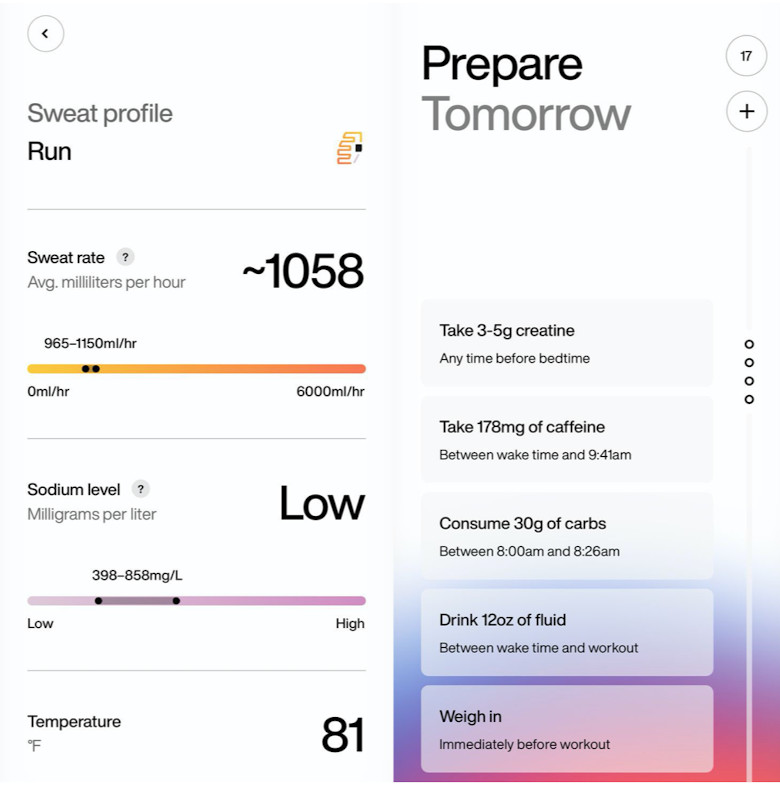
Most runners figure out their hydration strategy via trial and error, because everyone’s body reacts so uniquely to workout intensity and environmental conditions. “In the same distance race in the same environment, some athletes lose less than 14 ounces an hour and some athletes lose 85 ounce an hour,” explains Matt Pahnke, a principal scientist at the Gatorade Sports Science Institute.
But Gatorade’s new Gx sweat patch ($24.99 for two) aims to take the guesswork out of hydrating. It’s the first at-home device that allows you to test your fluid loss (the total amount of fluid you lose during a workout), sweat rate (the amount you sweat over the course of one hour), and sodium loss (the amount of sodium you lose through your sweat) in real-time.
This kind of advice is so important because dehydration can decrease your endurance and increase fatigue, a recent study published in Frontiers in Physiology found; it also leads to a higher rate of perceived exertion, according to older research. Meanwhile, electrolytes are crucial to fluid balance and muscle contraction and relaxation.
Slap the patch on your inner forearm—the spot that’s most representative of your whole body when it comes to sweat, says Pahnke—before you run. As you sweat, you’ll see the orange line start to fill up—that’s to calculate your sweat rate; the purple line represents your electrolyte losses. Use your phone camera to scan the patch into the Gx app afterward, and the app will translate your data into sweat profiles that can inform future workouts and deliver personalized insights that can help you optimize your performance.
“This isn’t something you want to do every time you go for a run,” explains Pahnke. “What we recommend is that athletes develop at least four profiles: two different exercise intensities, two different environments.” Think: lower intensity workouts in cool and warmer environments, plus higher intensity workouts in cool and warmer environments. Then, when you schedule a future run in the app, it can provide recommendations based on a similar duration, intensity, and environment you’ve already tracked.
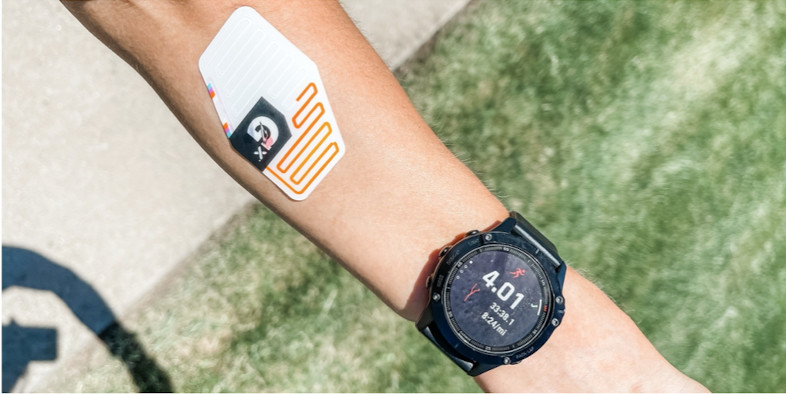
For example, during a recent 4-mile, moderate-intensity run on an 81-degree day, I lost 1,058 ml/hr. My sodium level (how much salt is in my sweat) was low, between 398 and 858 mg/L. The problem: The app doesn’t really explain what that means. What it does, instead, is use that information to provide guidance for future runs: When I scheduled an hour-long run for the following morning, the app suggested I consume 30 grams of carbs and hydrate with 12 ounces of fluid pre-workout, then consume 20 to 45 grams of carbs during my workout, and consume 18 grams of protein post-workout (it also doesn’t explain how it generated those specific numbers).
The catch with the patch and the app is they’re only as useful as you make them—to get the full benefits, you need to be scheduling your workouts, checking out the pre-run plan and checking back in post-run. “The more information you put into it, the stronger the advice is going to be,” says Pahnke. That may work well for some runners, but it may seem like too much work for others.
While the data makes it seem like an exact science, think of it as more of a guideline, says Tamara Hew-Butler, Ph.D., an associate professor of exercise and sports science at Wayne State University. “The move toward measuring fluid and electrolyte loss is a good start, but it should never be followed as an exact rule,” she explains. “You also have to listen to what your body’s telling you.”
In studying hyponatremia—a condition where sodium levels in the blood are lower than normal—Hew-Butler says she looks at the number, but treats the symptoms (in the case of low sodium, that would mean nausea, headache, confusion, and fatigue; extreme thirst, less frequent urination, dark urine, fatigue, dizziness, and confusion are all hallmarks of dehydration). “You have to look at wearable data the same way,” she says. Translation: You don’t need a patch to tell you you’re thirsty. “Data always has to be taken into context, context being how you feel in the moment.”
Because here’s the thing: If I eat a good breakfast, I know that I don’t need 20 to 45 grams of carbs in an hour-long run; I likely wouldn’t hydrate on that run, either, unless it was in scorching hot temperatures. “If you’re doing an average run that lasts less than an hour, the basic rule is you don’t need to carry anything with you—as long as you have fluids and a variety of foods available afterwards,” says Hew-Butler.
If you’re planning to run more than 60 minutes, it’s smart to bring fuel and water with you. How much you bring could be inspired by what your Gatorade sweat profile tells you (in my case, 36 ounces per hour), but you shouldn’t force yourself to consume that on the go if your body isn’t craving it. Aiming to consume 20 to 45 grams of carbs per hour on longer runs is also a good idea, but only if you know what works for you and your gut.
It’s tempting to get caught up in exact numbers and data, but, when it comes to hydration and fueling, don’t focus too much on the numbers, says Hew-Butler. “Your body signals what’s happening inside of you, and you need to respond to what your body’s telling you instead of what a watch, an app, or an algorithm is recommending.”
The bottom line: If you struggle with nutrition and hydration issues during or after running, the Gx sweat patch may help you dial in your fueling—just be prepared to input as much data as possible to get the most out of the service and remember to still stay tuned in to your body’s signals. If you don’t have issues, it’s likely best to channel your energy into your training plan and continue listening to your body.
by Runner’s World
Login to leave a comment
We miss the old Hayward Field stadium but the new $270 million stadium is amazing
After much anticipation, the newly renovated Hayward Field finally opened for business this spring, and athletes and track fans alike were in awe at the jaw-dropping $270 million dollar facility. Unless you’ve been fortunate enough to visit the stadium, however, you’ve likely only gotten to see it from the outside.
The inside of the stadium features a 270m oval track with a 140m straight for sprints. 23 feet below ground is the area known as the Vault where field event athletes can train during the winter months, which includes a pole vault pit, long jump pit, and a netted section for all the throws. To refuel after their workouts, athletes can head to the Waffle Shop (a tribute to the waffles shoe developed by Bill Bowerman), where they can get healthy snacks and meals or rehydrate at the Gatorade machines, and can even attend cooking classes to help them stay healthy when they’re at home.

Another unique aspect of the facility is Razor Bill’s Barbershop, where athletes can get their hair done, or even get their nails, hands and feet taken care of at the manicure/pedicure station. Finally, the state-of-the-art team lounge is a place where athletes can relax and hang out, and features ping pong tables and basketball nets where they can have some fun and unwind.
What many will notice above all else throughout the tour is the artwork featured in every room of the facility, which pays homage to Ducks and to the program’s history. This new stadium is a far cry from the historic Hayward Field the track world came to know and love, but the new facility rivals that major stadiums found in Europe and around the world.
Login to leave a comment
Missouri man returns for another ‘Grandma’s Double,’ running the course twice in one day
The first 25-26 miles are “the easy ones,” said Eric Strand, 60. “Then you have the benefit of aid stations, the crowd and fellow runners to commiserate with on the way back. It’s a fun way to get a training run in.”
Before runners hit the starting line, before volunteers set up aid stations and before the sun rises, Eric Strand is running Grandma’s Marathon.
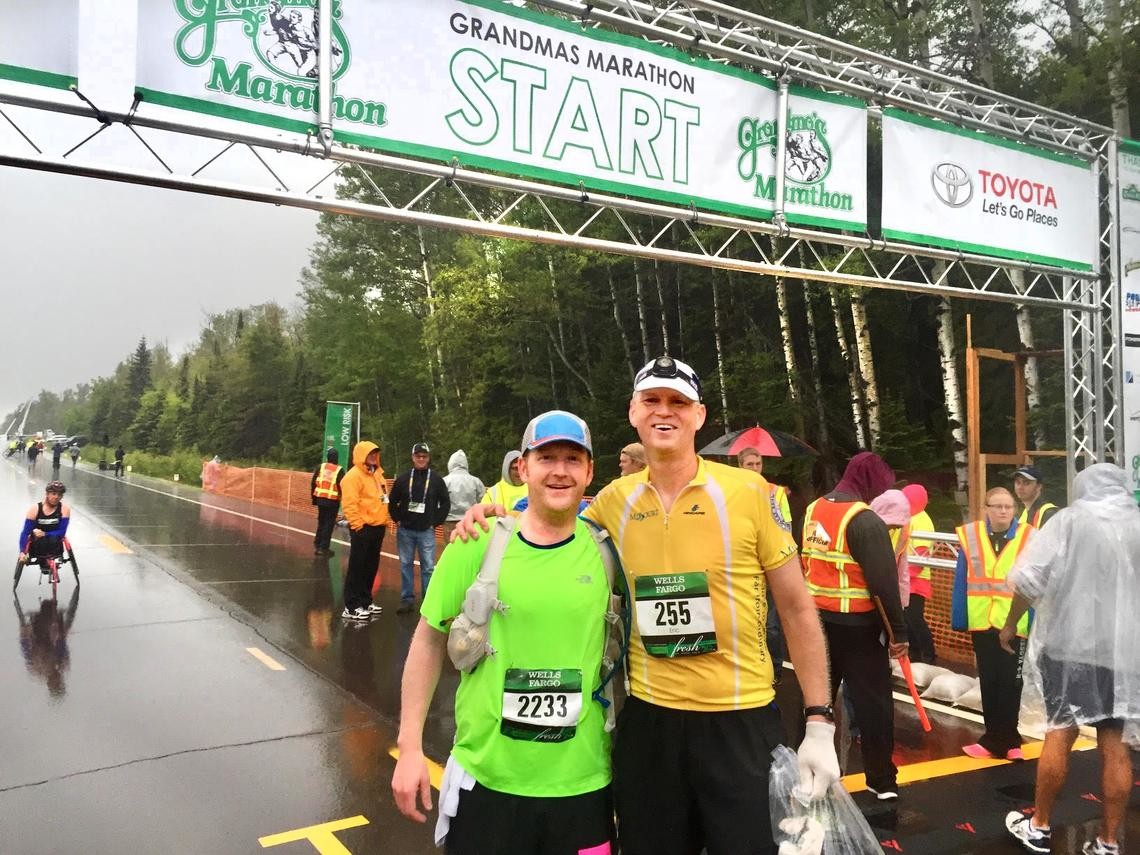
Backwards. And then back again.
The “Grandma’s Double” is a long-running tradition for Strand.
About 3 a.m. on race day, his wife drops him off in Canal Park. He runs 26.2 miles to Two Harbors — and joins the other marathoners for Round 2.
The first 25-26 miles are “the easy ones,” said Strand, 60. “Then you have the benefit of aid stations, the crowd and fellow runners to commiserate with on the way back. It’s a fun way to get a training run in.”
It started as a way to prepare for the 100-mile Leadville Trail ultramarathon. Grandma’s landed on a weekend that Strand needed to get in a 50-mile run. Instead of spreading it out, he decided to pack it into one day.
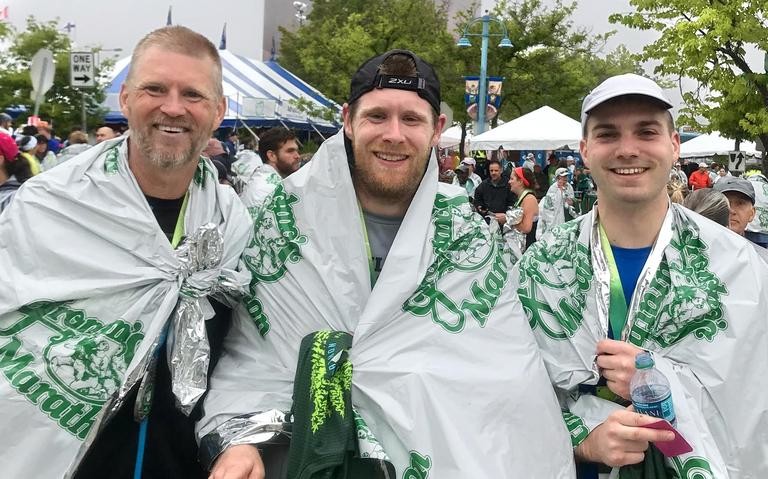
“It was very interesting running the course backwards, especially when the bars had people filing out. You had an interesting crowd," Strand said in a 2012 News Tribune story.
Strand gets to see things other marathoners don’t: the race course waking up and volunteers getting ready, and some of the aid station captains are there every year.
He has heard his fair share from passersby about going the wrong way, and it happens even more now.
“They've all learned their lines,” he said with a laugh.
The Missouri man, formerly of St. Paul, grew up hearing about Grandma’s, but on New Year’s Eve before his 40th birthday, he registered for it.
He trained for six months and made every mistake.
“There’s euphoria. You hit new distance markers … you get this in your mind that you are invincible. The next day, you wake up, and you have plantar fasciitis or shin splints or your knee hurts, and you very quickly realize you aren't,” Strand said.
But you slow down, heal up, maybe bike for a while and you get back to running, he added.
Strand recalled the end of his first Grandma’s Marathon: “As I was enjoying the runner’s high, my kids reminded me that there were three 70-year-olds that beat me that day. It brought me down to earth; they’re really good at doing that.”
Strand said tying training into a race is one way to make it fun. He averages about 2,500 miles a year; that’s typically 7 miles a day, but sometimes, it’s 100 miles at a time.
Strand ran his first five Grandma’s Doubles solo, save for one year with Ben McCaux. Since then, he has been joined by his son, Zach.
They’ve tackled the Double three times; they ran their first father-son Leadville 100 in 2017.
In a 2017 video of the latter, the pair are seen trekking across Colorado terrain.
“Zach’s doing great,” Eric Strand says into the camera. “He’s fun to run with. As long as he keeps his fueling and hydration in good shape, he’s down for a buckle.”
They have tallied 25 marathons and ultramarathons together.
“He’s better than me now, which he’s quick to point out,” he said.
During training, Strand mostly listens to audiobooks, but, if he needs motivation, there’s Britney Spears and Miley Cyrus — music his kids listened to when they were teens.
As for his powerhouse song, that’s Eminem’s “Lose Yourself.”
He doesn’t listen to anything during races; he likes to interact with others.
His race-day eats were pretty standard: Gatorade and gels; but for ultramarathons, his wife brings him a cheeseburger at mile 50.
Saturday will be his 22nd Grandma’s Marathon — his 10th Grandma’s Double — and there’s no end in sight.
There’s a cadence to the year — the Boston Marathon in April, Leadville in August, Chicago in October, a mix of others — but June will always be Duluth.
“There will be a day when I won’t be able to do this,” Strand said, “but it’s not today, and hopefully won’t be for a long time. I hope to enjoy it as long as I can.”
by Melinda Lavine
Login to leave a comment
Grandmas Marathon
Grandma's Marathon began in 1977 when a group of local runners planned a scenic road race from Two Harbors to Duluth, Minnesota. There were just 150 participants that year, but organizers knew they had discovered something special. The marathon received its name from the Duluth-based group of famous Grandma's restaurants, its first major sponsor. The level of sponsorship with the...
more...Aliphine Tuliamuk has signed with Gatorade
Ten-time USA Track and Field national champion and winner of the U.S. Olympic Marathon trials, Aliphine Tuliamuk, announced Friday that she has signed with Gatorade as she heads toward the Tokyo Olympics. She will join other notable athletes on the company’s endurance roster, including multiple American record holder Molly Huddle and Canadian triathlete Lionel Sanders.
Tuliamuk has had a whirlwind of a year, starting with her win at the U.S. Olympic Marathon trials on Feb. 29, 2020. Just under a year later, on January 13, 2021, she and her partner welcomed their first child. Now, the NAZ Elite runner is preparing to compete in the Olympic Marathon, a mere six months after giving birth.
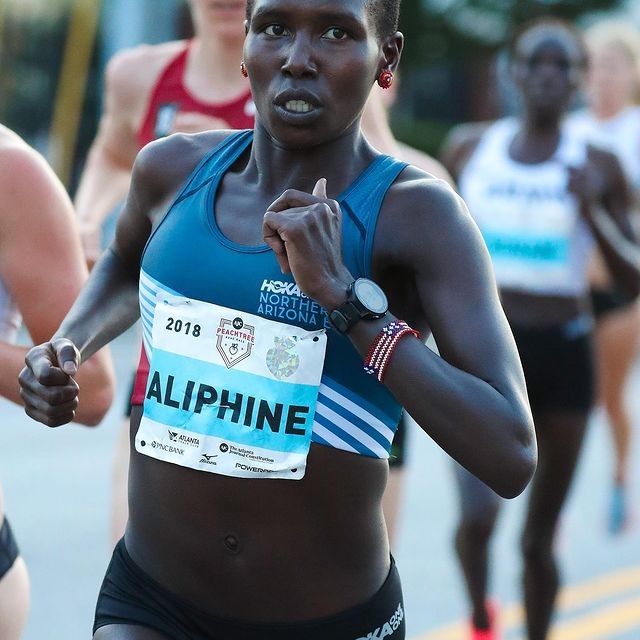
“I’m so excited to announce that I’m a new member of the Gatorade Endurance family!” says Tuliamuk. “Over the past 12 years Gatorade is a brand I’ve trusted to fuel my body, and when I started running long distance, I fell in love with the Gatorade Endurance products. I look forward to sharing how the gels and chews are helping me perform at my best by providing critical fluids and nutrients while training for the summer games.”
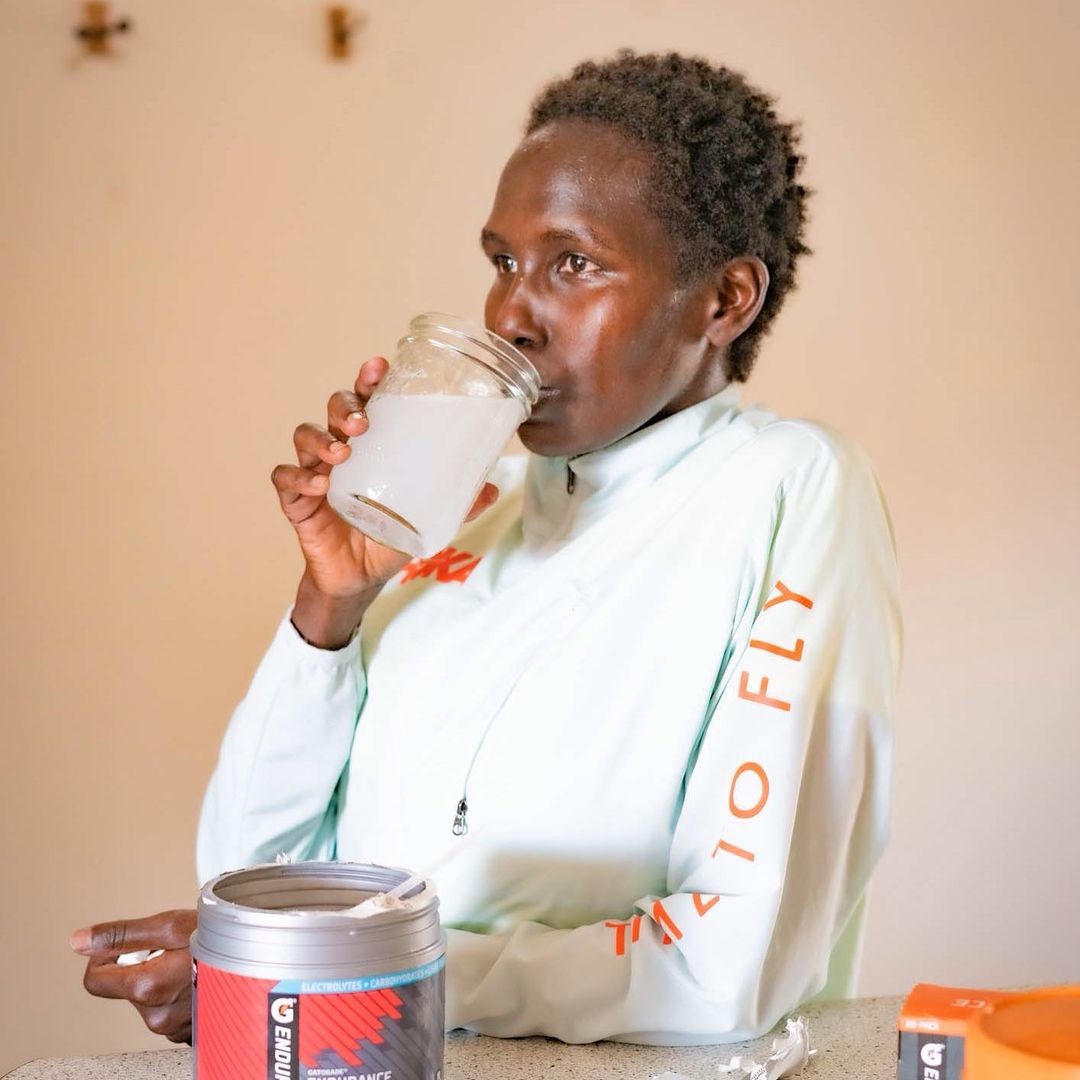
Jeff Kearny, the company’s head of global sports marketing, calls Tuliamuk a “perfect partner” as a national champion and a mother, and describes her as an inspiration, particularly for women. Since she has already been using Gatorade’s endurance products for years, she also has an authentic tie to the brand.
As the Olympics draw near, running fans everywhere will be eagerly awaiting to see how Tuliamuk fares on race day, and will no doubt be cheering her on.
by Brittany Hambleton
Login to leave a comment
Tokyo 2020 Olympic Games
Fifty-six years after having organized the Olympic Games, the Japanese capital will be hosting a Summer edition for the second time, originally scheduled from July 24 to August 9, 2020, the games were postponed due to coronavirus outbreak, the postponed Tokyo Olympics will be held from July 23 to August 8 in 2021, according to the International Olympic Committee decision. ...
more...High school runner crawls across finish line to sub-9 two-mile
Gavin Sherry collapsed right before the finish line and crawled to an 8:57.67
Last weekend, the track world was impressed yet again by another incredible performance by high school phenom Hobbs Kessler, who closed a two-mile race with a 55-second final lap, crossing the finish line in first place in 8:39.04. Given that Kessler was 10 seconds ahead of the second-place finisher, it would have been easy to miss the action that happened behind him, but those who stuck around got to watch as Connecticut runner Gavin Sherry collapsed in the final few metres of the race and crawled to the finish line in 8:57.67.
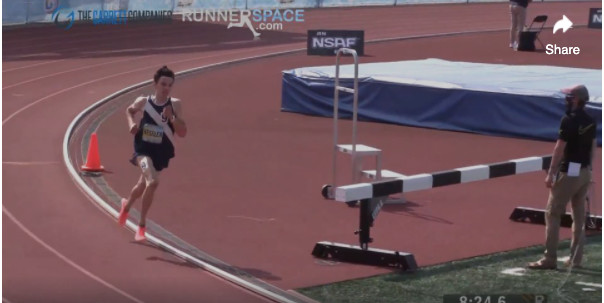
It looked as though Sherry would cross the line in third place, but his legs gave out just before the finish. While he struggled to get back on his feet, two other athletes passed him and he managed to stumble across the finish line in fifth, before collapsing immediately upon completing the race. While this is likely not the finish the high school senior was looking for, it was a demonstration of the athlete’s grit and determination. Despite his struggle, he was still able to go sub-nine minutes in the race, an impressive time for a high school athlete in and of itself.
You may not have heard of Sherry, but he has been one of the top high school runners in Connecticut for the last couple of years. He boasts an indoor two-mile PB of 8:53, which he set during his first-ever indoor track season as a sophomore last February, and last year he was named the Gatorade Connecticut Boys Cross Country Runner of the Year.
In an interview last year with a local newspaper, Sherry explained that he didn’t feel (at the time) as though he’d pushed himself to his limit, but that trying to find out where that limit is is what he enjoys so much about track.
“To me, that’s why I love the sport,” Sherry said. “It’s really just trying to explore how far you can push yourself before you break. So far I haven’t really had an experience where I’ve broken.”
It appears as though last weekend, he did finally have that experience, but he proved in that moment that he has the ability to push through it. The race may not have been a personal best for Sherry, but with the amount of determination he displayed, he will certainly be one to watch over the coming years.
by Running Magazine
Login to leave a comment
Meet the runner who set the Guinness World Record for distance run while juggling
Five hours, 21 minutes, and 23 seconds. 117 laps around a track. Zero balls dropped.
David Rush is no stranger to Guinness World Records. He’s been going after them for years as a way to boost his efforts promoting STEM education in schools—he thought kids would be inspired if they saw a world-record holder.
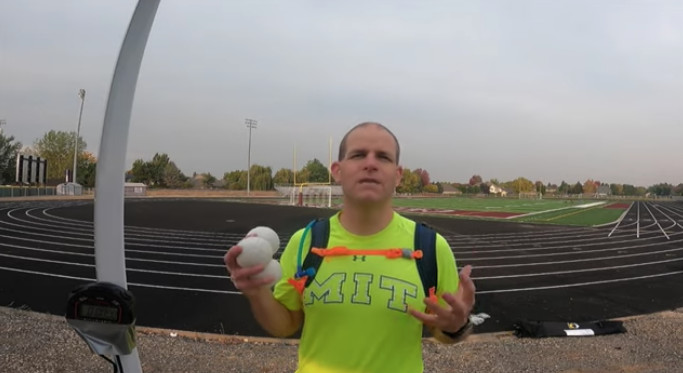
Rush, a longtime juggler, holds records in things like fruit sliced in the air by juggled knives and the most Oreo cookies stacked in 30 seconds. However, joggling—running while juggling—was always at the forefront of his mind after going to school with longtime joggling record-holder Zach Warren.
'The main purpose of these records is to show kids that if you believe in yourself, you can accomplish anything,' Rush told Runner’s World. 'Even though some records still stand, you shouldn’t give up if you miss it. You can become anything you want.'
He started running around 2005, when he got competitive with his brother, who was doing a Thanksgiving half marathon that year. Since 2014 though, he really picked up his running efforts, especially when he started to get into joggling more.
Knowing he didn’t necessarily have the speed to capture various speed records, he decided to focus on the joggling distance record—which meant he had to run 15.5 miles while juggling without dropping a single ball.
Most joggling records—which are generally the fastest time covering a certain distance—are fairly lenient when it comes to drops. As long as a joggler returns to spot of a drop before continuing, the record is valid. But the distance record is different. If there’s a drop, the attempt is over, whether that’s one mile in or 20 miles in.
Another tricky element of this attempt is that a runner cannot accept outside assistance, including being given food or drink, during the attempt. And when your hands are occupied with juggling, nutrition becomes tricky.
'I figured I could go 20 miles without food or water,' Rush said. 'My goal, though, was a marathon if I could do it, so I had to think of a way to get something without breaking the rules.'
With this in mind, Rush opted to wear a Camelbak for the duration of the run, and he tied the tube to his face so he could drink the mix of Gatorade G2 and water he had without using his hands. That meant the straw was in his mouth for the entire run.
Rush’s record attempt, on October 10, went off smoothly. With a camera filming the action and two friends watching as witnesses, he made his way around and around the Centennial High School track in Boise, Idaho.
The juggling didn’t slow down Rush; instead, the bouncing of the Camelbak forced him to shorten his stride and average a 11:19 mile. Still, he cruised through the distance record in 2 hours and 32 minutes, and he just kept going from there.
After over five hours and more than 100 laps, Rush started to wear down. He passed the marathon distance, but a few miles later, a ball finally hit the track, ending his attempt.
Not only did Rush complete his first ultramarathon, but he also crushed the world record by running 29 miles in 5 hours, 21 minutes, and 23 seconds.
'This is one I would consider doing again,' Rush said. 'I was thrilled with 29 miles, but now I’m wondering, How much farther could I go?'
Rush ended up with only one wound from the race. As he ran, the Camelback straw repeatedly bumped into his mouth, causing a blister to form in his mouth that bled a bit during his run.
Despite the usual soreness from running such a distance followed, Rush has since attempted two more world records—the number of times spitting a ping pong ball at a wall and catching it in his mouth, and fastest blindfolded juggling. He also has plans for more joggling attempts, potentially before the end of the year.
by Runner’s World
Login to leave a comment
how to prevent intestinal distress
While some runners have cast iron stomachs and few concerns about what and when they eat before they exercise, others live in fear of pre-exercise fuel contributing to undesired pit stops during their workouts. Be it stomach rumbling, a need to urinate or defecate, reflux, nausea, heartburn, or side stitch, how to prevent intestinal distress is a topic of interest to athletes with finnicky guts. Here are tips to help you fuel well before and during runs, races and workouts while reducing the risk of gastro-intestinal (GI) distress.
• Stay calm. Being anxious about intestinal issues can exacerbate the problem. Think positive. Trust that your gut is adaptable and trainable. Record what, when, and how much you eat, as well as the duration and intensity of your runs, and use that data to help you figure out what foods and fluids settle best. Building body trust can reduce anxiety—and that can help reduce GI issues. That said, pre-competition nerves can affect any runner, regardless of GI hardiness!
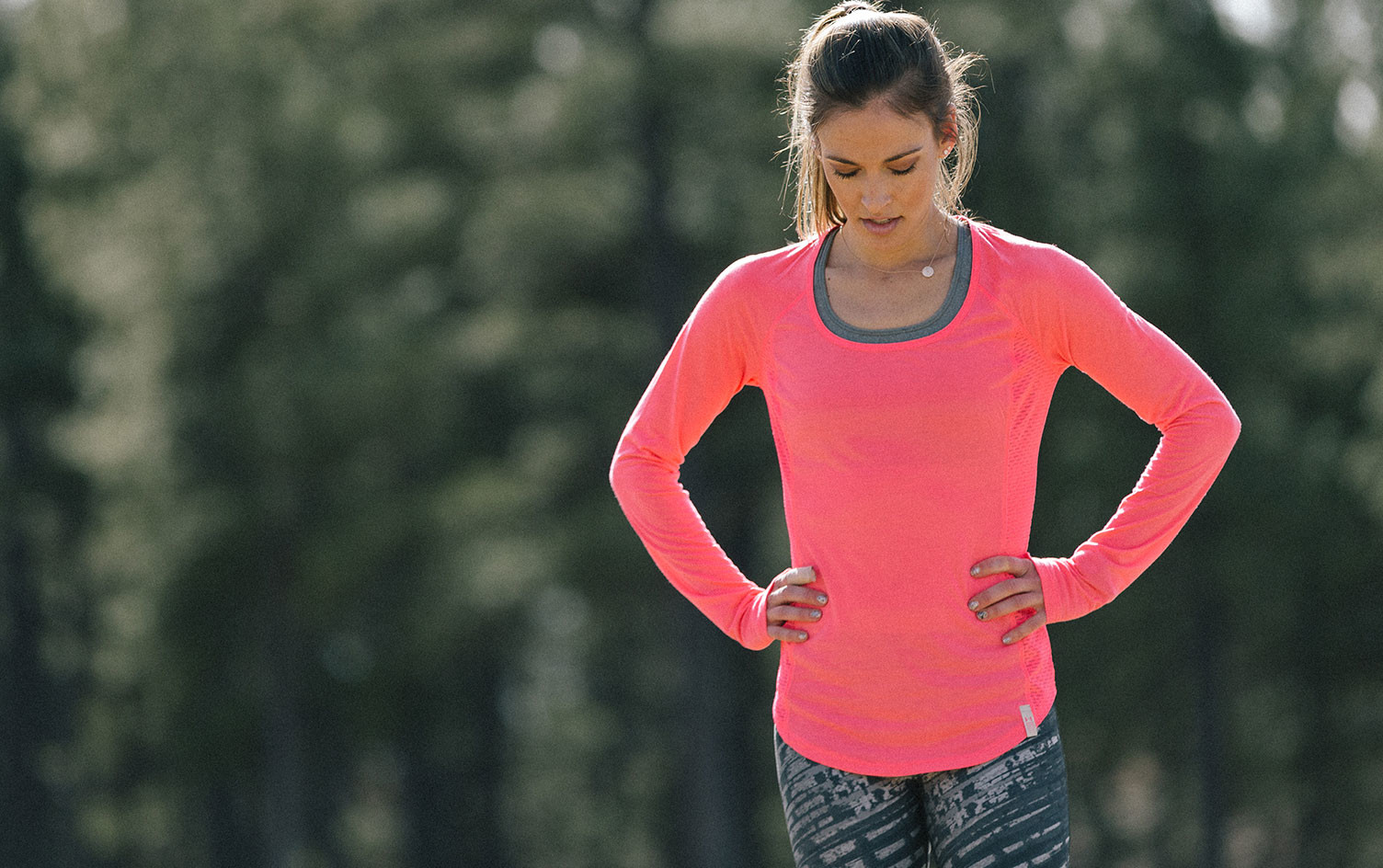
• Runners are more likely to suffer GI issues than bicyclists or skiers. With running comes intestinal jostling; the longer the intestines are jostled, the higher the risk of upset. Ultra-runners know this too well…

• If you experience gut issues every day—even when you are not exercising, you want to talk with a GI doctor. Celiac disease, Crohn’s, ulcerative colitis, and blood in your stool need to get checked out now! They are serious issues and differ from exercise-induced GI problems.
• The higher the intensity of your runs, the higher the risk of intestinal distress. Add heat and anxiety to a hard workout, and many runners experience transit trouble. During hard runs, blood flow diverts away from the gut to transport oxygen and glucose to the working muscles and carry away carbon dioxide and waste products.
• Low intensity runs are less problematic. The GI tract gets adequate blood flow, can function relatively normally and digests, absorbs, and metabolizes pre-run fuel. Runners tend to have fewer GI issues on easy training days that offer better blood flow to the intestines, as well as lower body temperature and less anxiety.
• Carbohydrate is the fuel that is easiest-to-digest before and during long runs. Carbohydrate gets broken down into simple sugars in the stomach, then absorbed into the bloodstream from the small intestine. Specific transporters carry each sugar molecule (such as glucose or fructose) across the intestinal wall. Hence, consuming a variety of carb-based fuels helps minimize a “backlog” if all the transporters for, let’s say, fructose get called into action.
• With training, the body creates more transporters to alleviate any backlog. That’s one reason why you want to practice pre-run fueling during training sessions. Your body gets the chance to activate specific transporters. The foods and fluids you consume before and during training should be the same ones you’ll use for the race. Some popular carb-based snacks for before and during long runs include fruits (banana, applesauce), vegetables (boiled potato, roasted carrots), and grains (sticky rice balls, pretzels, pita)—as well as commercial sports foods (sport drinks, gels, chomps).
• Runners who experience gas and bloat want to familiarize themselves with FODMAPs —Fermentable (i.e., gas-producing) Oligo-, Di-, Mono-saccharides And Polyols. These are sugars and fibers that some people have trouble digesting. Commonly eaten sport foods high in FODMAPs include milk (apart from lactose-free milk), bread, pasta, onions, garlic, beans, lentils, hummus, apples, and honey.
By choosing a low FODMAP menu for a few days before race day, a runner might be able to reduce, if not avoid, digestive issues. (Of course, you want to first experiment during training to be sure the low FODMAP pre-race foods settle well.) Low FODMAP foods include bananas, grapes, cantaloupe, potato, rice, quinoa, cheddar cheese, Parmesan cheese, and maple syrup. Some low FODMAP commercial sport fuels include (but are not limited to) Skratch Labs Hydration mix, peanut butter and orange Hammer Gels, Gatorade thirst quencher, Gu Chews, strawberry lemonade Infinit Essential Hydration, and Tailwinds Endurance Fuel. For more information on FODMAPS, refer to www.KateScarlata.com.
• Fatty foods (butter, cheese, nuts) tend to slowly leave the stomach and are metabolized slower than carb-rich foods. If you will be running for less than two hours, think twice before reaching for a handful of nuts or a chunk of cheese for a quick fix as you dash out the door. A banana or slice of toast will digest quicker and be more available for fuel.
Eating fatty foods on a regular basis can speed-up gastric emptying a bit, but you won’t burn much pre-run dietary fat during your workout unless you are a marathoner or ultra-runner who will be exercising for more than 3 hours. In that case, a bagel with nut butter or cheese will offer long-lasting fuel.
• Some runners chronically under-eat. This includes those trying to lose weight and others with anorexia. Under-eating can impair GI function; the gut slows down with inadequate fuel. Delayed gastric emptying means food stays longer in the stomach and can feel “heavy” during runs (as well as is less available for fuel). Slowed intestinal motility easily leads to constipation, a common problem among under-eaters.
• Given each runner has a unique GI tract, be sure to experiment during training to learn what works best for you and your gut. Eat wisely and enjoy miles of smiles.
by Colorado Runner
Login to leave a comment
The best ways to reduce recovery time between runs
One of the best ways to get exercise without having to commit to heavy equipment or changing gym schedules is running. Running has numerous health benefits. However, it’s easy to feel worn out and sore after a long run. Whether you’re a seasoned runner or are new to the experience, here are some tips to help your body bounce back faster and feel ready for your next run sooner.
Warm Up and Cool Down:

It’s crucial to stretch before and after your workout to avoid extra strain on your muscles. A simple 10-15 minute stretching session before you begin running will prep your body for the upcoming strain. An equal amount of stretching afterwards will help your muscles to relax back to their normal resting state without risking a shock.
An ideal stretch to warm up or cool down will focus on the core muscles you’ll use during your run. Try focusing on your quads, hamstrings, hip flexors, glutes, calf muscles, and ankles.

Massage Your Muscles:
Who doesn’t love a nice massage on any day? After intense exercise, it feels incredible to work out any kinks and stiffness that you may be feeling. Even easier than booking an appointment in-person is using a handheld massage gun. Not only can you focus the pressure wherever you need some extra attention, but you can utilize the device at any time and fit a massage into any busy schedule.
Different models of massage guns come with varying head attachments and pulsation levels to get the perfect massage every time. Since it is also only a one-time payment, using one of these devices is far more cost-effective than booking a professional masseuse every time you’re feeling sore.
Stay Hydrated:
Make sure you’re drinking an appropriate amount of water both before and after your run. If you plan on a long run, perhaps bring a water bottle along with you. As you exercise, your body will work up a sweat and begin stretching different muscles in your body. If not properly hydrated, you’ll feel tired faster, and your muscles will take longer to bounce back to normal.
After your run, you’ll want to replenish your electrolytes as well with Gatorade, Powerade, or another electrolyte-packed drink.
Eat Something Healthy:
Having a small snack directly after your run will help your body to replenish some nutrients it used during your workout. It’s also helpful to eat a well-balanced meal one to two hours after your run to help your muscles rebuild themselves. An ideal meal will have plenty of protein, carbohydrates, and hearty vegetables.
If you’re planning on exercising for an extended period, granola or fresh fruit can be an easy way to get a little energy boost during your workout.
Soak in the Tub:
Whether you want to take the plunge in an ice bath to reduce potential inflammation or soak in a hot tub to relax your muscles, both options will have excellent effects on your body post-run. Placing Epsom salts in a hot bath can be incredibly relaxing. It reduces swelling, addresses general soreness, and provides a little aromatherapy as well.
Conclusion:
Running can have significant benefits and lead to a longer life. It is an effective and cost-efficient way to exercise, but the activity-related soreness can be a discouraging factor for deciding how frequently to run. With these easy tips on caring for your body before and after a run, it’s super easy to avoid strain and help your body feel its best!
by Colorado runner
Login to leave a comment
Race organizers of the Credit Union Cherry Blossom Run cancelled, Free Virtual Race Planned
Race organizers of the Credit Union Cherry Blossom Run - The Runners' Rite of Spring® for the past 47 years - announced on Saturday the cancellation of all of the activities over race weekend, April 3-5, including the Health and Fitness Expo, the Kids' Run, 10 Mile Run and 5K Run-Walk. They announced today preliminary plans for a free virtual race, details of which are still to be determined.
Event director Phil Stewart said, "We've faced heat, cold and high winds at the event since 1973, but never a broad health threat like the COVID-19 virus. The organizing committee held out hope that the virus might peak and start to decline in the three weeks that remained before race day. However, when the warnings by Federal and local officials along with Public Health Agencies showed that we were still on the upslope of the virus, we knew we needed to take action - however painful - to minimize our participants' exposure at our event."
The event will offer full refunds to all participants but is encouraging entrants to donate their entry fee to the official race charity, Children's Miracle Network Hospitals.

Event Director Phil Stewart noted: "Since 2002, over $9.5 million has been raised on behalf of 170 Children's Miracle Network Hospitals, including $385,000 from last year's event. We would like to carry on the legacy of enabling Credit Union Miracle Day to make a sizeable contribution to Children's Miracle Network Hospitals, even though the annual tradition of the race itself will be interrupted this year."
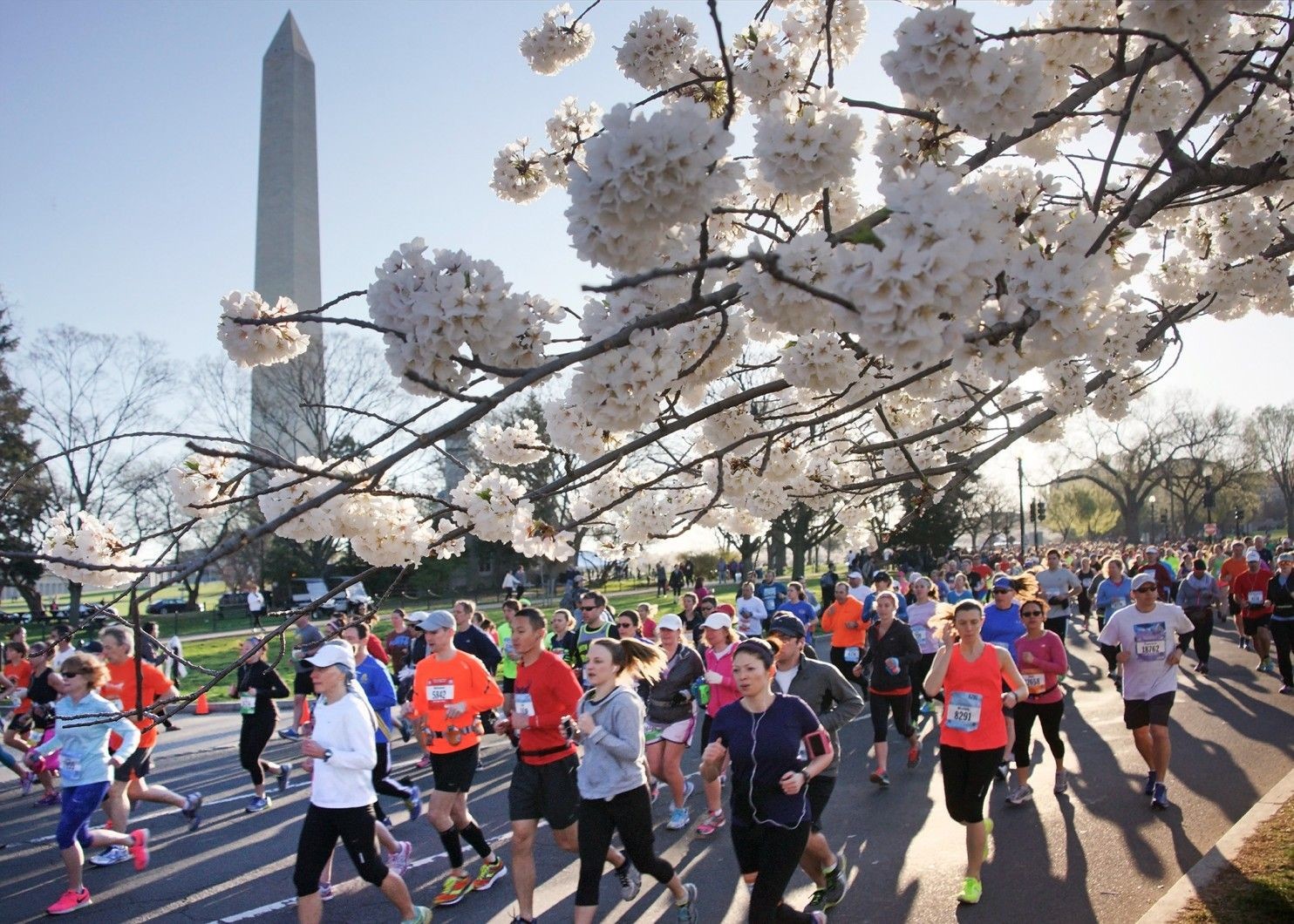
Stewart went on to add: "If a significant number of runners were to choose to donate their entry fees, we just might be able to break through the $10 million dollar mark."
The email sent to all registered runners on Saturday outlined three options for participants to choose from: 1) donating their entry fee to Children's Miracle Network Hospitals, 2) getting a full refund of their entry fee, or 3) offering a guaranteed entry (lottery exemption) into the 2021 event and no refund of the 2020 entry fee.
The entry process for next year's event, scheduled for April 11, 2021 (a week later than usual due to Easter falling on the first Sunday in April), will be conducted by lottery scheduled for December 1-12. Runners choosing one of the first two options outlined above will have to apply to the lottery and pay the 2021 registration fee. Runners choosing the option of guaranteed entry will also have to pay the 2021 registration fee but will not need to enter the lottery. Runners will have until April 15th at 11:59 p.m. to make their choice using an online form that will be made available to runners over the next few days. With more guaranteed entry codes being made available through this process, Stewart anticipates that fewer slots will be available through the lottery itself, something he suggests runners should think about as they make their choices.
In recognition of the countless miles logged by 16,000 runners entered in the 10 mile and 2,000 in the 5K Run-Walk, the organizers will conduct a free virtual run as a way for runners to celebrate all of the preparation they have done in anticipation of the race. Stewart said: "Over 12,000 had signed up for free training programs hosted by Coach Kirt West and Runcoach, and we wanted to provide an opportunity for them to celebrate and cap off their training." Details about the Virtual Run will be posted at www.cherryblossom.org.
About the Credit Union Cherry Blossom Ten Mile.- The Credit Union Cherry Blossom Ten Mile, organized by Cherry Blossom, Inc., a 501c(3) chapter of the Road Runners Club of America, is known as "The Runner's Rite of Spring®" in the Nation's Capital. The staging area for the event is on the Washington Monument Grounds and the course passes in sight of all of the major Washington, DC Memorials. The event serves as a fundraiser for the Children's Miracle Network Hospitals, a consortium of 170 premier children's hospitals across North America. About one-third of the funds raised support Washington, DC's own Children's National ("Children's Hospital"). The event also funds two $5,000 Road Runners Club of America "Roads Scholar" grants designed to support up-and- coming U.S. distance running talent.
The Credit Union Cherry Blossom Run is also part of the National Cherry Blossom Festival, "America's Greatest Springtime Celebration."
Credit Union Miracle Day, Inc., a consortium of credit unions and credit union suppliers in partnership with CUNA Mutual Group, PCSU and CO-OP Financial Services, is the title sponsor of the Credit Union Cherry Blossom Ten Mile Run, 5K Run-Walk and Kids' Run. Presenting sponsors include ASICS, the official shoe and apparel sponsor; Garmin, the presenting technology sponsor; Gold's Gym, presenting sponsor of the race pace groups; and Med Star Health, presenting sponsor of the Fall Kickoff Reception. Supporting sponsors include E-Trade, Gatorade, Honey Stinger, Mamma Lucia, Potomac River Running, Suburban Solutions and UPS.
The event is a proud member of the PRRO Circuit (PRRO.org), a series of major non-marathon prize money road races in Tampa, FL; Washington, DC; Spokane, WA; and Utica, NY. The circuit is committed to a drug-free sport and funds drug testing at all circuit events in compliance with the standards of international and U.S. drug testing authorities.
Login to leave a comment
Cherry Blossom Ten Mile Run
The Credit Union Cherry Blossom is known as "The Runner's Rite of Spring" in the Nation's Capital. The staging area for the event is on the Washington Monument Grounds, and the course passes in sight of all of the major Washington, DC Memorials. The event serves as a fundraiser for the Children's Miracle Network Hospitals, a consortium of 170 premier...
more...Scotiabank Toronto marathon switches from Gatorade to Nuun Endurance for their marathon event
Nuun has been updating its various sports hydration products, and Nuun Endurance, designed specifically those expecting to be out on the course for more than 90 minutes, will replace Gatorade at the Scotiabank Toronto Waterfront Marathon’s water stations on October 20.
Some commercial sports drinks contain a lot of sugar, artificial dyes and unnecessary chemicals–things that more health-aware athletes are trying to get away from, since they do nothing to improve either performance or health (and may do the opposite). Nuun unveiled its new Sport product earlier this year, and now endurance athletes in Canada can enjoy Nuun Endurance, formulated with their specific needs in mind.
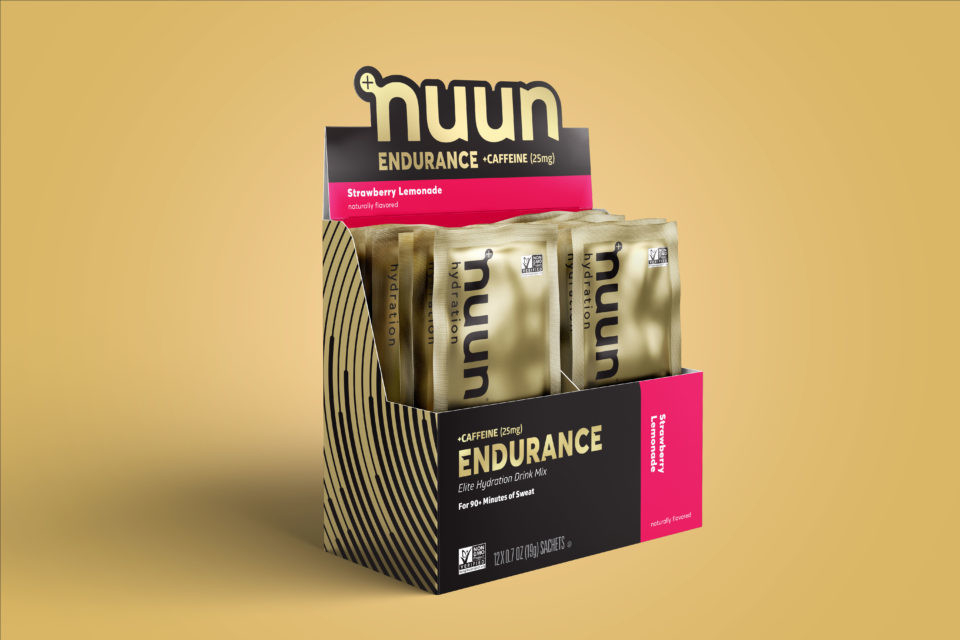
According to Nuun, “as more research into hydration science demonstrated the ineffectiveness of traditional sports drink formulas, runners demanded healthier options with cleaner ingredients designed specifically to hydrate for high-intensity activities.”
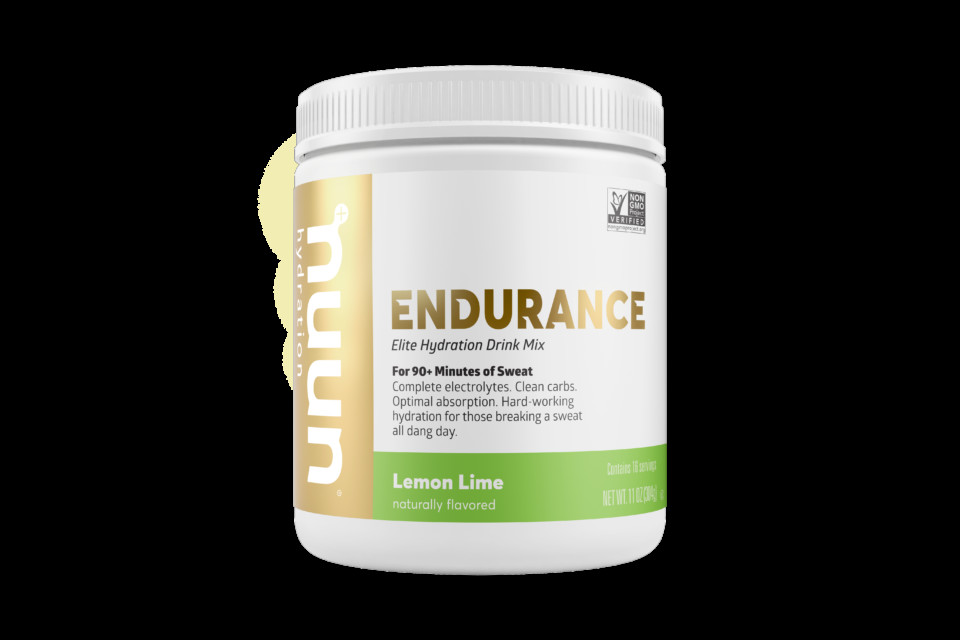
Formulated as a powdered mix rather than a tab, Nuun Endurance is non-GMO and Informed Sport certified (Informed Sport is a third-party quality assurance program for sports nutrition products), kosher, vegan and gluten-free–which means you can rest assured there’s no funny stuff in your hydration product. It comes in four flavors: Mixed Berry, Citrus Mango, Lemon Lime and caffeinated Strawberry Lemonade, and is available in 16-serving tubs or single-serving packets. (The Strawberry Lemonade flavor contains 25 mg of caffeine derived from organic green coffee beans.)
Nuun Endurance’s delivers just enough electrolytes to optimize hydration, and its low sugar content is designed to minimize the potential for gastric distress.
by Anne Francis
Login to leave a comment
TCS Toronto Waterfront Marathon
The Scotiabank Toronto Waterfront Marathon, Half-Marathon & 5k Run / Walk is organized by Canada Running Series Inc., organizers of the Canada Running Series, "A selection of Canada's best runs!" Canada Running Series annually organizes eight events in Montreal, Toronto and Vancouver that vary in distance from the 5k to the marathon. The Scotiabank Toronto Waterfront Marathon and Half-Marathon are...
more...Maybe including pickles and pickle juice in your daily diet will help you as a runner?
While pickles are incredibly polarizing, those who like them really love them. And whether your favorite is a deli-counter dill or a few slices on a sandwich, it's hard to deny that pickles are surging in popularity right now. And for good reason—they're a healthy snack.
Lots of runners are eating pickles and drinking the juice regularly too. Both Michael Anderson and Bob Anderson from My Best Runs have included pickles in their regular daily diet. "Pickle juice gives me extra oomph," says Michael Anderson who has been running for over 40 years. "The juice is perfect to add to a water bottle for runs over one hour. Also it really helps me with recovery helping with cramping and hydration." Michael is currently running about 40 miles per week.
"Michael turned me on to the benefits of drinking pickle juice and eating pickles. I have always loved pickles but now I include both in my daily diet,” says My Best Runs director and lifetime runner Bob Andeson.
"For sure it helps with recovery but also it is helping me get closer to my ideal racing weight. It might be partially mental but it seems to work. I just feel heathlier including pickles/juice in my daily diet." 71 year-old Bob Anderson is currently training on average 35 miles weekly and racing at sub 8 minute/mile pace.

So what about this juice? Here's everything you need to know about the brine and all the reasons why you should be drinking it.
1. It can relieve muscle cramping.
Pickle juice has been proven to ease muscle aches and pains. Drinking the stuff after workouts became so popular at one time that Gatorade nearly launched its own version of the briny stuff.
2. Taking pickle-back shots is crazy fun.
If you've never had one of these, you aren't living. Outside of dancing on a table, it's quite possibly the silliest thing you'll ever do at a bar but it's one of those kitschy, "Southern" gimmicks that you have to try at least once. Who knows, maybe you'll learn to love them and get all your friends on board, too.
3. It keeps you hydrated for longer.
Sipping plain water is great, but a drink that contains both sodium and potassium is ideal because it will help you get hydrated faster and remain that way. They're both electrolytes that you lose when you sweat and pickle juice contains them both.
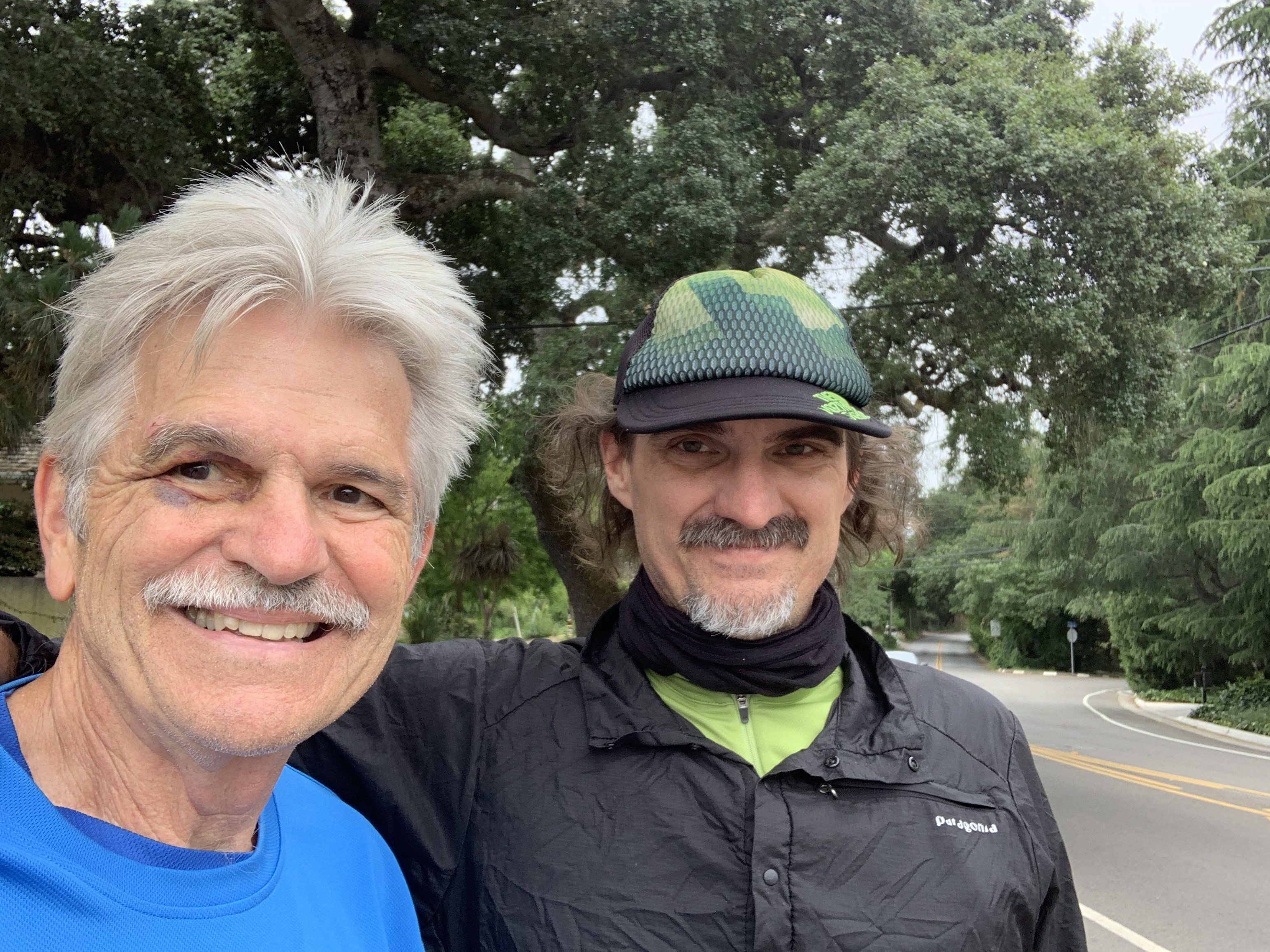
4. It's very budget-friendly.
Pickle juice can replace expensive, sugary sports drinks. And sometimes it's even free if you keep a jar of pickles in the fridge. You can even make your own by pickling cucumbers in vinegar, garlic, and salt.
5. It's more readily available than ever.
If your main argument against drinking pickle juice is that you'd have to do so out of the jar, then you have no more excuses. The briny stuff is now available in canned form for your convenience.
6. It's vitamin- and antioxidant-rich.
Pickle juice contains a decent amount of antioxidants and vitamins C and E, which help boost your immune system function, among other health-boosting roles in your body.
7. It can help you lose weight.
According to a study from Bioscience, Biotechnology, and Biochemistry, consuming vinegar—the main ingredient in pickle juice—every day can promote healthy weight loss.
8. It keeps your blood sugar regulated.
So instead of dumping that leftover liquid from your pickle jar down the drain, consider saving it for future use.
You might even find yourself enjoying the salty flavor. Things can taste differently after you exercise than they do normally. So even if pickle juice doesn’t sound amazing right now, maybe it will hit the spot after your next workout.
Even if you don’t ever love the taste, you may end up deciding that drinking pickle juice is worth it for the health benefits.
Login to leave a comment
Your training for Boston is done and now the only thing left to do is run the 26.2 miles on Monday
by Bob Anderson
Login to leave a comment
It is going to be tough, I really want this, at least to try says a boy (16) who wants to run his first half
Login to leave a comment
Katelyn Tuohy is First underclassman to win Gatorade's title
Login to leave a comment
Top 3 Finalists For Girls National Cross Country Runner Of The Year
Login to leave a comment


